-
 @ c9badfea:610f861a
2025-05-08 23:06:09
@ c9badfea:610f861a
2025-05-08 23:06:09- Install VLC Media Player
- Open the app, navigate to More and tap New Stream
- Enter
https://iptv-org.github.io/iptv/index.m3uin the network address field and tap the arrow - Enjoy the global IPTV channel playlist
🔗️ Here is the stream URL as plain text: https://iptv-org.github.io/iptv/index.m3u
ℹ️ For playlists of specific countries, categories, or languages, visit IPTV-Org and see the Playlists section
ℹ️ You can find an overview of all available IPTV channels per country here
-
 @ 5d4b6c8d:8a1c1ee3
2025-05-08 22:57:55
@ 5d4b6c8d:8a1c1ee3
2025-05-08 22:57:55Using a discussion style post to get better formatting on the nostr cross-post.
The Fed Leaves Fed Funds Rate at 4.5% as Economic Storm Clouds Gather
by Ryan McMaken
The Fed is now hemmed in by a rising risk of stagflation. It doesn’t know where the economy is headed, or is unwilling to take a position. At this point, “hope for the best” is Fed policy.
originally posted at https://stacker.news/items/975059
-
 @ 6fc114c7:8f4b1405
2025-05-08 22:55:57
@ 6fc114c7:8f4b1405
2025-05-08 22:55:57In the realm of cryptocurrency, the stakes are incredibly high, and losing access to your digital assets can be a daunting experience. But don’t worry — cryptrecver.com is here to transform that nightmare into a reality! With expert-led recovery services and leading-edge technology, Crypt Recver specializes in helping you regain access to your lost Bitcoin and other cryptocurrencies.
Why Choose Crypt Recver? 🤔 🔑 Expertise You Can Trust At Crypt Recver, we blend advanced technology with skilled engineers who have a solid track record in crypto recovery. Whether you’ve forgotten your passwords, lost your private keys, or encountered issues with damaged hardware wallets, our team is ready to assist.
⚡ Fast Recovery Process Time is crucial when recovering lost funds. Crypt Recver’s systems are designed for speed, enabling quick recoveries — allowing you to return to what matters most: trading and investing.
🎯 High Success Rate With a success rate exceeding 90%, our recovery team has aided numerous clients in regaining access to their lost assets. We grasp the complexities of cryptocurrency and are committed to providing effective solutions.
🛡️ Confidential & Secure Your privacy is paramount. All recovery sessions at Crypt Recver are encrypted and completely confidential. You can trust us with your information, knowing we uphold the highest security standards.
🔧 Advanced Recovery Tools We employ proprietary tools and techniques to tackle complex recovery scenarios, from retrieving corrupted wallets to restoring coins from invalid addresses. No matter the challenge, we have a solution.
Our Recovery Services Include: 📈 Bitcoin Recovery: Lost access to your Bitcoin wallet? We can assist in recovering lost wallets, private keys, and passphrases. Transaction Recovery: Mistaken transfers, lost passwords, or missing transaction records — let us help you reclaim your funds! Cold Wallet Restoration: Did your cold wallet fail? We specialize in safely extracting assets. Private Key Generation: Forgotten your private key? We can help you generate new keys linked to your funds without compromising security. Don’t Let Lost Crypto Ruin Your Day! 🕒 With an estimated 3 to 3.4 million BTC lost forever, it’s essential to act quickly when facing access issues. Whether you’ve been affected by a dust attack or simply forgotten your key, Crypt Recver provides the support you need to reclaim your digital assets.
🚀 Start Your Recovery Now! Ready to retrieve your cryptocurrency? Don’t let uncertainty hold you back! 👉 Request Wallet Recovery Help Today!cryptrecver.com
Need Immediate Assistance? 📞 For quick queries or support, connect with us on: ✉️ Telegram: t.me/crypptrcver 💬 WhatsApp: +1(941)317–1821
Trust Crypt Recver for the best crypto recovery service — get back to trading with confidence! 💪In the realm of cryptocurrency, the stakes are incredibly high, and losing access to your digital assets can be a daunting experience. But don’t worry — cryptrecver.com is here to transform that nightmare into a reality! With expert-led recovery services and leading-edge technology, Crypt Recver specializes in helping you regain access to your lost Bitcoin and other cryptocurrencies.
 # Why Choose Crypt Recver? 🤔
# Why Choose Crypt Recver? 🤔🔑 Expertise You Can Trust\ At Crypt Recver, we blend advanced technology with skilled engineers who have a solid track record in crypto recovery. Whether you’ve forgotten your passwords, lost your private keys, or encountered issues with damaged hardware wallets, our team is ready to assist.
⚡ Fast Recovery Process\ Time is crucial when recovering lost funds. Crypt Recver’s systems are designed for speed, enabling quick recoveries — allowing you to return to what matters most: trading and investing.
🎯 High Success Rate\ With a success rate exceeding 90%, our recovery team has aided numerous clients in regaining access to their lost assets. We grasp the complexities of cryptocurrency and are committed to providing effective solutions.
🛡️ Confidential & Secure\ Your privacy is paramount. All recovery sessions at Crypt Recver are encrypted and completely confidential. You can trust us with your information, knowing we uphold the highest security standards.
🔧 Advanced Recovery Tools\ We employ proprietary tools and techniques to tackle complex recovery scenarios, from retrieving corrupted wallets to restoring coins from invalid addresses. No matter the challenge, we have a solution.
 # Our Recovery Services Include: 📈
# Our Recovery Services Include: 📈- Bitcoin Recovery: Lost access to your Bitcoin wallet? We can assist in recovering lost wallets, private keys, and passphrases.
- Transaction Recovery: Mistaken transfers, lost passwords, or missing transaction records — let us help you reclaim your funds!
- Cold Wallet Restoration: Did your cold wallet fail? We specialize in safely extracting assets.
- Private Key Generation: Forgotten your private key? We can help you generate new keys linked to your funds without compromising security.
Don’t Let Lost Crypto Ruin Your Day! 🕒
With an estimated 3 to 3.4 million BTC lost forever, it’s essential to act quickly when facing access issues. Whether you’ve been affected by a dust attack or simply forgotten your key, Crypt Recver provides the support you need to reclaim your digital assets.
🚀 Start Your Recovery Now!\ Ready to retrieve your cryptocurrency? Don’t let uncertainty hold you back!\ 👉 Request Wallet Recovery Help Today!cryptrecver.com
Need Immediate Assistance? 📞
For quick queries or support, connect with us on:\ ✉️ Telegram: t.me/crypptrcver\ 💬 WhatsApp: +1(941)317–1821
Trust Crypt Recver for the best crypto recovery service — get back to trading with confidence! 💪
-
 @ a5ee4475:2ca75401
2025-05-08 22:38:49
@ a5ee4475:2ca75401
2025-05-08 22:38:49list #foss #descentralismo
Nostr Games
- Chesstr - Chess 🌐 [source]
- Jestr - Chess [source] 🌐
- Snakestr - Snake game [source] 🌐
- DEG Mods - Decentralized Game Mods [info] [source] 🌐
- NG Engine - Nostr Game Engine [source] 🌐
- JmonkeyEngine - Java game engine [source] 🌐
Android
- Mindustry - Sandbox Tower-defence and RTS [source] 🤖
- SuperTuxKart - Mario Kart with Tux (linux penguin) [source] 🤖 | 🐧🪟🍎
- SolitaireCG - Solitaire Cardgames [source] 🤖
Rhythm
- Friday Night Funkin' - [source] [download] 🌐🐧🪟🍎
- Open Saber - Beat Saber VR like (requires a VR) [source] 🌐🐧🪟🤖
- RhythmAdventure - Osu! remake [source]
Voxel
- Luanti / Minetest - Minecraft-like voxel game and engine in Lua [info] [source]
- VoxeLibre / MineClone2 - Famous Luanti / Minetest mod [source] [source2]
- Veloren - Cubeword upgraded sandbox [source]
- Terasology - Minecraft-based vivid world [source]
- Reign of Nether - Minecraft RTS mod [source]
- Voxelands - [info] [source] [STOPED] 🐧🤖🍎
- New Fork: voxelands 🐧 *Voxelands ≠ Voxlands (closed source game)
Clone
- Pingus - Lemmings clone [source]
- FlappyBird - Flappy Bird clone [source]
Remake
- FreeDoom - Doom remake [source]
- Oolite - Elite remake [source]
- Q1K3 - Quake demake [source] 🌐
- AM2R - Metroid remake [source]
Inspired
- Boxhead2D - Single player top-down shooter based in the Boxhead 2Play 🐧🪟🍎
- Boxhead - Directx11 - Single player top-down shooter based in the Boxhead 2Play [source] 🌐
- OpenSuspect - Inspired by mafia and Among Us [source] 🐧🪟
- Xonotic - Inspired by Quake [source]
- Hedgewars - Inspired by Worms, but with hedgehogs [source]
- Secret Mayro Chronicles - Inspired by Super Mario [source]
- OpenRA - Communist strategy game inspired by Red Alert, Tiberian Dawn and Dune 2000 [source]
- OpenTTD - Based on Transport Tycoon Deluxe [source]
- AstroMenace - Spaceships shooter [source]
Strategy
- 0 A.D. - RTS [info] [source]
- Warzone 2100 - RTS [source]
- The Battle for Wesnoth - Turn-based fantasy strategy game [source]
FPS - First-Person Shooter
- Alien Arena - Fast-paced Sci-Fi FPS death match [info] [source] 🐧🪟🍎 [and FreeBSD 😈]
- Urban Terror - based on "total conversion" mod for Quake III Arena [info] [source] 🐧🪟🍎
- FreeHL - Rewrite of Half-Life: Deathmatch in QuakeC [source]
- FreeCS - Based in Counter-Strike 1.5 by FreeHL addon [info] [source] 🐧🪟🍎 [and FreeBSD 😈]
- Nexuiz Classic - retro deathmatch [source] 🐧🪟🍎
- AssaultCube - WWII layout [info] [source]
- OpenArena - clone of Quake III Arena [source]
- Warsow - Futuristic cartoonish world [source]
- World of Padman - Fun cartoonish shooter [info] [source] 🐧🪟🍎
- OpenSpades - A clone of Ace of Spades, with voxels, fully destructible terrain and plenty of game modes [source]
- Tremulous - Asymmetric team-based FPS with real-time strategy elements [source]
- Cube 2: Sauerbraten - A free multiplayer & single-player first-person shooter, the successor of the Cube FPS [info] [source]
- Quetoo (Q2) - old school death match [info] [slurce]🐧🪟🍎
- Red Eclipse 2 - sci-fi modern FPS arena [info] [source] 🐧🪟🍎
- BZFlag - Battle Zone capture the Flag game [info] [source] [source 2] 🐧🪟🍎
- The Darkmod [source] [source] [source 3]
- Wolfenstein: Enemy Territory - War as Axis or Allies in team-based combat
Original list with images in Medevel Website
Retro RPG
- Cataclysm: Dark Days Ahead - Post-apocalyptic survival - [source]
- Erebus - [source]
- FreedroidRPG - Tux against rebel bots [source]
- FreeDink - Dink Smallwood - Similar to classic Zelda [info] [source]
- Valyria tear - Based on the Hero of Allacrost engine [source]
- Fall of Imiryn [source]
- Hale - Tactical combat [source]
- IVAN: Iter Vehemens ad Necem - roguelike [source]
- Summoning Wars - 1 to 8 players [source]
- Flare - Action fantasy [source]
Educational
https://medevel.com/educational-games-26-993/
-
 @ a5ee4475:2ca75401
2025-05-08 21:57:12
@ a5ee4475:2ca75401
2025-05-08 21:57:12brasil #portugal #portugues #bitcoin
Brasil
-
Jericoacoara - Ceará nostr:nprofile1qqsdc47glaz2z599a7utq9gk2xyf6z70t7ddyryrnweyt32z4sdarfsppemhxue69uhkummn9ekx7mp00ex584
-
Rolante - Rio Grande do Sul nostr:nprofile1qqsdrks96vr7vc7frjflm8lmhwleslwzgjlkpyj4ahjhzgm4n8dh0qqprdmhxue69uhkymm4de3k2u3wd45ku6tzdak8gtnfdenx7qgcwaen5te0xycrqt3hxyhryvfh9ccngde6xsurgwqpz3mhxue69uhhyetvv9ujuerpd46hxtnfduhxppd6
-
Santo Antonio do Pinhal - São Paulo nostr:nprofile1qqsr5maylee9j77ce0es6tgmxj3pax2dlsuuptkn2stuj95jzqysulgpzemhxue69uhhyetvv9ujuurjd9kkzmpwdejhgqgjwaehxw309ac82unsd3jhqct89ejhxqgdwaehxw309ahx7uewd3hkca6zsjl
Portugal
- Ilha da Madeira - nostr:nprofile1qqsv45qvfz5vdzwn9478wzusyggjf44x3w7xk8f3cgpe4px44wgv77cpr3mhxue69uhkummnw3ezucnfw33k76twv4ezuum0vd5kzmqpz3mhxue69uhhyetvv9ujumn0wd68ytnzvuq32amnwvaz7tmwdaehgu3dwfjkccte9eshquqzhddc4
-
-
 @ 6ad3e2a3:c90b7740
2024-09-11 15:16:53
@ 6ad3e2a3:c90b7740
2024-09-11 15:16:53I’ve occasionally been called cynical because some of the sentiments I express strike people as negative. But cynical, to me, does not strictly mean negative. It means something more along the lines of “faithless” — as in lacking the basic faith humans thrive when believing what they take to be true, rather than expedient, and doing what they think is right rather than narrowly advantageous.
In other words, my primary negative sentiment — that the cynical utilitarian ethos among our educated classes has caused and is likely to cause catastrophic outcomes — stems from a sort of disappointed idealism, not cynicism.
On human nature itself I am anything but cynical. I am convinced the strongest, long-term incentives are always to believe what is true, no matter the cost, and to do what is right. And by “right,” I don’t mean do-gooding bullshit, but things like taking care of one’s health, immediate family and personal responsibilities while pursuing the things one finds most compelling and important.
That aside, I want to touch on two real-world examples of what I take to be actual cynicism. The first is the tendency to invoke principles only when they suit one’s agenda or desired outcome, but not to apply them when they do not. This kind of hypocrisy implies principles are just tools you invoke to gain emotional support for your side and that anyone actually applying them evenhandedly is a naive simpleton who doesn’t know how the game is played.
Twitter threads don’t show up on substack anymore, but I’d encourage you to read this one with respect to objecting to election outcomes. I could have used many others, but this one (probably not even most egregious) illustrates how empty words like “democracy” or “election integrity” are when thrown around by devoted partisans. They don’t actually believe in democracy, only in using the word to evoke the desired emotional response. People who wanted to coerce people to take a Pfizer shot don’t believe in “bodily autonomy.” It’s similarly just a phrase that’s invoked to achieve an end.
The other flavor of cynicism I’ve noticed is less about hypocrisy and more about nihilism:
 I’d encourage people to read the entire thread, but if you’re not on Twitter, it’s essentially about whether money (and apparently anything else) has essential qualities, or whether it is whatever peoples’ narratives tell them it is.
I’d encourage people to read the entire thread, but if you’re not on Twitter, it’s essentially about whether money (and apparently anything else) has essential qualities, or whether it is whatever peoples’ narratives tell them it is.In other words, is money whatever your grocer takes for the groceries, or do particular forms of money have qualities wherein they are more likely to be accepted over the long haul? The argument is yes, gold, for example had qualities that made it a better money (scarcity, durability, e.g.) than say seashells which are reasonably durable but not scarce. You could sell the story of seashells as a money (and some societies not close to the sea used them as such), but ultimately such a society would be vulnerable to massive inflation should one of its inhabitants ever stroll along a shore.
The thread morphed into whether everything is just narrative, or there is an underlying reality to which a narrative must correspond in order for it to be useful and true.
The notion that anything could be money if attached to the right story, or any music is good if it’s marketed properly is deeply cynical. I am not arguing people can’t be convinced to buy bad records — clearly they can — but that no matter how much you market it, it will not stand the test of time unless it is in fact good.
In order to sell something that does not add value, meaning or utility to someone’s life, something you suspect they are likely to regret buying in short order, it’s awfully useful to convince yourself that nothing has inherent meaning or value, that “storytelling is all that matters.”
I am not against marketing per se, and effective storytelling might in fact point someone in the right direction — a good story can help someone discover a truth. But that storytelling is everything, and by implication the extent to which a story has correlates in reality nothing, is the ethos of scammers, the refuge of nihilists who left someone else holding the bag and prefer not to think about it.
-
 @ 57d1a264:69f1fee1
2025-05-08 05:25:48
@ 57d1a264:69f1fee1
2025-05-08 05:25:48Safe Bits & Self Custody Tips
The journey of onboarding a user and create a bitcoin multiSig setup begins far before opening a desktop like Bitcoin Safe (BS) or any other similar application. Bitcoin Safe seems designed for families and people that want to start exploring and learning about multiSig setup. The need for such application and use of it could go much further, defining best practices for private organizations that aim to custody bitcoin in a private and anonymous way, following and enjoy the values and standards bitcoin has been built for.
Intro
Organizations and small private groups like families, family offices and solopreneurs operating on a bitcoin standard will have the need to keep track of transactions and categorize them to keep the books in order. A part of our efforts will be spent ensuring accessibility standards are in place for everyone to use Bitcoin Safe with comfort and safety.
We aim with this project to bring together the three Designathon ideas below: - Bitcoin Safe: improve its overall design and usability. - No User Left Behind: improve Bitcoin Safe accessibility. - Self-custody guidelines for organizations: How Bitcoin Safe can be used by private organization following best self-custody practices.
We are already halfway of the first week, and here below the progress made so far.
Designing an icon Set for Bitcoin Safe
One of the noticeable things when using BS is the inconsistency of the icons, not just in colors and shapes, but also the way are used. The desktop app try to have a clean design that incorporate with all OS (Win, macOS, Linux) and for this reason it's hard to define when a system default icon need to be used or if a custom one can be applied instead. The use of QT Ui framework for python apps help to respond to these questions. It also incorporates and brig up dome default settings that aren't easily overwritten.
Here below you can see the current version of BS:
Defining a more strict color palette for Bitcoin Safe was the first thing!
How much the icons affect accessibility? How they can help users to reach the right functionality? I took the challenge and, with PenPot.app, redesigned the icons based on the grid defined in the https://bitcoinicons.com/ and proposing the implementation of it to have a cleaner and more consistent look'n feel, at least for the icons now.
What's next
I personally look forward to seeing these icons implemented soon in Bitcoin Safe interface. In the meantime, we'll focus on delivering an accessibility audit and evaluate options to see how BS could be used by private organizations aiming to become financially sovereign with self-custody or more complex bitcoin multiSig setups.
One of the greatest innovations BS is bringing to us is the ability to sync the multiSig wallets, including PBST, Categories and labels, through the nostr decentralized protocol, making current key custodial services somehow obsolete. Second-coolest feature that this nostr implementation brings is the ability to have a build-in private chat that connect and enable the various signers of a multiSig to communicate and sign transactions remotely. Where have you seen something like this before?
Categories UX and redesign is also considered in this project. We'll try to understand how to better serve this functionality to you, the user, really soon.
Stay tuned!
originally posted at https://stacker.news/items/974488
-
 @ acbcec47:dd305bec
2024-12-27 13:49:37
@ acbcec47:dd305bec
2024-12-27 13:49:37Prepare starter
- 1 part starter (~30g)
- 2 parts wholemeal rye flour (~60g)
- 2 parts warm water (~60g)
Stir well, then leave to stand warm and covered until the volume has almost doubled.

Once the starter has doubled in volume and a light cap has formed, it can be used for the dough.

Ingredients
- Flour (2/3 550/1100 wheat flour, 1/3 997 rye flour) = 600g
- Water: 60% of the flour quantity = 360g warm water
- Starter: 20% of the flour quantity = 120g starter
- Salt: 3% of the flour = 18g

Put the rest of the starter (about 30g) back in the fridge for the next batch. Knead everything well for 5 minutes, then leave to stand warm and covered.

Fermenting
First fermenting phase in one piece until the volume has almost doubled.

Then divide into portions ...


Shape and leave to rise on the baking tray for 1-2 hours.


Baking
- Preheat oven to 230°C (450°F)
- Just before baking, cut in the top of the rolls with a razor blade, so that they can extend

- Bake for 20 min with steam/cover at 210°C (410°F)
- Then remove the steam/cover and bake another 15-20 min at 180°C (360°F)

Enjoy ...


-
 @ bbef5093:71228592
2025-05-08 19:59:24
@ bbef5093:71228592
2025-05-08 19:59:24Google három fejlett atomerőmű-fejlesztését finanszírozza
A Google megállapodást kötött az amerikai Elementl Power nevű nukleáris projektfejlesztő céggel, hogy legalább három, egyenként 600 MW kapacitású fejlett atomerőmű fejlesztését finanszírozza az Egyesült Államokban. Ezek a projektek a Google és más nagy technológiai cégek növekvő energiaigényét szolgálják ki, különösen az adatközpontok és a mesterséges intelligencia (AI) miatt[7][10][19][16]. A Google a fejlesztés korai szakaszában biztosít tőkét, a projektek befejezése után pedig lehetősége lesz az ott termelt villamos energia megvásárlására. A pontos helyszíneket és a megállapodás pénzügyi részleteit egyelőre nem hozták nyilvánosságra[10][19][16].
A Google célja, hogy működését 24/7, azaz folyamatosan elérhető, szén-dioxid-mentes energiával lássa el, és ezzel hozzájáruljon az elektromos hálózatok stabilitásához is[10][19][6]. Az Elementl Power technológia-semleges, vagyis még nem döntötték el, milyen típusú reaktort használnak, hanem a fejlesztésben legelőrébb járó technológiát választják majd a kivitelezés idején[10][19][16].
Big Tech és az atomenergia: trendek
A Google mellett más nagy technológiai cégek, például a Microsoft, az Amazon és az Oracle is elkötelezettek az atomenergia mellett, hogy adatközpontjaik számára megbízható, alacsony szén-dioxid-kibocsátású áramot biztosítsanak[15][11][20]. A Google például a Kairos Power nevű céggel is együttműködik kis moduláris reaktorok (SMR) fejlesztésében, amelyek első példányai 2030 körül állhatnak üzembe[1][2][3][17][8]. Az SMR-ek előnye, hogy gyorsabban és olcsóbban telepíthetők, mint a hagyományos nagy atomerőművek, és rugalmasabban illeszthetők az energiaigényekhez[2][3][1].
Pallas kutatóreaktor Hollandiában
Hollandiában befejezték az új Pallas kutatóreaktor alapozását és munkagödrét, ami jelentős mérföldkő a projektben. A reaktor az orvosi radioizotópok előállításában játszik majd kulcsszerepet, több millió beteg ellátását biztosítva világszerte, főként daganatos és szív-érrendszeri betegségek diagnosztikájában és terápiájában. A Pallas reaktor a jelenlegi, 1961 óta működő High-Flux Reactort (HFR) fogja felváltani[forrás: eredeti szöveg].
Finn SMR fejlesztés: demonstrációs üzem
A finn Steady Energy vállalat nem-nukleáris demonstrációs üzemet épít a helsinki Salmisaari B széntüzelésű erőmű helyén, hogy bemutassa LDR-50 típusú kis moduláris reaktorának (SMR) alkalmasságát távhőtermelésre. A projekt célja, hogy a fosszilis energiahordozókat alacsony kibocsátású technológiával váltsa fel a városi távhőrendszerekben[forrás: eredeti szöveg].
Urán és nukleáris üzemanyag: amerikai fejlesztések
Az amerikai Uranium Energy Corp (UEC) és a Radiant Industries megállapodást kötött amerikai eredetű urán szállításáról, hogy támogassák a Radiant Kaleidos mikroraktorok elterjedését. Ezek a mikroraktorok 1 MW teljesítményűek, szállíthatók, és 2028-tól kezdődhet a kereskedelmi alkalmazásuk[forrás: eredeti szöveg].
A Global Laser Enrichment (GLE) Észak-Karolinában megkezdte a harmadik generációs, lézeralapú Silex urándúsítási technológia demonstrációs tesztjeit. Ez a technológia nagyobb hatékonyságot, alacsonyabb költségeket és rugalmasabb üzemanyaggyártást ígér a jövő atomerőművei számára. A GLE célja, hogy 2028-tól kereskedelmi üzembe helyezze az új dúsítóüzemet Kentuckyban[forrás: eredeti szöveg].
Egyéb hírek röviden
- Az Egyesült Államokban befejezték az ITER szupravezető mágnesének utolsó moduljának tesztelését, amely kulcsfontosságú a franciaországi fúziós kísérleti reaktorban.
- Ausztráliában a nukleáris energia bevezetését szorgalmazza egy lobbicsoport, bár jelenleg törvény tiltja az atomerőművek építését.
- Csehországban, a Dukovany atomerőmű bővítésével kapcsolatos szerződéseket írtak alá dél-koreai cégekkel, egy francia bírósági tiltás ellenére.
- 2025 júniusában Zágrábban rendezik meg a European Nuclear Young Generation Forumot, amely a fiatal nukleáris szakemberek legnagyobb európai találkozója lesz[forrás: eredeti szöveg].
Hivatkozások:[1][2][3][7][10][16][19] – Google és nukleáris projektek[15][11][20] – Big Tech trendek
További részletek a többi témáról az eredeti szövegben találhatók.Hivatkozások: [1] A Google 7 atomreaktor megépítését támogatja az MI ... - itbusiness https://itbusiness.hu/technology/aktualis-lapszam/strategy/google-reaktor/ [2] Google új generációs atomreaktorokból vásárol áramot - DinaMix https://dinamix.hu/google-uj-generacios-atomreaktorokbol-vasarol-aramot/ [3] A Google moduláris atomreaktorokat vásárol a saját energiaellátására https://gyartastrend.hu/cikk/a-google-modularis-atomreaktorokat-vasarol-a-sajat-energiaellatasara [4] Az atom vonzza a befektetőket - Atombiztos Blog https://www.atombiztos.org/2025/05/05/az-atom-vonzza-a-befektetoket/125967/ [5] Máris trükköznek az AI-óriások, csak több áramuk legyen https://www.szabadeuropa.hu/a/maris-trukkoznek-az-ai-oriasok-csak-tobb-aramuk-legyen/33167550.html [6] 24/7 Clean Energy – Data Centers - Google https://www.google.com/about/datacenters/cleanenergy/ [7] Google agrees to fund three US nuclear power plants https://business.inquirer.net/524307/google-agrees-to-fund-three-us-nuclear-power-plants [8] Atomreaktorok építését rendelte meg a Google - Telex https://telex.hu/gazdasag/2024/10/14/google-kairos-atomeromu [9] Operating sustainably - Google Data Centers https://datacenters.google/operating-sustainably [10] Google To Commit Funding For Three Advanced Nuclear Power ... https://www.nucnet.org/news/google-to-commit-funding-for-three-advanced-nuclear-power-projects-5-4-2025 [11] Az atomenergia mellett tette le a voksát több technológiai óriás https://www.vg.hu/nemzetkozi-gazdasag/2025/03/atomenergia-technologiai-orias [12] 24/7 Carbon-free Energy Explained - Eavor Technologies https://eavor.com/blog/24-7-carbon-free-energy-explained/ [13] Google agrees to fund the development of three new nuclear sites https://www.reddit.com/r/nuclear/comments/1kh2s7t/google_agrees_to_fund_the_development_of_three/ [14] Téma: Új atomerőművet építtet magának a Google - PC Fórum https://pcforum.hu/tarsalgo/154783/uj-atomeromuvet-epittet-maganak-a-google-nem-is-egyet-hanem-mindjart-harmat [15] Big Tech has cozied up to nuclear energy - The Verge https://www.theverge.com/2024/10/5/24261405/google-microsoft-amazon-tech-data-center-nuclear-energy [16] Google to back development of 3 nuclear sites on data center push https://nypost.com/2025/05/07/business/google-to-back-development-of-3-nuclear-sites-on-data-center-push/ [17] Moduláris atomreaktorokból vásárol energiát a Google - HWSW https://www.hwsw.hu/hirek/68282/google-kairospower-atomreaktor-energia-aram.html [18] What is 24/7 carbon-free energy? - Baseload Capital https://www.baseloadcap.com/what-is-24-7-carbon-free-energy/ [19] Google to fund development of three nuclear power sites https://www.world-nuclear-news.org/articles/google-to-fund-elementl-to-prepare-three-nuclear-power-sites [20] Óriáscégek álltak a nukleáris reneszánsz élére - Világgazdaság http://www.vg.hu/nemzetkozi-gazdasag/2025/03/nuklearis-energia-amazon-google
-
 @ 57d1a264:69f1fee1
2025-05-08 05:08:36
@ 57d1a264:69f1fee1
2025-05-08 05:08:36Welcome back to our weekly
JABBB, Just Another Bitcoin Bubble Boom, a comics and meme contest crafted for you, creative stackers!If you'd like to learn more, check our welcome post here.
This week sticker:
Bitcoin SirYou can download the source file directly from the HereComesBitcoin website in SVG and PNG. Use this sticker around SN with the code
The task
Make sure you use this week sticker to design a comic frame or a meme, add a message that perfectly captures the sentiment of the current most hilarious takes on the Bitcoin space. You can contextualize it or not, it's up to you, you chose the message, the context and anything else that will help you submit your comic art masterpiece.
Are you a meme creator? There's space for you too: select the most similar shot from the gifts hosted on the Gif Station section and craft your best meme... Let's Jabbb!
If you enjoy designing and memeing, feel free to check out the JABBB archive and create more to spread Bitcoin awareness to the moon.
Submit each proposal on the relative thread, bounties will be distributed when enough participants submit options.
PS: you can now use HereComesBitcoin stickers to use on Stacker.News
₿e creative, have fun! :D
originally posted at https://stacker.news/items/974483
-
 @ 40bdcc08:ad00fd2c
2025-05-06 14:24:22
@ 40bdcc08:ad00fd2c
2025-05-06 14:24:22Introduction
Bitcoin’s
OP_RETURNopcode, a mechanism for embedding small data in transactions, has ignited a significant debate within the Bitcoin community. Originally designed to support limited metadata while preserving Bitcoin’s role as a peer-to-peer electronic cash system,OP_RETURNis now at the center of proposals that could redefine Bitcoin’s identity. The immutable nature of Bitcoin’s timechain makes it an attractive platform for data storage, creating tension with those who prioritize its monetary function. This discussion, particularly around Bitcoin Core pull request #32406 (GitHub PR #32406), highlights a critical juncture for Bitcoin’s future.What is
OP_RETURN?Introduced in 2014,
OP_RETURNallows users to attach up to 80 bytes of data to a Bitcoin transaction. Unlike other transaction outputs,OP_RETURNoutputs are provably unspendable, meaning they don’t burden the Unspent Transaction Output (UTXO) set—a critical database for Bitcoin nodes. This feature was a compromise to provide a standardized, less harmful way to include metadata, addressing earlier practices that embedded data in ways that bloated the UTXO set. The 80-byte limit and restriction to oneOP_RETURNoutput per transaction are part of Bitcoin Core’s standardness rules, which guide transaction relay and mining but are not enforced by the network’s consensus rules (Bitcoin Stack Exchange).Standardness vs. Consensus Rules
Standardness rules are Bitcoin Core’s default policies for relaying and mining transactions. They differ from consensus rules, which define what transactions are valid across the entire network. For
OP_RETURN: - Consensus Rules: AllowOP_RETURNoutputs with data up to the maximum script size (approximately 10,000 bytes) and multiple outputs per transaction (Bitcoin Stack Exchange). - Standardness Rules: LimitOP_RETURNdata to 80 bytes and one output per transaction to discourage excessive data storage and maintain network efficiency.Node operators can adjust these policies using settings like
-datacarrier(enables/disablesOP_RETURNrelay) and-datacarriersize(sets the maximum data size, defaulting to 83 bytes to account for theOP_RETURNopcode and pushdata byte). These settings allow flexibility but reflect Bitcoin Core’s default stance on limiting data usage.The Proposal: Pull Request #32406
Bitcoin Core pull request #32406, proposed by developer instagibbs, seeks to relax these standardness restrictions (GitHub PR #32406). Key changes include: - Removing Default Size Limits: The default
-datacarriersizewould be uncapped, allowing largerOP_RETURNdata without a predefined limit. - Allowing Multiple Outputs: The restriction to oneOP_RETURNoutput per transaction would be lifted, with the total data size across all outputs subject to a configurable limit. - Deprecating Configuration Options: The-datacarrierand-datacarriersizesettings are marked as deprecated, signaling potential removal in future releases, which could limit node operators’ ability to enforce custom restrictions.This proposal does not alter consensus rules, meaning miners and nodes can already accept transactions with larger or multiple
OP_RETURNoutputs. Instead, it changes Bitcoin Core’s default relay policy to align with existing practices, such as miners accepting non-standard transactions via services like Marathon Digital’s Slipstream (CoinDesk).Node Operator Flexibility
Currently, node operators can customize
OP_RETURNhandling: - Default Settings: Relay transactions with oneOP_RETURNoutput up to 80 bytes. - Custom Settings: Operators can disableOP_RETURNrelay (-datacarrier=0) or adjust the size limit (e.g.,-datacarriersize=100). These options remain in #32406 but are deprecated, suggesting that future Bitcoin Core versions might not support such customization, potentially standardizing the uncapped policy.Arguments in Favor of Relaxing Limits
Supporters of pull request #32406 and similar proposals argue that the current restrictions are outdated and ineffective. Their key points include: - Ineffective Limits: Developers bypass the 80-byte limit using methods like Inscriptions, which store data in other transaction parts, often at higher cost and inefficiency (BitcoinDev Mailing List). Relaxing
OP_RETURNcould channel data into a more efficient format. - Preventing UTXO Bloat: By encouragingOP_RETURNuse, which doesn’t affect the UTXO set, the proposal could reduce reliance on harmful alternatives like unspendable Taproot outputs used by projects like Citrea’s Clementine bridge. - Supporting Innovation: Projects like Citrea require more data (e.g., 144 bytes) for security proofs, and relaxed limits could enable new Layer 2 solutions (CryptoSlate). - Code Simplification: Developers like Peter Todd argue that these limits complicate Bitcoin Core’s codebase unnecessarily (CoinGeek). - Aligning with Practice: Miners already process non-standard transactions, and uncapping defaults could improve fee estimation and reduce reliance on out-of-band services, as noted by ismaelsadeeq in the pull request discussion.In the GitHub discussion, developers like Sjors and TheCharlatan expressed support (Concept ACK), citing these efficiency and innovation benefits.
Arguments Against Relaxing Limits
Opponents, including prominent developers and community members, raise significant concerns about the implications of these changes: - Deviation from Bitcoin’s Purpose: Critics like Luke Dashjr, who called the proposal “utter insanity,” argue that Bitcoin’s base layer should prioritize peer-to-peer cash, not data storage (CoinDesk). Jason Hughes warned it could turn Bitcoin into a “worthless altcoin” (BeInCrypto). - Blockchain Bloat: Additional data increases the storage and processing burden on full nodes, potentially making node operation cost-prohibitive and threatening decentralization (CryptoSlate). - Network Congestion: Unrestricted data could lead to “spam” transactions, raising fees and hindering Bitcoin’s use for financial transactions. - Risk of Illicit Content: The timechain’s immutability means data, including potentially illegal or objectionable content, is permanently stored on every node. The 80-byte limit acts as a practical barrier, and relaxing it could exacerbate this issue. - Preserving Consensus: Developers like John Carvalho view the limits as a hard-won community agreement, not to be changed lightly.
In the pull request discussion, nsvrn and moth-oss expressed concerns about spam and centralization, advocating for gradual changes. Concept NACKs from developers like wizkid057 and Luke Dashjr reflect strong opposition.
Community Feedback
The GitHub discussion for pull request #32406 shows a divided community: - Support (Concept ACK): Sjors, polespinasa, ismaelsadeeq, miketwenty1, TheCharlatan, Psifour. - Opposition (Concept NACK): wizkid057, BitcoinMechanic, Retropex, nsvrn, moth-oss, Luke Dashjr. - Other: Peter Todd provided a stale ACK, indicating partial or outdated support.
Additional discussions on the BitcoinDev mailing list and related pull requests (e.g., #32359 by Peter Todd) highlight similar arguments, with #32359 proposing a more aggressive removal of all
OP_RETURNlimits and configuration options (GitHub PR #32359).| Feedback Type | Developers | Key Points | |---------------|------------|------------| | Concept ACK | Sjors, ismaelsadeeq, others | Improves efficiency, supports innovation, aligns with mining practices. | | Concept NACK | Luke Dashjr, wizkid057, others | Risks bloat, spam, centralization, and deviation from Bitcoin’s purpose. | | Stale ACK | Peter Todd | Acknowledges proposal but with reservations or outdated support. |
Workarounds and Their Implications
The existence of workarounds, such as Inscriptions, which exploit SegWit discounts to embed data, is a key argument for relaxing
OP_RETURNlimits. These methods are costlier and less efficient, often costing more thanOP_RETURNfor data under 143 bytes (BitcoinDev Mailing List). Supporters argue that formalizing largerOP_RETURNdata could streamline these use cases. Critics, however, see workarounds as a reason to strengthen, not weaken, restrictions, emphasizing the need to address underlying incentives rather than accommodating bypasses.Ecosystem Pressures
External factors influence the debate: - Miners: Services like Marathon Digital’s Slipstream process non-standard transactions for a fee, showing that market incentives already bypass standardness rules. - Layer 2 Projects: Citrea’s Clementine bridge, requiring more data for security proofs, exemplifies the demand for relaxed limits to support innovative applications. - Community Dynamics: The debate echoes past controversies, like the Ordinals debate, where data storage via inscriptions raised similar concerns about Bitcoin’s purpose (CoinDesk).
Bitcoin’s Identity at Stake
The
OP_RETURNdebate is not merely technical but philosophical, questioning whether Bitcoin should remain a focused monetary system or evolve into a broader data platform. Supporters see relaxed limits as a pragmatic step toward efficiency and innovation, while opponents view them as a risk to Bitcoin’s decentralization, accessibility, and core mission. The community’s decision will have lasting implications, affecting node operators, miners, developers, and users.Conclusion
As Bitcoin navigates this crossroads, the community must balance the potential benefits of relaxed
OP_RETURNlimits—such as improved efficiency and support for new applications—against the risks of blockchain bloat, network congestion, and deviation from its monetary roots. The ongoing discussion, accessible via pull request #32406 on GitHub (GitHub PR #32406). Readers are encouraged to explore the debate and contribute to ensuring that any changes align with Bitcoin’s long-term goals as a decentralized, secure, and reliable system. -
 @ 1c19eb1a:e22fb0bc
2025-05-08 21:55:46
@ 1c19eb1a:e22fb0bc
2025-05-08 21:55:46If you haven't noticed already, #Nostr is a little different from what most people are used to. One of the ways this is felt most acutely is with media hosting. Users are accustomed to uploading their images and videos directly through the app they are posting from. Many Nostr apps provide that same experience nowadays, but it wasn't always the case.
Just a couple years ago, users had to find somewhere to host their media separately, and then copy and paste the URL into their note whenever they wanted to share their cat pictures. One of the first, if not the first, media hosting services specifically intended for Nostr was nostr:npub1nxy4qpqnld6kmpphjykvx2lqwvxmuxluddwjamm4nc29ds3elyzsm5avr7, which will be the service we are reviewing today.
Like our previous review of Amber, Nostr.Build is a service for users to pair with other Nostr apps. You won't generally use nostr:npub1nxy4qpqnld6kmpphjykvx2lqwvxmuxluddwjamm4nc29ds3elyzsm5avr7 by itself. Rather, you'll use it to host that incredible shot you want to post to #Olas, or to host screenshots for your long-form tutorial about setting up Nostr Wallet Connect that you'll be posting from #Habla.news, or for hosting a hilarious video of your cat falling asleep to nostr:npub1cj8znuztfqkvq89pl8hceph0svvvqk0qay6nydgk9uyq7fhpfsgsqwrz4u's voice and taking a tumble off of his favorite perch that you want to share on #Damus. However, there are some features within Nostr.Build that you may want to check out quite apart from using it with any other Nostr app.
Overall Impression
Score: 4.8 / 5
I have been impressed by Nostr.Build for some time now, but they have pulled out all the stops in their latest update, increasing their maximum file size for free accounts to 100MB, integrating the #Blossom protocol, adding the ability to share directly to Nostr from within your dashboard, and more integrations with other Nostr apps than ever before. Nostr.Build is simply a pleasure to use, whether through their web interface, or through another Nostr app that integrates with them.
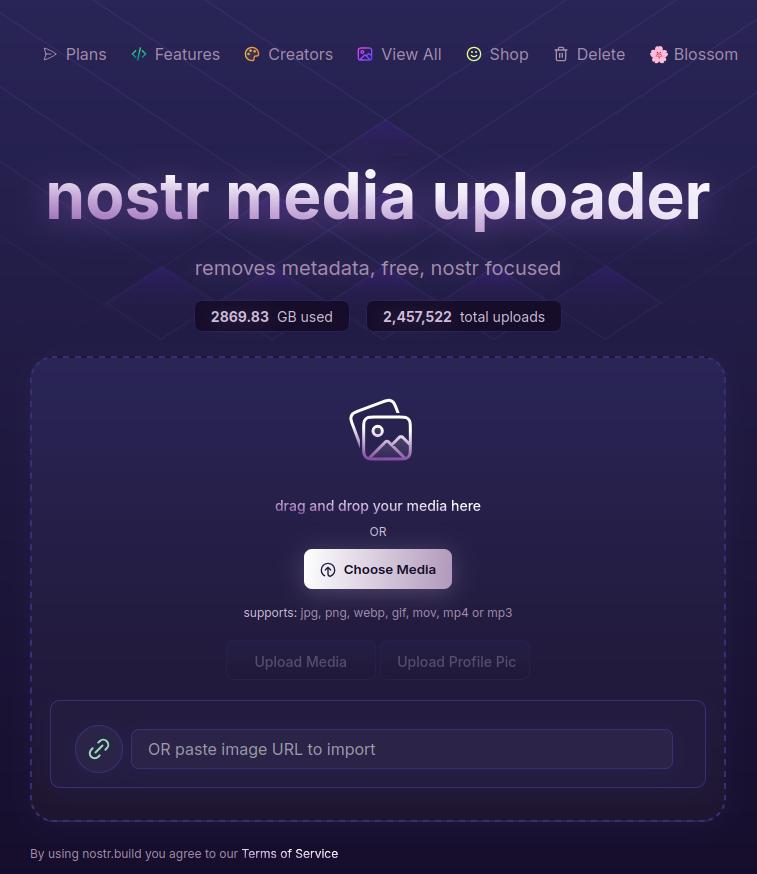
With the ability to easily organize your media, view statistics, browse the media gallery of free uploads, metadata removal for increased privacy, and AI image generation, Nostr.Build is not simply a media hosting service, it is a full-fledged media management platform. Its robust features keep it well ahead of other Nostr-focused media hosting options available, and a particularly strong option for those using Blossom and wanting redundancy and reliable uptime for their media.
As much as I enjoy using the web interface, though, where Nostr.Build really shines is their integrations with other Nostr apps. These integrations allow users to have the same experience they are accustomed to from centralized social platforms of uploading their media from within the same app they are using to share it. No copy/pasting a URL from one app to another. In fact, many users may not realize they have been using Nostr.Build in their client of choice, simply because it is the default option for media hosting for many Nostr apps.
This has the added benefit to client developers that they can provide this experience to their users without having to run media hosting infrastructure on top of trying to build their app. The separation of relays, clients, and media hosting between different entities, while keeping a similar experience to centralized platforms where a single company controls all three, is critical to Nostr adoption.
Features
Nostr.Build has a plethora of features beyond simply hosting your media. Let's take a look!
AI Image Generation
Do you need a quick title image for a long-form article? How about inspiration for a logo or art piece? Nostr.Build's AI Studio has you covered.
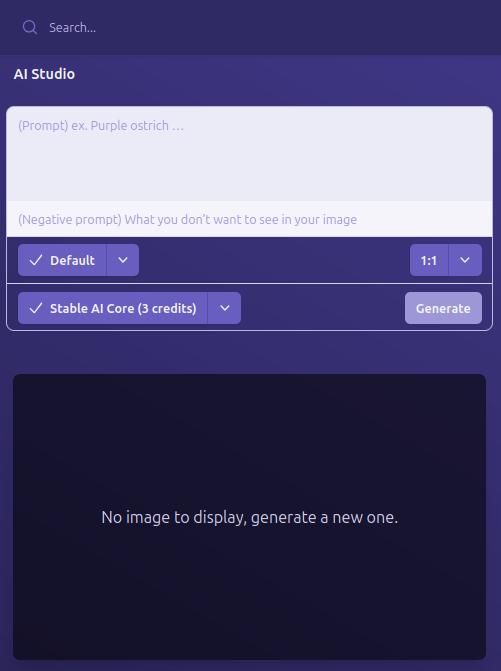
They have provided a few different models based on the plan you purchase, beginning with the Professional plan, which includes SDXL-Lightning and Stable Diffusion 1. Upgrading to the Creator plan will give you access to all Pro Stable Diffusion models and unlimited use of the Flux.1 model, which is the same core model used for Grok2 images.
I personally have a Professional account, so I haven't had a chance to try out Flux.1, but I have used Stable Diffusion extensively for creating character art for #NostrHeroes characters, such as these:




Nothing too spectacular when compared with some of the newer models out there, and there is no image-to-image support (yet), but more than adequate for casual image generation needs. Moreover, it is far more than what one would expect from a simple media-hosting service.
Admittedly, I am also no expert at coaxing AI models to produce anything remarkable so your results may vary. Either way, image generation is a welcome tool to have available without needing to go to an outside service unless you require something very specific.
Upload Limits
The maximum file size limits on Nostr.Build have been getting progressively larger, even for their free service. As I recall, it was a mere 21MB limit per file just a few months ago, which is fine for image files, but is quickly exceeded with videos. Then they increased their limits to 50MB per file, and as of recent updates it has been increased once more to a whopping 100MB per file... for free! This is more than adequate for most uses.
However, free users' images, GIFs, and videos are automatically viewable via Nostr.Build's free media gallery. This is something to particularly bear in mind when uploading images you intend to share via direct message. Though your DMs are encrypted, the images uploaded to Nostr.Build are not, and if you don't have a paid account, they will be viewable to the all paid users in the free media gallery. If you want to upload images that will not be viewable unless you actively share them, you must have a paid account.
Paid accounts have no file size limit, but they do have a total storage limit. I could not find anything about total storage limits for free accounts, but Professional tier will give you 25GB, Creator 50GB, and Advanced 250GB. Uploads to paid accounts are not visible in the free media gallery, so only those you give the link to will be able to access your content.
Media Types
Many file types are supported by Nostr.Built, even for free users, including:
- Image: .jpg, .png, .gif
- Video: .mov, mp4
- Audio: mp3, .wav
Upgrading to the Professional plan will add .pdf and .svg to the list of permitted file types, and upgrading to Creator or above will add .zip files, as well.
I believe other common file types are also supported, but these are the only ones specifically mentioned on the site.
Free Media Gallery
The free media gallery is an interesting little feature that Nostr.Build has available to paid accounts. Free users can get a preview, such as the one below, but only paid users can browse through the millions of uploads made by free users.
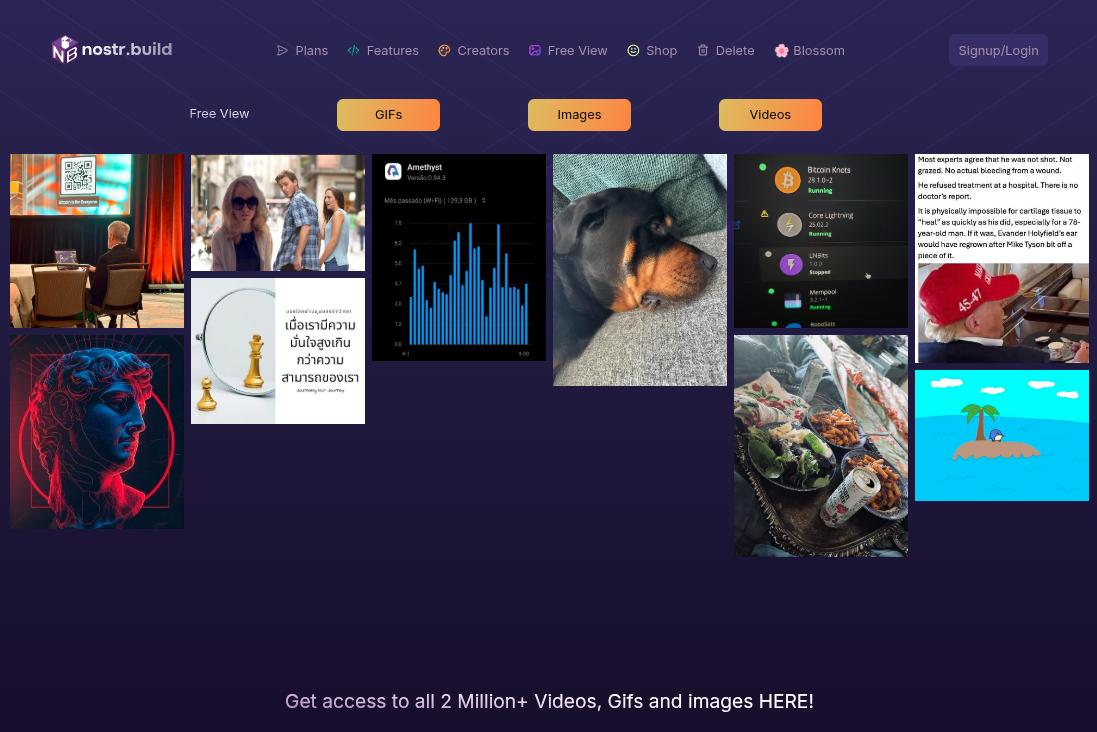
Apart from being amusing to browse through the things people have been uploading, I am unsure of how useful this particular feature is. No indication is given as to who uploaded the media, and it is limited compared to media feeds in other Nostr apps in two important ways. First, it only shows media uploaded to Nostr.Build, while other media-focused Nostr apps, such as Slidestr, Lumina, or even Primal will show media posted by all Nostr users. Second, Nostr.Build's gallery doesn't show all uploads to Nostr.Build, but only uploads from those without a paid account, further limiting the scope of whose uploads are seen.
Paid users have the advantage of being able to upload media that is not viewable to anyone unless they intentionally share the link somewhere. Free users, on the other hand, must be aware that their uploads are viewable by any paid users, whether they shared the link anywhere or not.
One incident I had while testing out another app required me to reach out to Nostr.Build support to request deletion of an image. It had some of my personal information in it, and had been uploaded to Nostr.Build and sent to me via DM. The sender assumed that since it was being sent via DM, no one else would be able to see the image, but because he was not a paid user of Nostr.Build, the image was included in the Free Media Gallery for any paid user to see. Not ideal, but the folks at Nostr.Build were quick to get it deleted for me.
In short, I have mixed feelings about this particular feature.
Blossom
Blossom is a media storage and retrieval protocol built for Nostr, but usable with any application that needs to access media via the web, and Nostr.Build has recently added support for Blossom uploads via their Blossom server: blossom.band
I will likely be adding a Nostrversity article going over Blossom in detail in the near future, but here's the basics of what it makes possible:
First, easy integration for media uploading from your favorite Nostr apps. Amethyst, Coracle, Primal and others have added Blossom upload support, so you just have to hop into your settings and add Nostr.Build's Blossom server address to start using it as your media host. No need to go to a separate app to upload your media and copy/paste the URL into your Nostr note!
Second, your media in Blossom is content addressable. This means it is named based on a hash of its actual data. Because of this, you can verify that the media has not been altered or replaced by your media host. If the hash doesn't match the data, it won't be loaded by the Nostr client, so you never have to worry about the image in your note being replaced by a different image by your media host.
Finally, because your media is addressable by its content, you can save the same media to multiple hosts, and if one of them goes down, Nostr apps can fetch your media from other hosts, just like they can do with your notes by fetching them from different relays if one relay you write to is down. This makes your images and videos much harder to censor, since you would need to be banned by multiple Blossom servers for your media to no longer be accessible.
If you would like to upload media to more than one Blossom server at the same time, your options are currently to use Primal and ensure that your settings have "Enable media mirrors" toggled on, or to use Bouquet. Hopefully we will see this option added to more Nostr apps in the near future.
Metadata Stripping
For files uploaded via Nostr.Build's dashboard, location metadata is removed upon upload. This is to protect user privacy, since this data could be used to reveal your home address if it is left attached to images posted publicly on Nostr.
When uploading via Blossom, media containing location metadata will be rejected. The user will be required to remove the metadata before they can upload the media.
No KYC and No Ads Policy
The only form of identification needed to use Nostr.Build is your Nostr identity. Every upload is tied to your npub, but no name, date of birth, email, or other identifying information is required. This is made possible because Nostr.Build only accepts Bitcoin as payment for their accounts, and no KYC is required to make Bitcoin transactions via Lightning.
Additionally, Nostr.Build is philosophically opposed to targeted advertising, so they have a policy that they will never use ads on their hosting service.
Client Integrations
Even before Blossom, Nostr.Build had many Nostr clients that used it as the default media hosting service, allowing users to upload directly within the app. This has only expanded now that Nostr.Build has added Blossom.
A very non-exhaustive list of clients that integrate with Nostr.Build is listed on their site, and includes Damus, Amethyst, Nostrudel, Snort, Iris, Coracle, Flycat, and Yakihonne. Additional apps that support Nostr.Build via Blossom include Primal and Flotilla. Some of these integrations support both Blossom and NIP-96 options for uploading media, such as Amethyst, while others only support one or the other.
I would not be surprised to see more and more Nostr apps move to integrating Blossom and phasing out NIP-96 support. Either way, though, Nostr.Build currently supports both, and is therefore an excellent hosting option if you want to use it with a wide range of Nostr apps.
Media Statistics
For those with a paid account, Nostr.Build provides information about how often each of your uploads has been requested and viewed within a given time period.
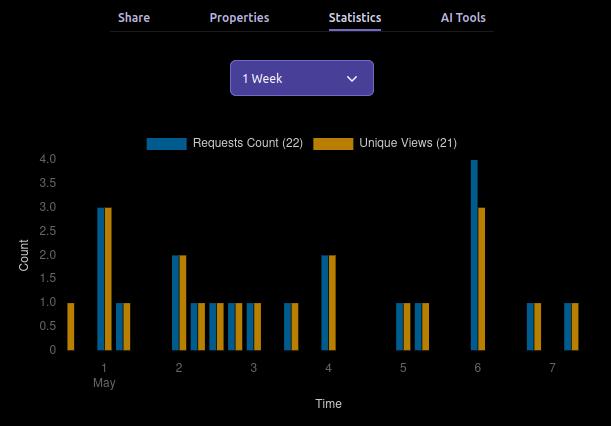
This can be valuable information for content creators, so they can determine what content is resonating with their audience, and what times of day their posts get the most views.
This information can currently be viewed for a maximum period of three months prior to the current date, and as short a period as just the past hour.

Can My Grandma Use It?
Score: 4.7 / 5
Nostr.Build is incredibly easy to use if you have a paid account, or if you are a free user uploading to Nostr.Build through a client that integrates with them by default. Previous frictions encountered by free users trying to upload large files should now be few and far between, thanks to the generous 100MB size limit.
Where things may be a bit more involved is when users are trying to set up media hosting on Nostr apps that don't use Nostr.Build by default. Exactly where in the settings the user must go to set this up, and whether to use the Blossom or NIP-96 address may not be immediately apparent, and requires an understanding of the difference that the user may not possess. This is not the fault of Nostr.Built, though, and I have not taken it into consideration in the scoring. Each individual Nostr app's settings should be as easy to understand as possible.
Another point of friction may come from free users who want to upload directly through the Nostr.Build site, instead of via another Nostr app. This used to be possible without logging in, but in an effort to ensure the service was used for Nostr, and not for general media hosting, Nostr.Build added the requirement to log in.

Thankfully, there are plenty of login options, including npub and password, browser extension (NIP-07), and even via a one-time-code sent to you via Nostr DM. However, if you don't have a paid account already, logging in will prompt you to upgrade. It seems that uploading directly via the website has been removed for free users entirely. You can only upload via another Nostr app if you don't have a paid account. This may lead to confusion for users who don't want to pay for an account, since it isn't made apparent anywhere that uploading through the website isn't an option for them.
Additionally, I would like to see the addresses for the Blossom server and for NIP-96 uploads (unless they are being phased out) added to the main page somewhere. Even selecting the "Blossom" page from the site navigation doesn't make clear what needs to be done to utilize the service. Something as simple as, "To use Nostr.Build with your favorite Blossom compatible Nostr apps, just add https://blossom.band as your media host in the app settings," would be enough to point users in the right direction.
For those who do have paid accounts, the dashboard is easy to navigate and organize your media.
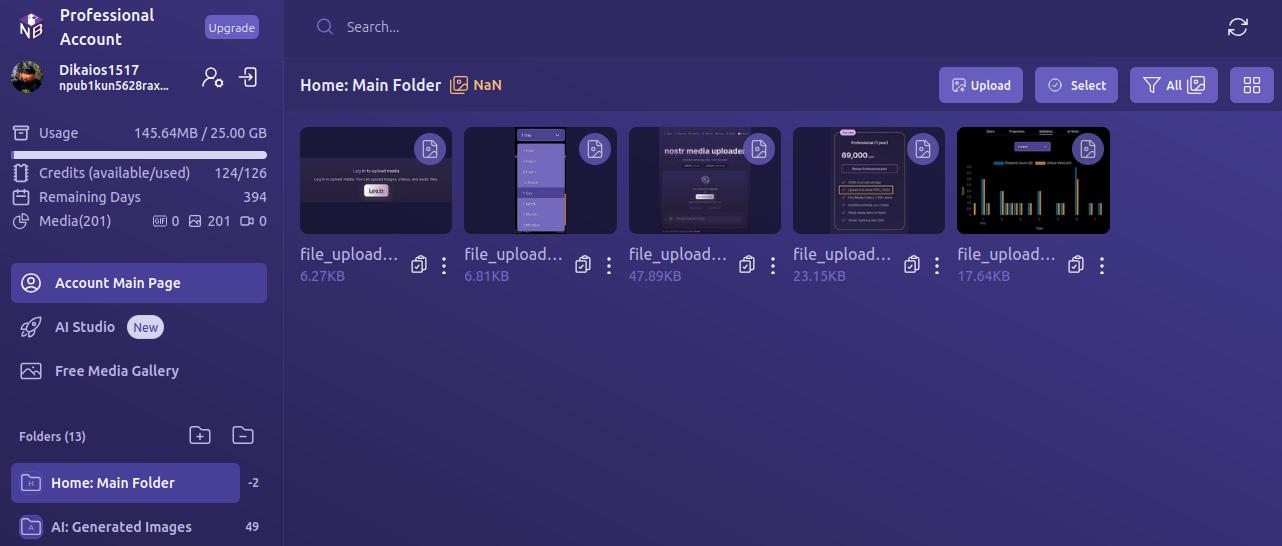
By default, all uploads are added to the Main Folder. Users can leave them there, or they can easily create new folders and drag and drop media to organize it.
Every image has a copy/paste clipboard icon for ready access to copy the media URL for inclusion into a Nostr note.
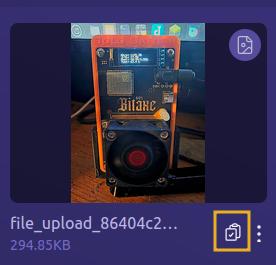
Additionally, Nostr.Build allows users to share their uploaded media to Nostr directly from the dashboard. Bear in mind, though, this is published to a set of popular relays, without taking into account the user's preferred write relays.
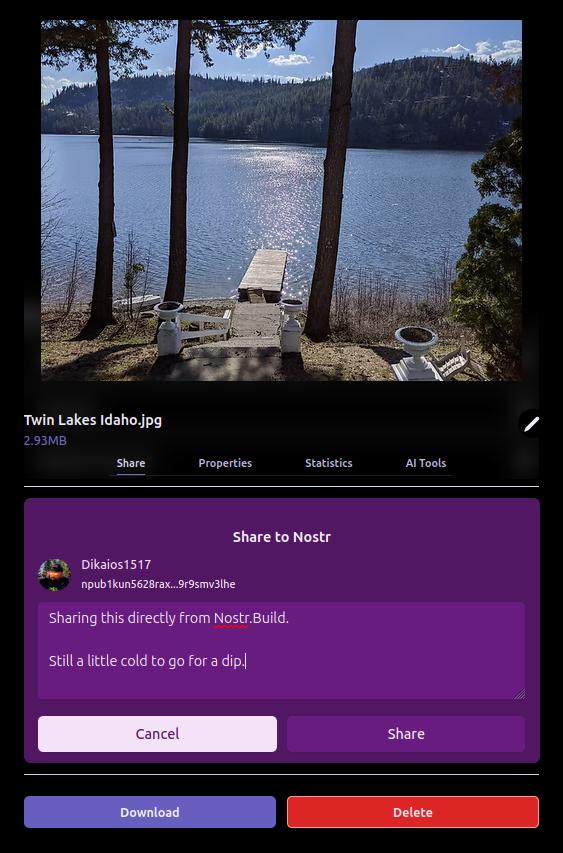
The section just below the user's profile information gives an at-a-glance view of important information, such as how much of the user's allotted storage has been used, how many AI Studio credits are available, how many days are left before their paid account must be renewed, and how many files from three major categories — GIFs, images, and videos — have been uploaded.

Uploading directly to the dashboard is also incredibly easy. You can simply drag and drop files into the upload pane, or browse for them. If you have a URL for the media you want to upload, you can even paste it to import from another website or Blossom server.
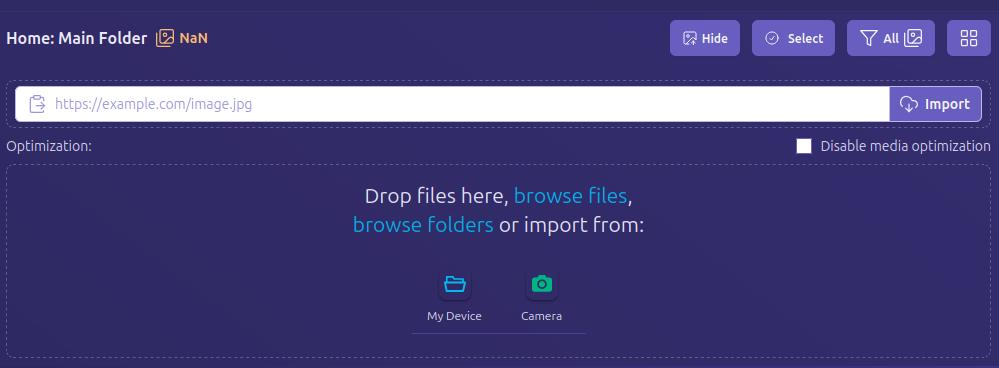
Anything I could think of that I might want to do in the interface was intuitive to find, well labeled, or had common and easily identified icons.
How do UI look?
Score: 4.7 / 5
I would describe Nostr.Build's UI as clean and utilitarian, which is what one would expect from a media hosting service. Nothing too flashy. Just what you need and nothing you don't.
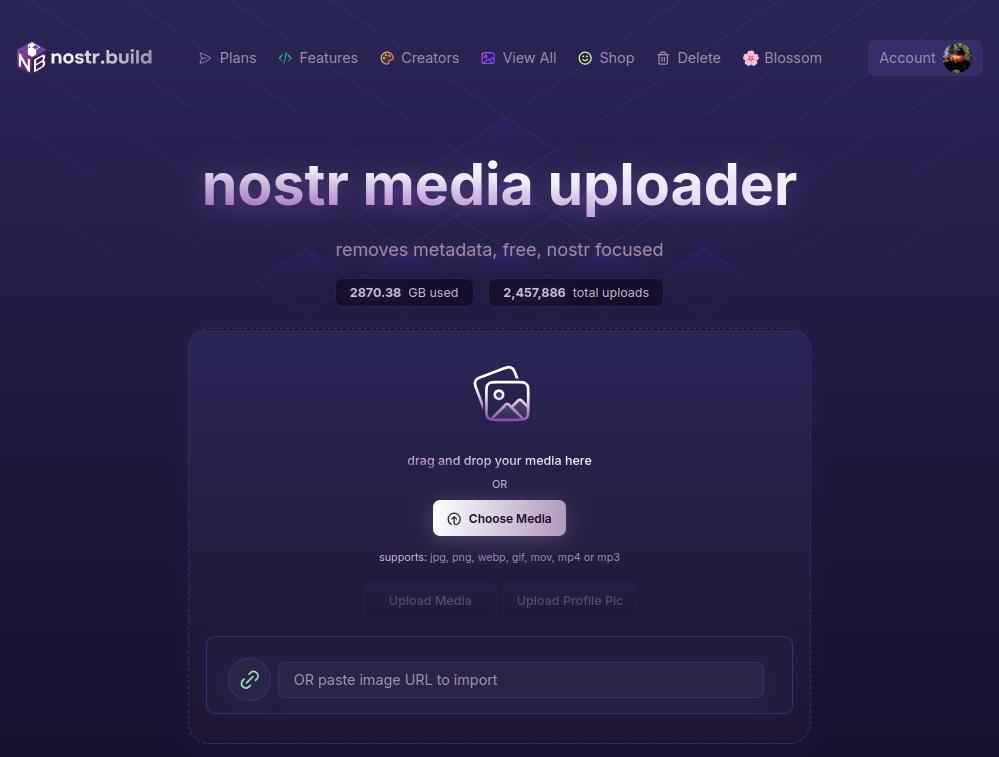
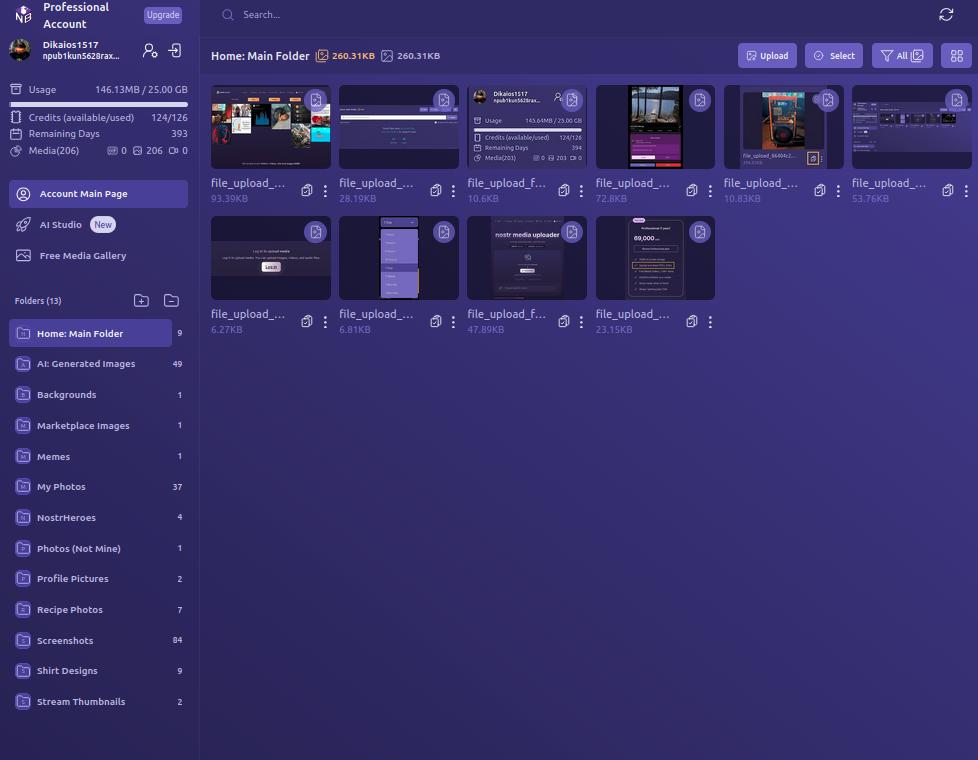
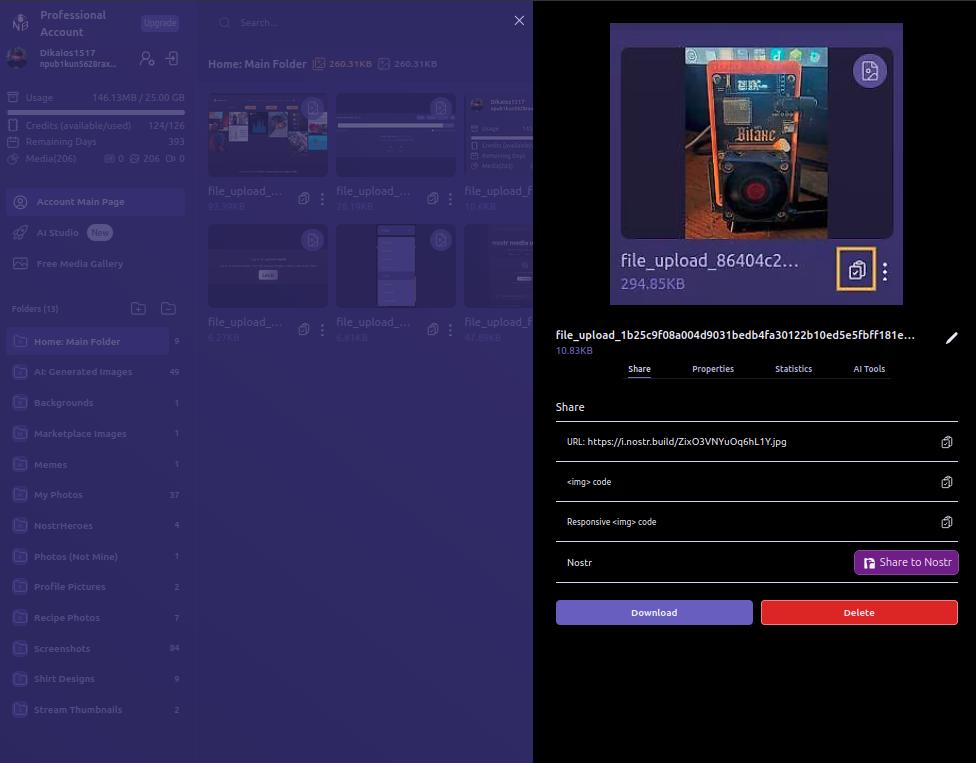

We certainly like our purple color-schemes on Nostr, and Nostr.Build leans into that with white text on shades of purple backgrounds, along with occasional color-popping accents. If a Nostr client had made the same color choices, I might be a bit more critical, but it works in an app that users won't be spending a ton of time in, except while managing their media, or using the AI Studio to generate some images.
UI elements such as buttons, active folder indicators, and icons all maintain an attractive, and simple design, with rounded corners wherever appropriate. Nothing looks too busy or overbearing, and the spacing between image previews in the folder view is just right.
Font remains consistent throughout the interface, with no jarring changes, and bold text, in white or another contrasting color, is used appropriately to draw attention, while subdued text is rendered in a light purple to blend more with the background, while remaining readable.
As such, the UI is attractive, without being particularly breathtaking. Nothing to complain about, but also nothing to write home about.
Log In Options
Score: 4.8 / 5
As mentioned previously, Nostr.Build provides three ways a user can log in.
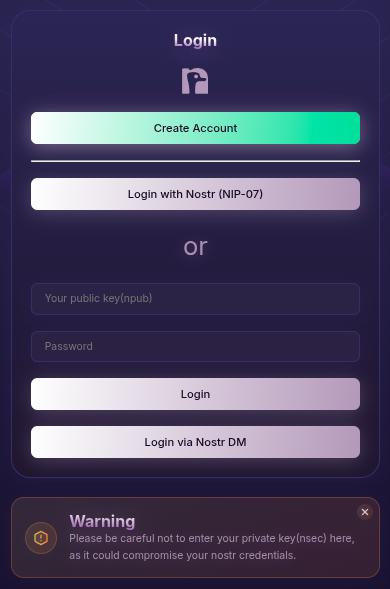
The first should be very familiar for any Nostr user who frequents web clients, and that is by use of a browser extension (NIP-07), such as Alby, Nos2x, or Gooti. Note, this will also work if you are on Android and using KeyChat's browser, which has a NIP-07 signer built in.
Next is the legacy login method for Nostr.Build that they have used since the service first launched, which is via npub and password. This should serve to remind you that even though Nostr.Build supports Nostr login, and can post your images to Nostr for you, it's really just a centralized media hosting service. Just like you wouldn't use only one Nostr relay, you should not use just one media host. Mirror your media to other Blossom servers.
Most intriguing, and one I had not seen used before, is the option to use your npub and have a one-time-code sent to you via Nostr DM. I tested this method out and it worked flawlessly. It is unfortunately using the old NIP-04 DM spec, though, so any clients that have deprecated these DMs will not work for receiving the code. We're in a strange place with Nostr DMs currently, with some clients deprecating NIP-04 DMs in favor of NIP-17, others that still only support NIP-04, and a few that support both. If you don't see the DM in your client of choice, hop over to Primal and check your DMs there in the "other" tab.
Since Nostr.Build is supporting Nostr login, I would like to see them add remote signer (NIP-46) login alongside browser extension login to round out the options expected from a Nostr web app.
Feature Set
Score: 4.8 / 5
The features provided by Nostr.Build all work as expected and provide a lot of value to the user. With only one exception, all of the features make sense for a media hosting and management service to provide, and they are adding more features all the time.
Users not only get a reliable hosting service, with excellent uptime for their media, but they get integrations with most Nostr clients I can think of, Blossom protocol support, media organization and statistics, posting media to Nostr from within the dashboard, metadata stripping for enhanced privacy, a wide range of supported file types, and an AI image generation studio! What's more, there are additional features already on the roadmap, including traditional and AI image editing, additional plan options, expandable storage, and video transcoding for optimized playback. Nostr.Build is just getting started and they already offer more than most media hosting services out there, intended for Nostr or otherwise.
The one feature I am still not sold on is the "Free Media Gallery." The name is misleading. The gallery itself is not free. You must have a paid account to access more than a preview of it. Rather, it displays media uploaded by free users, regardless of whether they uploaded that media to send via DM, or uploaded it but decided not to share it out, or uploaded it to post it only within a private group on Flotilla, or uploaded it and only sent the note with the image link to a private relay.
Moreover, if I want to see media that has been shared on Nostr, there are plenty of ways I can do so that I can be confident only include media users intended to be publicly viewable. This feature from Nostr.Build, if it is kept at all, should have some way of ensuring the gallery only includes images that were shared on public relays.
Pricing
Score: 5 / 5
The pricing structure for Nostr.Build is exceptionally reasonable when compared with other services.
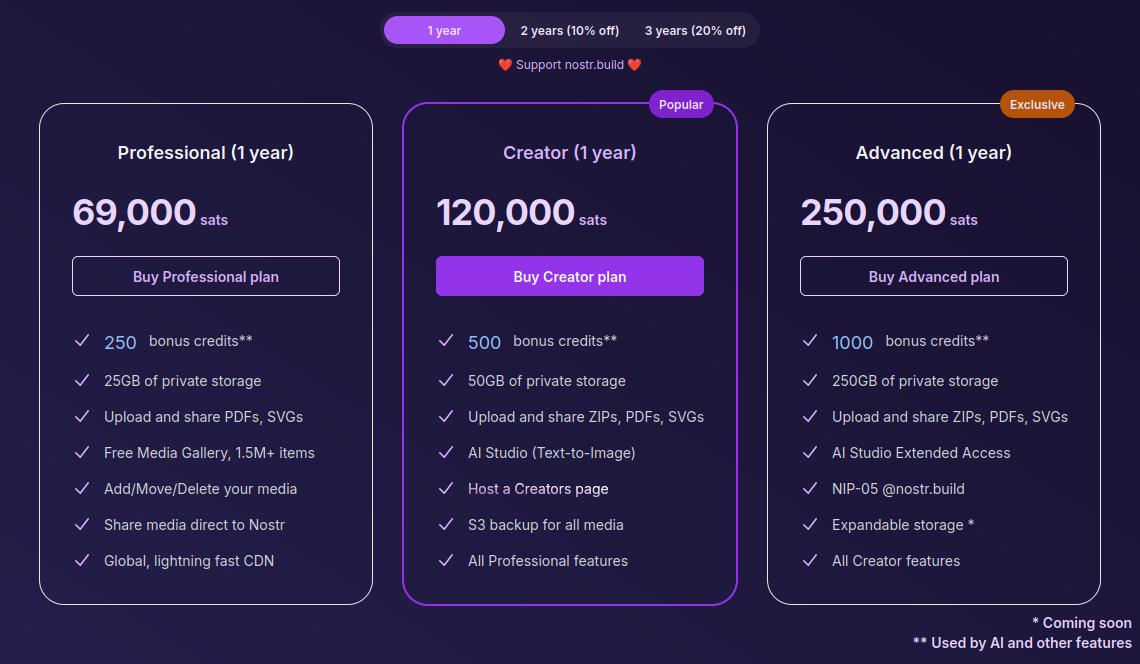
The Professional plan, which is their lowest paid tier, is just 69,000 sats a year. At current price, that translates to around $70 for the year, and Nostr.Build has been known to lower their pricing as Bitcoin goes up. Users can also get a 10% or 20% discount if they buy 2 or 3 years at a time, compensating for the fact that Bitcoin tends to go up year over year.
For that cost, users get 25GB of storage, unlimited file size for uploads within that storage cap, and access to all of Nostr.Build's features mentioned in this review, with the exception of their highest end AI models and storage of certain file types.
If I were to set up my own VPS to host a Blossom server with comparable storage, I would be paying around $14 a month before the cost of the domain, and it would be anything but plug and play. Even then, all I would have is storage. I would be missing out on all of the other features Nostr.Build has out of the box for less than half the price.
The Creator plan is close to double the cost at 120,000 sats, or about $120, a year. However, you aren't just getting double the storage space at 50GB; you are also getting double the AI credits, access to the higher tier AI models, S3 backup for all of your media, and your own Creator page you can share out with your media available for others to browse in one location.
The Advanced plan doesn't add a lot of extra features for more than double the price of the Creator plan, but it MASSIVELY increases your storage limit by 5x to a total of 250GB. Comparable storage space on a VPS to run your own Blossom server would be about $100 a month and Nostr.Build is offering it for about $250 (250,000 sats) for a whole year! If you really need to host that much media, it's hard to beat this price. The plan also comes with a Nostr.Build NIP-05 address, if you need one.
Now, the argument can be made, "But it's priced in sats, and that means in four years I will have spent many times that dollar amount on their service, possibly making it more expensive than other services priced in fiat." While that is true, it also doesn't take opportunity cost into account. Every dollar you spend on something other than Bitcoin is a missed opportunity to have bought Bitcoin with it. There's not really any difference between spending $70 in fiat to buy a hosting plan vs spending 69,000 sats, because you could have used that same $70 to buy Bitcoin instead, so you are losing out on that increase in purchasing power either way.
Not to mention, you can just buy the sats with your fiat and send it to Nostr.Build, so you would effectively be buying your plan with fiat, and they would be receiving sats.
I think Satellite.earth is still technically less expensive at just $0.05 per GB per month, which comes to $15 a year for the same 25GB of Nostr.Build's professional plan. However, all you get is media hosting. You miss out on all of the other features provided by Nostr.Build. And if you are uploading files of 100MB or less... Well, free with Nostr.Build is still cheaper than $0.5 per GB.
Wrap Up
All of the above comes together to make Nostr.Build a versatile and full-featured media hosting and management service at an affordable price point for their paid accounts, but with no need to pay at all if you just want a place to upload photos, GIFs, memes, and even some videos, so long as the file size stays under 100MB. Whether you want to use Nostr.Build as your primary media host, or as just one redundancy in your Blossom set up, they have you covered and I encourage you to check them out!
For the next review, I would like to go with another client, this time for the web, and the two options I am debating between are Coracle.social and Jumble.social. Let me know in the comments which you would like to see!
-
 @ 34f1ddab:2ca0cf7c
2025-05-08 21:39:47
@ 34f1ddab:2ca0cf7c
2025-05-08 21:39:47Losing access to your cryptocurrency can feel like losing a part of your future. Whether it’s due to a forgotten password, a damaged seed backup, or a simple mistake in a transfer, the stress can be overwhelming. Fortunately, cryptrecver.com is here to assist! With our expert-led recovery services, you can safely and swiftly reclaim your lost Bitcoin and other cryptocurrencies.
Why Trust Crypt Recver? 🤝 🛠️ Expert Recovery Solutions At Crypt Recver, we specialize in addressing complex wallet-related issues. Our skilled engineers have the tools and expertise to handle:
Partially lost or forgotten seed phrases Extracting funds from outdated or invalid wallet addresses Recovering data from damaged hardware wallets Restoring coins from old or unsupported wallet formats You’re not just getting a service; you’re gaining a partner in your cryptocurrency journey.
🚀 Fast and Efficient Recovery We understand that time is crucial in crypto recovery. Our optimized systems enable you to regain access to your funds quickly, focusing on speed without compromising security. With a success rate of over 90%, you can rely on us to act swiftly on your behalf.
🔒 Privacy is Our Priority Your confidentiality is essential. Every recovery session is conducted with the utmost care, ensuring all processes are encrypted and confidential. You can rest assured that your sensitive information remains private.
💻 Advanced Technology Our proprietary tools and brute-force optimization techniques maximize recovery efficiency. Regardless of how challenging your case may be, our technology is designed to give you the best chance at retrieving your crypto.
Our Recovery Services Include: 📈 Bitcoin Recovery: Lost access to your Bitcoin wallet? We help recover lost wallets, private keys, and passphrases. Transaction Recovery: Mistakes happen — whether it’s an incorrect wallet address or a lost password, let us manage the recovery. Cold Wallet Restoration: If your cold wallet is failing, we can safely extract your assets and migrate them into a secure new wallet. Private Key Generation: Lost your private key? Our experts can help you regain control using advanced methods while ensuring your privacy. ⚠️ What We Don’t Do While we can handle many scenarios, some limitations exist. For instance, we cannot recover funds stored in custodial wallets or cases where there is a complete loss of four or more seed words without partial information available. We are transparent about what’s possible, so you know what to expect
Don’t Let Lost Crypto Hold You Back! Did you know that between 3 to 3.4 million BTC — nearly 20% of the total supply — are estimated to be permanently lost? Don’t become part of that statistic! Whether it’s due to a forgotten password, sending funds to the wrong address, or damaged drives, we can help you navigate these challenges
🛡️ Real-Time Dust Attack Protection Our services extend beyond recovery. We offer dust attack protection, keeping your activity anonymous and your funds secure, shielding your identity from unwanted tracking, ransomware, and phishing attempts.
🎉 Start Your Recovery Journey Today! Ready to reclaim your lost crypto? Don’t wait until it’s too late! 👉 cryptrecver.com
📞 Need Immediate Assistance? Connect with Us! For real-time support or questions, reach out to our dedicated team on: ✉️ Telegram: t.me/crypptrcver 💬 WhatsApp: +1(941)317–1821
Crypt Recver is your trusted partner in cryptocurrency recovery. Let us turn your challenges into victories. Don’t hesitate — your crypto future starts now! 🚀✨
Act fast and secure your digital assets with cryptrecver.com.Losing access to your cryptocurrency can feel like losing a part of your future. Whether it’s due to a forgotten password, a damaged seed backup, or a simple mistake in a transfer, the stress can be overwhelming. Fortunately, cryptrecver.com is here to assist! With our expert-led recovery services, you can safely and swiftly reclaim your lost Bitcoin and other cryptocurrencies.
 # Why Trust Crypt Recver? 🤝
# Why Trust Crypt Recver? 🤝🛠️ Expert Recovery Solutions\ At Crypt Recver, we specialize in addressing complex wallet-related issues. Our skilled engineers have the tools and expertise to handle:
- Partially lost or forgotten seed phrases
- Extracting funds from outdated or invalid wallet addresses
- Recovering data from damaged hardware wallets
- Restoring coins from old or unsupported wallet formats
You’re not just getting a service; you’re gaining a partner in your cryptocurrency journey.
🚀 Fast and Efficient Recovery\ We understand that time is crucial in crypto recovery. Our optimized systems enable you to regain access to your funds quickly, focusing on speed without compromising security. With a success rate of over 90%, you can rely on us to act swiftly on your behalf.
🔒 Privacy is Our Priority\ Your confidentiality is essential. Every recovery session is conducted with the utmost care, ensuring all processes are encrypted and confidential. You can rest assured that your sensitive information remains private.
💻 Advanced Technology\ Our proprietary tools and brute-force optimization techniques maximize recovery efficiency. Regardless of how challenging your case may be, our technology is designed to give you the best chance at retrieving your crypto.
Our Recovery Services Include: 📈
- Bitcoin Recovery: Lost access to your Bitcoin wallet? We help recover lost wallets, private keys, and passphrases.
- Transaction Recovery: Mistakes happen — whether it’s an incorrect wallet address or a lost password, let us manage the recovery.
- Cold Wallet Restoration: If your cold wallet is failing, we can safely extract your assets and migrate them into a secure new wallet.
- Private Key Generation: Lost your private key? Our experts can help you regain control using advanced methods while ensuring your privacy.
⚠️ What We Don’t Do\ While we can handle many scenarios, some limitations exist. For instance, we cannot recover funds stored in custodial wallets or cases where there is a complete loss of four or more seed words without partial information available. We are transparent about what’s possible, so you know what to expect
 # Don’t Let Lost Crypto Hold You Back!
# Don’t Let Lost Crypto Hold You Back!Did you know that between 3 to 3.4 million BTC — nearly 20% of the total supply — are estimated to be permanently lost? Don’t become part of that statistic! Whether it’s due to a forgotten password, sending funds to the wrong address, or damaged drives, we can help you navigate these challenges
🛡️ Real-Time Dust Attack Protection\ Our services extend beyond recovery. We offer dust attack protection, keeping your activity anonymous and your funds secure, shielding your identity from unwanted tracking, ransomware, and phishing attempts.
🎉 Start Your Recovery Journey Today!\ Ready to reclaim your lost crypto? Don’t wait until it’s too late!\ 👉 cryptrecver.com
📞 Need Immediate Assistance? Connect with Us!\ For real-time support or questions, reach out to our dedicated team on:\ ✉️ Telegram: t.me/crypptrcver\ 💬 WhatsApp: +1(941)317–1821
Crypt Recver is your trusted partner in cryptocurrency recovery. Let us turn your challenges into victories. Don’t hesitate — your crypto future starts now! 🚀✨
Act fast and secure your digital assets with cryptrecver.com.
-
 @ d61f3bc5:0da6ef4a
2025-05-05 15:26:08
@ d61f3bc5:0da6ef4a
2025-05-05 15:26:08I remember the first gathering of Nostr devs two years ago in Costa Rica. We were all psyched because Nostr appeared to solve the problem of self-sovereign online identity and decentralized publishing. The protocol seemed well-suited for textual content, but it wasn't really designed to handle binary files, like images or video.
The Problem
When I publish a note that contains an image link, the note itself is resilient thanks to Nostr, but if the hosting service disappears or takes my image down, my note will be broken forever. We need a way to publish binary data without relying on a single hosting provider.
We were discussing how there really was no reliable solution to this problem even outside of Nostr. Peer-to-peer attempts like IPFS simply didn't work; they were hopelessly slow and unreliable in practice. Torrents worked for popular files like movies, but couldn't be relied on for general file hosting.
Awesome Blossom
A year later, I attended the Sovereign Engineering demo day in Madeira, organized by Pablo and Gigi. Many projects were presented over a three hour demo session that day, but one really stood out for me.
Introduced by hzrd149 and Stu Bowman, Blossom blew my mind because it showed how we can solve complex problems easily by simply relying on the fact that Nostr exists. Having an open user directory, with the corresponding social graph and web of trust is an incredible building block.
Since we can easily look up any user on Nostr and read their profile metadata, we can just get them to simply tell us where their files are stored. This, combined with hash-based addressing (borrowed from IPFS), is all we need to solve our problem.
How Blossom Works
The Blossom protocol (Blobs Stored Simply on Mediaservers) is formally defined in a series of BUDs (Blossom Upgrade Documents). Yes, Blossom is the most well-branded protocol in the history of protocols. Feel free to refer to the spec for details, but I will provide a high level explanation here.
The main idea behind Blossom can be summarized in three points:
- Users specify which media server(s) they use via their public Blossom settings published on Nostr;
- All files are uniquely addressable via hashes;
- If an app fails to load a file from the original URL, it simply goes to get it from the server(s) specified in the user's Blossom settings.
Just like Nostr itself, the Blossom protocol is dead-simple and it works!
Let's use this image as an example:
 If you look at the URL for this image, you will notice that it looks like this:
If you look at the URL for this image, you will notice that it looks like this:blossom.primal.net/c1aa63f983a44185d039092912bfb7f33adcf63ed3cae371ebe6905da5f688d0.jpgAll Blossom URLs follow this format:
[server]/[file-hash].[extension]The file hash is important because it uniquely identifies the file in question. Apps can use it to verify that the file they received is exactly the file they requested. It also gives us the ability to reliably get the same file from a different server.
Nostr users declare which media server(s) they use by publishing their Blossom settings. If I store my files on Server A, and they get removed, I can simply upload them to Server B, update my public Blossom settings, and all Blossom-capable apps will be able to find them at the new location. All my existing notes will continue to display media content without any issues.
Blossom Mirroring
Let's face it, re-uploading files to another server after they got removed from the original server is not the best user experience. Most people wouldn't have the backups of all the files, and/or the desire to do this work.
This is where Blossom's mirroring feature comes handy. In addition to the primary media server, a Blossom user can set one one or more mirror servers. Under this setup, every time a file is uploaded to the primary server the Nostr app issues a mirror request to the primary server, directing it to copy the file to all the specified mirrors. This way there is always a copy of all content on multiple servers and in case the primary becomes unavailable, Blossom-capable apps will automatically start loading from the mirror.
Mirrors are really easy to setup (you can do it in two clicks in Primal) and this arrangement ensures robust media handling without any central points of failure. Note that you can use professional media hosting services side by side with self-hosted backup servers that anyone can run at home.
Using Blossom Within Primal
Blossom is natively integrated into the entire Primal stack and enabled by default. If you are using Primal 2.2 or later, you don't need to do anything to enable Blossom, all your media uploads are blossoming already.
To enhance user privacy, all Primal apps use the "/media" endpoint per BUD-05, which strips all metadata from uploaded files before they are saved and optionally mirrored to other Blossom servers, per user settings. You can use any Blossom server as your primary media server in Primal, as well as setup any number of mirrors:
 ## Conclusion
## ConclusionFor such a simple protocol, Blossom gives us three major benefits:
- Verifiable authenticity. All Nostr notes are always signed by the note author. With Blossom, the signed note includes a unique hash for each referenced media file, making it impossible to falsify a media file and maliciously ascribe it to the note author.
- File hosting redundancy. Having multiple live copies of referenced media files (via Blossom mirroring) greatly increases the resiliency of media content published on Nostr.
- Censorship resistance. Blossom enables us to seamlessly switch media hosting providers in case of censorship.
Thanks for reading; and enjoy! 🌸
-
 @ 3f770d65:7a745b24
2025-05-08 18:09:35
@ 3f770d65:7a745b24
2025-05-08 18:09:35🏌️ Monday, May 26 – Bitcoin Golf Championship & Kickoff Party
Location: Las Vegas, Nevada\ Event: 2nd Annual Bitcoin Golf Championship & Kick Off Party"\ Where: Bali Hai Golf Clubhouse, 5160 S Las Vegas Blvd, Las Vegas, NV 89119\ 🎟️ Get Tickets!
Details:
-
The week tees off in style with the Bitcoin Golf Championship. Swing clubs by day and swing to music by night.
-
Live performances from Nostr-powered acts courtesy of Tunestr, including Ainsley Costello and others.
-
Stop by the Purple Pill Booth hosted by Derek and Tanja, who will be on-boarding golfers and attendees to the decentralized social future with Nostr.
💬 May 27–29 – Bitcoin 2025 Conference at the Las Vegas Convention Center
Location: The Venetian Resort\ Main Attraction for Nostr Fans: The Nostr Lounge\ When: All day, Tuesday through Thursday\ Where: Right outside the Open Source Stage\ 🎟️ Get Tickets!
Come chill at the Nostr Lounge, your home base for all things decentralized social. With seating for \~50, comfy couches, high-tops, and good vibes, it’s the perfect space to meet developers, community leaders, and curious newcomers building the future of censorship-resistant communication.
Bonus: Right across the aisle, you’ll find Shopstr, a decentralized marketplace app built on Nostr. Stop by their booth to explore how peer-to-peer commerce works in a truly open ecosystem.
Daily Highlights at the Lounge:
-
☕️ Hang out casually or sit down for a deeper conversation about the Nostr protocol
-
🔧 1:1 demos from app teams
-
🛍️ Merch available onsite
-
🧠 Impromptu lightning talks
-
🎤 Scheduled Meetups (details below)
🎯 Nostr Lounge Meetups
Wednesday, May 28 @ 1:00 PM
- Damus Meetup: Come meet the team behind Damus, the OG Nostr app for iOS that helped kickstart the social revolution. They'll also be showcasing their new cross-platform app, Notedeck, designed for a more unified Nostr experience across devices. Grab some merch, get a demo, and connect directly with the developers.
Thursday, May 29 @ 1:00 PM
- Primal Meetup: Dive into Primal, the slickest Nostr experience available on web, Android, and iOS. With a built-in wallet, zapping your favorite creators and friends has never been easier. The team will be on-site for hands-on demos, Q&A, merch giveaways, and deeper discussions on building the social layer of Bitcoin.
🎙️ Nostr Talks at Bitcoin 2025
If you want to hear from the minds building decentralized social, make sure you attend these two official conference sessions:
1. FROSTR Workshop: Multisig Nostr Signing
-
🕚 Time: 11:30 AM – 12:00 PM
-
📅 Date: Wednesday, May 28
-
📍 Location: Developer Zone
-
🎤 Speaker: Austin Kelsay, Voltage\ A deep-dive into FROST-based multisig key management for Nostr. Geared toward devs and power users interested in key security.
2. Panel: Decentralizing Social Media
-
🕑 Time: 2:00 PM – 2:30 PM
-
📅 Date: Thursday, May 29
-
📍 Location: Genesis Stage
-
🎙️ Moderator: McShane (Bitcoin Strategy @ Roxom TV)
-
👥 Speakers:
-
Martti Malmi – Early Bitcoin dev, CEO @ Sirius Business Ltd
-
Lyn Alden – Analyst & Partner @ Ego Death Capital
Get the big-picture perspective on why decentralized social matters and how Nostr fits into the future of digital communication.
🌃 NOS VEGAS Meetup & Afterparty
Date: Wednesday, May 28\ Time: 7:00 PM – 1:00 AM\ Location: We All Scream Nightclub, 517 Fremont St., Las Vegas, NV 89101\ 🎟️ Get Tickets!
What to Expect:
-
🎶 Live Music Stage – Featuring Ainsley Costello, Sara Jade, Able James, Martin Groom, Bobby Shell, Jessie Lark, and other V4V artists
-
🪩 DJ Party Deck – With sets by DJ Valerie B LOVE, TatumTurnUp, and more DJs throwing down
-
🛰️ Live-streamed via Tunestr
-
🧠 Nostr Education – Talks by Derek Ross, Tomer Strolight, Terry Yiu, OpenMike, and more.
-
🧾 Vendors & Project Booths – Explore new tools and services
-
🔐 Onboarding Stations – Learn how to use Nostr hands-on
-
🐦 Nostrich Flocking – Meet your favorite nyms IRL
-
🍸 Three Full Bars – Two floors of socializing overlooking vibrant Fremont Street
This is the after-party of the year for those who love freedom technology and decentralized social community. Don’t miss it.
Final Thoughts
Whether you're there to learn, network, party, or build, Bitcoin 2025 in Las Vegas has a packed week of Nostr-friendly programming. Be sure to catch all the events, visit the Nostr Lounge, and experience the growing decentralized social revolution.
🟣 Find us. Flock with us. Purple pill someone.
-
-
 @ 57d1a264:69f1fee1
2025-05-07 06:56:25
@ 57d1a264:69f1fee1
2025-05-07 06:56:25Wild parrots tend to fly in flocks, but when kept as single pets, they may become lonely and bored https://www.youtube.com/watch?v=OHcAOlamgDc
Source: https://www.smithsonianmag.com/smart-news/scientists-taught-pet-parrots-to-video-call-each-other-and-the-birds-loved-it-180982041/
originally posted at https://stacker.news/items/973639
-
 @ 57d1a264:69f1fee1
2025-05-07 06:29:52
@ 57d1a264:69f1fee1
2025-05-07 06:29:52Your device, your data. TRMNL's architecture prevents outsiders (including us) from accessing your local network. TRMNAL achieve this through 1 way communication between client and server, versus the other way around. Learn more.
Learn more at https://usetrmnl.com/
originally posted at https://stacker.news/items/973632
-
 @ 2183e947:f497b975
2025-05-01 22:33:48
@ 2183e947:f497b975
2025-05-01 22:33:48Most darknet markets (DNMs) are designed poorly in the following ways:
1. Hosting
Most DNMs use a model whereby merchants fill out a form to create their listings, and the data they submit then gets hosted on the DNM's servers. In scenarios where a "legal" website would be forced to censor that content (e.g. a DMCA takedown order), DNMs, of course, do not obey. This can lead to authorities trying to find the DNM's servers to take enforcement actions against them. This design creates a single point of failure.
A better design is to outsource hosting to third parties. Let merchants host their listings on nostr relays, not on the DNM's server. The DNM should only be designed as an open source interface for exploring listings hosted elsewhere, that way takedown orders end up with the people who actually host the listings, i.e. with nostr relays, and not with the DNM itself. And if a nostr relay DOES go down due to enforcement action, it does not significantly affect the DNM -- they'll just stop querying for listings from that relay in their next software update, because that relay doesn't work anymore, and only query for listings from relays that still work.
2. Moderation
Most DNMs have employees who curate the listings on the DNM. For example, they approve/deny listings depending on whether they fit the content policies of the website. Some DNMs are only for drugs, others are only for firearms. The problem is, to approve a criminal listing is, in the eyes of law enforcement, an act of conspiracy. Consequently, they don't just go after the merchant who made the listing but the moderators who approved it, and since the moderators typically act under the direction of the DNM, this means the police go after the DNM itself.
A better design is to outsource moderation to third parties. Let anyone call themselves a moderator and create lists of approved goods and services. Merchants can pay the most popular third party moderators to add their products to their lists. The DNM itself just lets its users pick which moderators to use, such that the user's choice -- and not a choice by the DNM -- determines what goods and services the user sees in the interface.
That way, the police go after the moderators and merchants rather than the DNM itself, which is basically just a web browser: it doesn't host anything or approve of any content, it just shows what its users tell it to show. And if a popular moderator gets arrested, his list will still work for a while, but will gradually get more and more outdated, leading someone else to eventually become the new most popular moderator, and a natural transition can occur.
3. Escrow
Most DNMs offer an escrow solution whereby users do not pay merchants directly. Rather, during the Checkout process, they put their money in escrow, and request the DNM to release it to the merchant when the product arrives, otherwise they initiate a dispute. Most DNMs consider escrow necessary because DNM users and merchants do not trust one another; users don't want to pay for a product first and then discover that the merchant never ships it, and merchants don't want to ship a product first and then discover that the user never pays for it.
The problem is, running an escrow solution for criminals is almost certain to get you accused of conspiracy, money laundering, and unlicensed money transmission, so the police are likely to shut down any DNM that does this. A better design is to oursource escrow to third parties. Let anyone call themselves an escrow, and let moderators approve escrows just like they approve listings. A merchant or user who doesn't trust the escrows chosen by a given moderator can just pick a different moderator. That way, the police go after the third party escrows rather than the DNM itself, which never touches user funds.
4. Consequences
Designing a DNM along these principles has an interesting consequence: the DNM is no longer anything but an interface, a glorified web browser. It doesn't host any content, approve any listings, or touch any money. It doesn't even really need a server -- it can just be an HTML file that users open up on their computer or smart phone. For two reasons, such a program is hard to take down:
First, it is hard for the police to justify going after the DNM, since there are no charges to bring. Its maintainers aren't doing anything illegal, no more than Firefox does anything illegal by maintaining a web browser that some people use to browse illegal content. What the user displays in the app is up to them, not to the code maintainers. Second, if the police decided to go after the DNM anyway, they still couldn't take it down because it's just an HTML file -- the maintainers do not even need to run a server to host the file, because users can share it with one another, eliminating all single points of failure.
Another consequence of this design is this: most of the listings will probably be legal, because there is more demand for legal goods and services than illegal ones. Users who want to find illegal goods would pick moderators who only approve those listings, but everyone else would use "legal" moderators, and the app would not, at first glance, look much like a DNM, just a marketplace for legal goods and services. To find the illegal stuff that lurks among the abundant legal stuff, you'd probably have to filter for it via your selection of moderators, making it seem like the "default" mode is legal.
5. Conclusion
I think this DNM model is far better than the designs that prevail today. It is easier to maintain, harder to take down, and pushes the "hard parts" to the edges, so that the DNM is not significantly affected even if a major merchant, moderator, or escrow gets arrested. I hope it comes to fruition.
-
 @ 5194e71c:761bd15c
2025-05-08 21:23:37
@ 5194e71c:761bd15c
2025-05-08 21:23:37[SELL] Funny video Clic on link and Pay on sats with QR code https://m-url.eu/r-66dx
originally posted at https://stacker.news/items/975020
-
 @ 7459d333:f207289b
2025-05-08 20:25:45
@ 7459d333:f207289b
2025-05-08 20:25:45lavaGiraffehas created some nice charts with an estimation on the JoinMarket coinjoins from January 1st 2024 until April 30th 2025 using https://github.com/PulpCattel/jm-scripts/blob/master/jmfinder.pyFalse positives are possible, so this is to be interpreted as an upper bound.
originally posted at https://stacker.news/items/974988
-
 @ 57d1a264:69f1fee1
2025-05-07 06:16:30
@ 57d1a264:69f1fee1
2025-05-07 06:16:30Here’s Sean Voisen writing about how programming is a feeling:
For those of us who enjoy programming, there is a deep satisfaction that comes from solving problems through well-written code, a kind of ineffable joy found in the elegant expression of a system through our favorite syntax. It is akin to the same satisfaction a craftsperson might find at the end of the day after toiling away on well-made piece of furniture, the culmination of small dopamine hits that come from sweating the details on something and getting them just right. Maybe nobody will notice those details, but it doesn’t matter. We care, we notice, we get joy from the aesthetics of the craft.
This got me thinking about the idea of satisfaction in craft. Where does it come from?
Continue Reading https://blog.jim-nielsen.com/2025/craft-and-satisfaction/
originally posted at https://stacker.news/items/973628
-
 @ f1989a96:bcaaf2c1
2025-05-08 15:05:45
@ f1989a96:bcaaf2c1
2025-05-08 15:05:45Good morning, readers!
This week, we bring reports from Bangladesh, where the interim government instructed the central bank to halt the printing of old banknotes featuring Sheikh Mujibur Rahman, the founding president of Bangladesh. This has induced a currency shortage, as new notes have yet to be issued to replace the discontinued ones. As a result, Bangladeshis find themselves holding worthless currency, facing increased costs, and feeling frustrated over such poor currency management. Meanwhile, in Indonesia, citizens are fleeing to gold as the local rupiah currency crashes to record lows amid increasing financial controls from the government.
In open-source news, LNbits, a Bitcoin and Lightning wallet management software, emerged from beta with its v1.0.0 release. LNbits works like a control panel on top of a Bitcoin wallet, letting users divide funds into separate accounts and use different features and functionalities. It is a handy tool for educators, civil society organizations, and communities who want to use Bitcoin for real-world transactions without needing advanced technical skills. We also spotlight a new tool called following .space that allows users to curate and share premade follow packs for nostr. The result is a more straightforward onboarding process for new users interested in censorship-resistant social media and the ability to curate feeds to better suit their interests.
We end with an interview with HRF Chief Strategy Officer Alex Gladstein, who explores his thinking behind the relationship between Bitcoin and human rights as we enter an age of increased corporate and nation-state adoption. He highlights the paradox where Bitcoin, a tool for individual financial freedom, is being adopted by institutions around the world, many of which regularly seek greater control over financial activity. We also include a new report from Bitcoin developer and past HRF grantee, b10c, who documents the current state of Bitcoin mining centralization and the threat it poses to decentralization and censorship resistance.
Now, let’s jump right in!
SUBCRIBE HERE
GLOBAL NEWS
Bangladesh | Currency Shortage as Central Bank Halts Printing of Banknotes
A state-induced cash crunch is paralyzing Bangladesh after the interim government, led by Muhammad Yunus, ordered the central bank to discontinue old banknotes featuring Sheikh Mujibur Rahman, the founding president of Bangladesh. New cash is expected to be printed in phases beginning in May. But Bangladeshis report they are currently stuck with old and unusable currency, as the national mint has yet to issue replacement currency and lacks the capacity to print more than three notes at a time. Meanwhile, public ATMs continue to dispense old and worn-out banknotes, with merchants reluctantly accepting them and banks refusing to exchange them. Through all this, the central bank of Bangladesh sits on nearly 15,000 crore taka ($1.28 billion) worth of old notes in vaults, but the interim government has refused to release them, deepening public frustration.
Nigeria | Regulates Bitcoin as a Security
Nigerian lawmakers are moving to regulate digital assets as securities by passing the Investment and Securities Act (ISA) 2025. Rather than embrace it as a tool for financial freedom, the law places Bitcoin under the purview of the Nigerian Securities and Exchange Commission (SEC). Companies must now register with the Nigerian SEC, implement more strict data-collection processes (to harvest personal information), and navigate a legal framework not designed for a borderless and permissionless technology like Bitcoin. The law further grants the SEC access to data from telecom and Internet providers to investigate “illegal market activity” — a provision that could easily be abused to surveil or intimidate Bitcoin users and developers. Nigeria routinely uses regulations to stifle the presence of open-source money, raising compliance hurdles, imposing taxes, and punishing digital asset companies. It’s not unreasonable to suspect this new classification could provide the state with a means to suppress the free adoption and innovation of Bitcoin.
Indonesia | Gold Rush Amid Economic Uncertainty
As the rupiah currency falls to record lows, Indonesians are flocking to gold in a rush to protect their savings. But gold isn’t the only safe haven. With 74% of Indonesia’s population unbanked or underbanked, digital tools like Bitcoin offer a more accessible alternative, especially when nearly 70% of Indonesians have Internet access. The Indonesian government is also tightening capital controls. A new policy forces exporters to keep all foreign currency earnings inside the country for a full year to trap dollars in the financial system. HRF grantee Bitcoin Indonesia is responding by helping people in the region (especially in nearby states like Burma) build financial resilience through meetups, workshops, and training focused on Bitcoin custody, privacy, and adoption. In an area where financial services remain out of reach for millions, learning how to save and transact permissionlessly is paramount.
Kenya | Introduces Legal Framework for Virtual Asset Service Providers (VASPs)
Kenya’s government introduced a comprehensive legal framework to regulate Virtual Asset Service Providers (VASPs) through its newly proposed 2025 VASP Bill. The legislation outlines strict licensing requirements for digital asset exchanges, wallet providers, brokers, and other digital asset firms. It functionally bars individuals from operating independently (think: open-source freedom tech builders) by mandating local incorporation, compliance with cybersecurity standards, and approval from financial regulators. This appears to be an attempt to formalize and better control the rapidly growing digital asset space. It could stifle grassroots innovation and limit access to financial tools that have become vital for activists and citizens seeking privacy and autonomy as economic policies and high inflation drive unrest.
El Salvador | Attorney General’s Office Preparing Arrest Warrants for Independent Journalists
El Faro, one of El Salvador’s most prominent investigative news outlets, shared reliable information that the Salvadoran Attorney General’s Office is preparing arrest warrants against three of its journalists. The warning came from El Faro director Carlos Dada, who suggests that the charges may include “apology for crimes” and “illicit association.” The alleged charges allegedly stem from El Faro’s latest reporting: a three-part video interview with former leaders of the 18th Street Revolucionarios gang that sheds light on Bukele’s “years-long relationship” with Salvadoran gangs. El Faro editor-in-chief Óscar Martínez said that any arrests or home raids following this news would be “for having done journalism.” With El Salvador’s shrinking civic space, this potential action against independent media would further restrict Salvadorans’ ability to access independent information and hold officials accountable.
BITCOIN AND FREEDOM TECH NEWS
LNbits | Emerges from Beta with v1.0.0 Release
LNbits, an open-source software tool that lets people create and manage Bitcoin Lightning wallets securely for themselves and for others, officially launched version 1.0.0, marking its transition out of beta and into a more stable release for public use. It works like a control panel sitting on top of a Bitcoin wallet, letting users divide funds into separate accounts and use different features and functionalities. LNbits is especially useful for educators, small businesses, and community organizers who want to use and manage Bitcoin for payments and savings. HRF is pleased to see this Bitcoin Development Fund (BDF) grantee strengthen the tools available to activists to achieve financial freedom in the face of censorship, surveillance, or inflation.
SeedSigner | Self-Custody Tool for Chinese Bitcoiners Facing Local Corruption
Chinese Bitcoin users are turning to SeedSigner, an open-source and fully customizable Bitcoin hardware wallet, as a more private way to protect their savings from law enforcement corruption. While many assume the primary threat to Bitcoin in China comes from top-down management and enforcement from the Chinese Communist Party (CCP), new reports suggest greater concern over the police, who regularly monitor mail, detect hardware wallet purchases, and fabricate charges to extort Chinese users’ Bitcoin. SeedSigner solves this by allowing users to assemble a secure signing device from generic, inexpensive parts, avoiding the risk of shipping a branded wallet that might flag them as a target. When privacy violations begin at the local level, SeedSigner can help citizens safeguard their financial freedom by making secure self-custody discreet, accessible, and affordable.
Following .space | Create and Share Follow Packs on Nostr
Following.space is a new tool for nostr that solves one of the protocol’s biggest pain points: finding people worth following in the absence of an algorithm. Created by developer and HRF grantee Calle, the tool lets anyone build and share curated “follow packs” — pre-made lists of nostr users that can be easily distributed across the web. The lists are customizable and can be made based on shared interests, communities, organizations, regions, and more. This makes onboarding new users easier and allows users to curate their feeds to suit their interests. The result is a simple but powerful tool that helps nostr scale more organically by encouraging natural discovery. Enabling free expression and connections without reliance on centralized platforms strengthens human rights and financial freedom in repressive environments. Try it here.
256 Foundation | Releases Ember One Source Code
The 256 Foundation, an open-source Bitcoin mining initiative, released the source code of its new Ember One Bitcoin mining hashboard to the public. A Bitcoin hashboard is a device with multiple chips for performing Bitcoin mining computations. The open-source Ember One only consumes 100 Watts of total power and is modular by design, allowing user customization and the ability to mine discreetly even under autocratic regimes. This is important because it gives individuals a way to access and earn Bitcoin without drawing the attention of officials. For dissidents, mining at home means gaining more control over how they earn, spend, and store their money, all without relying on centralized systems at the whims of dictators.
Btrust and Africa Free Routing | Announce Partnership to Advance African Bitcoin Development
Btrust, a nonprofit advancing Bitcoin development in Africa, awarded a grant to Africa Free Routing, a program within African Bitcoiners, to support five Bitcoin Lightning-focused developer boot camps across the continent in 2025. These bootcamps aim to onboard non-Bitcoin developers into the Bitcoin ecosystem, offering hands-on training, mentorship, and opportunities to contribute to open-source projects. This work strengthens the foundations of freedom tech in Africa, providing tools that allow people to resist financial repression under tyranny. Learn more about the partnership here.
Presidio Bitcoin | Hosting First Hackathon
Presidio Bitcoin, the Bay Area’s first dedicated freedom tech co-working and events space, just announced its first-ever hackathon, which will take place from May 16-17, 2025. This 24-hour hackathon in San Francisco brings together developers and technologists to build and collaborate at the frontier of Bitcoin, AI, and open-source technology. In addition to the hackathon, Presidio is launching a new program offering free three-month access to its workspace for Bitcoin open-source contributors. This is a valuable opportunity to connect with fellow developers, startup founders, and freedom tech advocates in the area. HRF is proud to sponsor this hackathon and is looking forward to how the outcomes might help create better freedom tools for dissidents worldwide. Learn more about the event here.
RECOMMENDED CONTENT
Bitcoin Nation State Adoption Paradox - Interview with Alex Gladstein
In a recent episode of the Bitcoin Fundamentals podcast, hosted by Preston Pysh, Alex Gladstein, HRF’s chief strategy officer, discusses the complexities of Bitcoin’s new era of adoption. He highlights the paradox where Bitcoin, a tool for individual financial freedom, is being adopted by governments, which some believe to be potentially compromising to its core principles. He emphasizes that while governments may adopt it for strategic or economic reasons, in doing so, they expose their populations to a technology that will ultimately weaken state control over money and advance individual liberty and human rights. Watch the full interview here.
Bitcoin Mining Centralization by b10c
In this report, Bitcoin developer and past HRF grantee b10c documents the growing trend of centralization in Bitcoin mining pools. It shows that over 95% of blocks are now mined by just six Bitcoin mining pools, with Foundry and AntPool controlling roughly 60–70% of the hashrate (the computing power dedicated to the Bitcoin network). This marks a rise in mining pool centralization in recent years. While this hasn’t harmed Bitcoin’s censorship resistance yet, it reduces the number of block template producers. This concentration of template producers poses a potential risk to Bitcoin’s neutrality, which is essential for ensuring access to uncensorable money and protecting human rights in autocratic regimes. HRF has happily supported both Hashpool and Public Pool with recent grants to support smaller, independent pools that help preserve Bitcoin's decentralization. Read the full report here.
If this article was forwarded to you and you enjoyed reading it, please consider subscribing to the Financial Freedom Report here.
Support the newsletter by donating bitcoin to HRF’s Financial Freedom program via BTCPay.\ Want to contribute to the newsletter? Submit tips, stories, news, and ideas by emailing us at ffreport @ hrf.org
The Bitcoin Development Fund (BDF) is accepting grant proposals on an ongoing basis. The Bitcoin Development Fund is looking to support Bitcoin developers, community builders, and educators. Submit proposals here.
-
 @ 57d1a264:69f1fee1
2025-05-07 06:03:29
@ 57d1a264:69f1fee1
2025-05-07 06:03:29CryptPad
Collaboration and privacy. Yes, you can have both Flagship instance of CryptPad, the end-to-end encrypted and open-source collaboration suite. Cloud administered by the CryptPad development team. https://cryptpad.fr/
ONLYOFFICE DocSpace
Document collaboration made simpler. Easily collaborate with customizable rooms. Edit any content you have. Work faster using AI assistants. Protect your sensitive business data. Download or try STARTUP Cloud (Limited-time offer) FREE https://www.onlyoffice.com/
SeaFile
A new way to organize your files Beyond just syncing and sharing files, Seafile lets you add custom file properties and organize your files in different views. With AI-powered automation for generating properties, Seafile offers a smarter, more efficient way to manage your files. Try it Now, Free for up to 3 users https://seafile.com/
SandStorm
An open source platform for self-hosting web apps Self-host web-based productivity apps easily and securely. Sandstorm is an open source project built by a community of volunteers with the goal of making it really easy to run open source web applications. Try the Demo or Signup Free https://alpha.sandstorm.io/apps
NextCloud Hub
A new generation of online collaboration that puts you in control. Nextcloud offers a modern, on premise content collaboration platform with real-time document editing, video chat & groupware on mobile, desktop and web. Sign up for a free Nextcloud account https://nextcloud.com/sign-up/
LinShare
True Open Source Secure File Sharing Solution We are committed to providing a reliable Open Source file-sharing solution, expertly designed to meet the highest standards of diverse industries, such as government and finance Try the Demo https://linshare.app/
Twake Drive
The open-source alternative to Google Drive. Privacy-First Open Source Workplace. Twake workplace open source business. Improve your effeciency with truly Open Source, all-in-one digital suite. Enhance the security in every aspect of your professional and private life. Sign up https://sign-up.twake.app/
SpaceDrive
One Explorer. All Your Files. Unify files from all your devices and clouds into a single, easy-to-use explorer. Designed for creators, hoarders and the painfully disorganized. Download desktop app (mobile coming soon) https://www.spacedrive.com/
ente
Safe Home for your photos Store, share, and discover your memories with end-to-end encryption. End-to-end encryption, durable storage and simple sharing. Packed with these and much more into our beautiful open source apps. Get started https://web.ente.io
fileStash
Turn your FTP server into... Filestash is the enterprise-grade file manager connecting your storage with your identity provider and authorisations. Try the demo https://demo.filestash.app
STORJ
Disruptively fast. Globally secure. S3-compatible distributed cloud services that make the most demanding workflows fast and affordable. Fast track your journey toward high performance cloud services. Storj pricing is consistent and competitive in meeting or exceeding your cloud services needs. Give the products a try to experience the benefits of the distributed cloud. Get Started https://www.storj.io/get-started
FireFile
The open‑source alternative to Dropbox. Firefiles lets you setup a cloud drive with the backend of your choice and lets you seamlessly manage your files across multiple providers. It revolutionizes cloud storage management by offering a unified platform for all your storage needs. Sign up Free https://beta.firefiles.app
originally posted at https://stacker.news/items/973626
-
 @ 088436cd:9d2646cc
2025-05-01 21:01:55
@ 088436cd:9d2646cc
2025-05-01 21:01:55The arrival of the coronavirus brought not only illness and death but also fear and panic. In such an environment of uncertainty, people have naturally stocked up on necessities, not knowing when things will return to normal.
Retail shelves have been cleared out, and even online suppliers like Amazon and Walmart are out of stock for some items. Independent sellers on these e-commerce platforms have had to fill the gap. With the huge increase in demand, they have found that their inventory has skyrocketed in value.
Many in need of these items (e.g. toilet paper, hand sanitizer and masks) balk at the new prices. They feel they are being taken advantage of in a time of need and call for intervention by the government to lower prices. The government has heeded that call, labeling the independent sellers as "price gougers" and threatening sanctions if they don't lower their prices. Amazon has suspended seller accounts and law enforcement at all levels have threatened to prosecute. Prices have dropped as a result and at first glance this seems like a victory for fair play. But, we will have to dig deeper to understand the unseen consequences of this intervention.
We must look at the economics of the situation, how supply and demand result in a price and how that price acts as a signal that goes out to everyone, informing them of underlying conditions in the economy and helping coordinate their actions.
It all started with a rise in demand. Given a fixed supply (e.g., the limited stock on shelves and in warehouses), an increase in demand inevitably leads to higher prices. Most people are familiar with this phenomenon, such as paying more for airline tickets during holidays or surge pricing for rides.
Higher prices discourage less critical uses of scarce resources. For example, you might not pay $1,000 for a plane ticket to visit your aunt if you can get one for $100 the following week, but someone else might pay that price to visit a dying relative. They value that plane seat more than you.
*** During the crisis, demand surged and their shelves emptied even though
However, retail outlets have not raised prices. They have kept them low, so the low-value uses of things like toilet paper, masks and hand sanitizer has continued. Often, this "use" just takes the form of hoarding. At everyday low prices, it makes sense to buy hundreds of rolls and bottles. You know you will use them eventually, so why not stock up? And, with all those extra supplies in the closet and basement, you don't need to change your behavior much. You don't have to ration your use.
At the low prices, these scarce resources got bought up faster and faster until there was simply none left. The reality of the situation became painfully clear to those who didn't panic and got to the store late: You have no toilet paper and you're not going to any time soon.
However, if prices had been allowed to rise, a number of effects would have taken place that would have coordinated the behavior of everyone so that valuable resources would not have been wasted or hoarded, and everyone could have had access to what they needed.
On the demand side, if prices had been allowed to rise, people would have begun to self-ration. You might leave those extra plies on the roll next time if you know they will cost ten times as much to replace. Or, you might choose to clean up a spill with a rag rather than disposable tissue. Most importantly, you won't hoard as much. That 50th bottle of hand sanitizer might just not be worth it at the new, high price. You'll leave it on the shelf for someone else who may have none.
On the supply side, higher prices would have incentivized people to offer up more of their stockpiles for sale. If you have a pallet full of toilet paper in your basement and all of the sudden they are worth $15 per roll, you might just list a few online. But, if it is illegal to do so, you probably won't.
Imagine you run a business installing insulation and have a few thousand respirator masks on hand for your employees. During a pandemic, it is much more important that people breathe filtered air than that insulation get installed, and that fact is reflected in higher prices. You will sell your extra masks at the higher price rather than store them for future insulation jobs, and the scarce resource will be put to its most important use.
Producers of hand sanitizer would go into overdrive if prices were allowed to rise. They would pay their employees overtime, hire new ones, and pay a premium for their supplies, making sure their raw materials don't go to less important uses.
These kinds of coordinated actions all across the economy would be impossible without real prices to guide them. How do you know if it makes sense to spend an extra $10k bringing a thousand masks to market unless you know you can get more than $10 per mask? If the price is kept artificially low, you simply can't do it. The money just isn't there.
These are the immediate effects of a price change, but incredibly, price changes also coordinate people's actions across space and time.
Across space, there are different supply and demand conditions in different places, and thus prices are not uniform. We know some places are real "hot spots" for the virus, while others are mostly unaffected. High demand in the hot spots leads to higher prices there, which attracts more of the resource to those areas. Boxes and boxes of essential items would pour in where they are needed most from where they are needed least, but only if prices were allowed to adjust freely.
This would be accomplished by individuals and businesses buying low in the unaffected areas, selling high in the hot spots and subtracting their labor and transportation costs from the difference. Producers of new supply would know exactly where it is most needed and ship to the high-demand, high-price areas first. The effect of these actions is to increase prices in the low demand areas and reduce them in the high demand areas. People in the low demand areas will start to self-ration more, reflecting the reality of their neighbors, and people in the hotspots will get some relief.
However, by artificially suppressing prices in the hot spot, people there will simply buy up the available supply and run out, and it will be cost prohibitive to bring in new supply from low-demand areas.
Prices coordinate economic actions across time as well. Just as entrepreneurs and businesses can profit by transporting scarce necessities from low-demand to high-demand areas, they can also profit by buying in low-demand times and storing their merchandise for when it is needed most.
Just as allowing prices to freely adjust in one area relative to another will send all the right signals for the optimal use of a scarce resource, allowing prices to freely adjust over time will do the same.
When an entrepreneur buys up resources during low-demand times in anticipation of a crisis, she restricts supply ahead of the crisis, which leads to a price increase. She effectively bids up the price. The change in price affects consumers and producers in all the ways mentioned above. Consumers self-ration more, and producers bring more of the resource to market.
Our entrepreneur has done a truly incredible thing. She has predicted the future, and by so doing has caused every individual in the economy to prepare for a shortage they don't even know is coming! And, by discouraging consumption and encouraging production ahead of time, she blunts the impact the crisis will have. There will be more of the resource to go around when it is needed most.
On top of this, our entrepreneur still has her stockpile she saved back when everyone else was blithely using it up. She can now further mitigate the damage of the crisis by selling her stock during the worst of it, when people are most desperate for relief. She will know when this is because the price will tell her, but only if it is allowed to adjust freely. When the price is at its highest is when people need the resource the most, and those willing to pay will not waste it or hoard it. They will put it to its highest valued use.
The economy is like a big bus we are all riding in, going down a road with many twists and turns. Just as it is difficult to see into the future, it is difficult to see out the bus windows at the road ahead.
On the dashboard, we don't have a speedometer or fuel gauge. Instead we have all the prices for everything in the economy. Prices are what tell us the condition of the bus and the road. They tell us everything. Without them, we are blind.
Good times are a smooth road. Consumer prices and interest rates are low, investment returns are steady. We hit the gas and go fast. But, the road is not always straight and smooth. Sometimes there are sharp turns and rough patches. Successful entrepreneurs are the ones who can see what is coming better than everyone else. They are our navigators.
When they buy up scarce resources ahead of a crisis, they are hitting the brakes and slowing us down. When they divert resources from one area to another, they are steering us onto a smoother path. By their actions in the market, they adjust the prices on our dashboard to reflect the conditions of the road ahead, so we can prepare for, navigate and get through the inevitable difficulties we will face.
Interfering with the dashboard by imposing price floors or price caps doesn't change the conditions of the road (the number of toilet paper rolls in existence hasn't changed). All it does is distort our perception of those conditions. We think the road is still smooth--our heavy foot stomping the gas--as we crash onto a rocky dirt road at 80 miles per hour (empty shelves at the store for weeks on end).
Supply, demand and prices are laws of nature. All of this is just how things work. It isn't right or wrong in a moral sense. Price caps lead to waste, shortages and hoarding as surely as water flows downhill. The opposite--allowing prices to adjust freely--leads to conservation of scarce resources and their being put to their highest valued use. And yes, it leads to profits for the entrepreneurs who were able to correctly predict future conditions, and losses for those who weren't.
Is it fair that they should collect these profits? On the one hand, anyone could have stocked up on toilet paper, hand sanitizer and face masks at any time before the crisis, so we all had a fair chance to get the supplies cheaply. On the other hand, it just feels wrong that some should profit so much at a time when there is so much need.
Our instinct in the moment is to see the entrepreneur as a villain, greedy "price gouger". But we don't see the long chain of economic consequences the led to the situation we feel is unfair.
If it weren't for anti-price-gouging laws, the major retailers would have raised their prices long before the crisis became acute. When they saw demand outstrip supply, they would have raised prices, not by 100 fold, but gradually and long before anyone knew how serious things would have become. Late comers would have had to pay more, but at least there would be something left on the shelf.
As an entrepreneur, why take risks trying to anticipate the future if you can't reap the reward when you are right? Instead of letting instead of letting entrepreneurs--our navigators--guide us, we are punishing and vilifying them, trying to force prices to reflect a reality that simply doesn't exist.
In a crisis, more than any other time, prices must be allowed to fluctuate. To do otherwise is to blind ourselves at a time when danger and uncertainty abound. It is economic suicide.
In a crisis, there is great need, and the way to meet that need is not by pretending it's not there, by forcing prices to reflect a world where there isn't need. They way to meet the need is the same it has always been, through charity.
If the people in government want to help, the best way for the to do so is to be charitable and reduce their taxes and fees as much as possible, ideally to zero in a time of crisis. Amazon, for example, could instantly reduce the price of all crisis related necessities by 20% if they waived their fee. This would allow for more uses by more people of these scarce supplies as hoarders release their stockpiles on to the market, knowing they can get 20% more for their stock. Governments could reduce or eliminate their tax burden on high-demand, crisis-related items and all the factors that go into their production, with the same effect: a reduction in prices and expansion of supply. All of us, including the successful entrepreneurs and the wealthy for whom high prices are not a great burden, could donate to relief efforts.
These ideas are not new or untested. This is core micro economics. It has been taught for hundreds of years in universities the world over. The fact that every crisis that comes along stirs up ire against entrepreneurs indicates not that the economics is wrong, but that we have a strong visceral reaction against what we perceive to be unfairness. This is as it should be. Unfairness is wrong and the anger it stirs in us should compel us to right the wrong. Our anger itself isn't wrong, it's just misplaced.
Entrepreneurs didn't cause the prices to rise. Our reaction to a virus did that. We saw a serious threat and an uncertain future and followed our natural impulse to hoard. Because prices at major retail suppliers didn't rise, that impulse ran rampant and we cleared the shelves until there was nothing left. We ran the bus right off the road and them blamed the entrepreneurs for showing us the reality of our situation, for shaking us out of the fantasy of low prices.
All of this is not to say that entrepreneurs are high-minded public servants. They are just doing their job. Staking your money on an uncertain future is a risky business. There are big risks and big rewards. Most entrepreneurs just scrape by or lose their capital in failed ventures.
However, the ones that get it right must be allowed to keep their profits, or else no one will try and we'll all be driving blind. We need our navigators. It doesn't even matter if they know all the positive effects they are having on the rest of us and the economy as a whole. So long as they are buying low and selling high--so long as they are doing their job--they will be guiding the rest of us through the good times and the bad, down the open road and through the rough spots.
-
 @ 57d1a264:69f1fee1
2025-05-06 06:00:25
@ 57d1a264:69f1fee1
2025-05-06 06:00:25Album art didn’t always exist. In the early 1900s, recorded music was still a novelty, overshadowed by sales of sheet music. Early vinyl records were vastly different from what we think of today: discs were sold individually and could only hold up to four minutes of music per side. Sometimes, only one side of the record was used. One of the most popular records of 1910, for example, was “Come, Josephine, in My Flying Machine”: it clocked in at two minutes and 39 seconds.
The invention of album art can get lost in the story of technological mastery. But among all the factors that contributed to the rise of recorded music, it stands as one of the few that was wholly driven by creators themselves. Album art — first as marketing material, then as pure creative expression — turned an audio-only medium into a multi-sensory experience.
This is the story of the people who made music visible.
originally posted at https://stacker.news/items/972642
-
 @ 57d1a264:69f1fee1
2025-05-06 05:49:01
@ 57d1a264:69f1fee1
2025-05-06 05:49:01I don’t like garlic. It’s not a dislike for the taste in the moment, so much as an extreme dislike for the way it stays with you—sometimes for days—after a particularly garlicky meal.
Interestingly enough, both of my brothers love garlic. They roast it by itself and keep it at the ready so they can have a very strong garlic profile in their cooking. When I prepare a dish, I don’t even see garlic on the ingredient list. I’ve cut it out of my life so completely that my brain genuinely skips over it in recipes. While my brothers are looking for ways to sneak garlic into everything they make, I’m subconsciously avoiding it altogether.
A few years back, when I was digging intensely into how design systems mature, I stumbled on the concept of a design system origin story. There are two extreme origin stories and an infinite number of possibilities between. On one hand you have the grassroots system, where individuals working on digital products are simply trying to solve their own daily problems. They’re frustrated with having to go cut and paste elements from past designs or with recreating the same layouts over and over, so they start to work more systematically. On the other hand, you have the top down system, where leadership is directing teams to take a more systematic approach, often forming a small partially dedicated core team to tackle some centralized assets and guidelines for all to follow. The influences in those early days bias a design system in interesting and impactful ways.
We’ve established that there are a few types of bias that are either intentionally or unintentionally embedded into our design systems. Acknowledging this is a great first step. But, what’s the impact of this? Does it matter?
I believe there are a few impacts design system biases, but there’s one that stands out. The bias in your design system makes some individuals feel the system is meant for them and others feel it’s not. This is a problem because, a design system cannot live up to it’s expected value until it is broadly in use. If individuals feel your design system is not for them, the won’t use it. And, as you know, it doesn’t matter how good your design system is if nobody is using it.
originally posted at https://stacker.news/items/972641
-
 @ d61f3bc5:0da6ef4a
2025-05-06 01:37:28
@ d61f3bc5:0da6ef4a
2025-05-06 01:37:28I remember the first gathering of Nostr devs two years ago in Costa Rica. We were all psyched because Nostr appeared to solve the problem of self-sovereign online identity and decentralized publishing. The protocol seemed well-suited for textual content, but it wasn't really designed to handle binary files, like images or video.
The Problem
When I publish a note that contains an image link, the note itself is resilient thanks to Nostr, but if the hosting service disappears or takes my image down, my note will be broken forever. We need a way to publish binary data without relying on a single hosting provider.
We were discussing how there really was no reliable solution to this problem even outside of Nostr. Peer-to-peer attempts like IPFS simply didn't work; they were hopelessly slow and unreliable in practice. Torrents worked for popular files like movies, but couldn't be relied on for general file hosting.
Awesome Blossom
A year later, I attended the Sovereign Engineering demo day in Madeira, organized by Pablo and Gigi. Many projects were presented over a three hour demo session that day, but one really stood out for me.
Introduced by hzrd149 and Stu Bowman, Blossom blew my mind because it showed how we can solve complex problems easily by simply relying on the fact that Nostr exists. Having an open user directory, with the corresponding social graph and web of trust is an incredible building block.
Since we can easily look up any user on Nostr and read their profile metadata, we can just get them to simply tell us where their files are stored. This, combined with hash-based addressing (borrowed from IPFS), is all we need to solve our problem.
How Blossom Works
The Blossom protocol (Blobs Stored Simply on Mediaservers) is formally defined in a series of BUDs (Blossom Upgrade Documents). Yes, Blossom is the most well-branded protocol in the history of protocols. Feel free to refer to the spec for details, but I will provide a high level explanation here.
The main idea behind Blossom can be summarized in three points:
- Users specify which media server(s) they use via their public Blossom settings published on Nostr;
- All files are uniquely addressable via hashes;
- If an app fails to load a file from the original URL, it simply goes to get it from the server(s) specified in the user's Blossom settings.
Just like Nostr itself, the Blossom protocol is dead-simple and it works!
Let's use this image as an example:
 If you look at the URL for this image, you will notice that it looks like this:
If you look at the URL for this image, you will notice that it looks like this:blossom.primal.net/c1aa63f983a44185d039092912bfb7f33adcf63ed3cae371ebe6905da5f688d0.jpgAll Blossom URLs follow this format:
[server]/[file-hash].[extension]The file hash is important because it uniquely identifies the file in question. Apps can use it to verify that the file they received is exactly the file they requested. It also gives us the ability to reliably get the same file from a different server.
Nostr users declare which media server(s) they use by publishing their Blossom settings. If I store my files on Server A, and they get removed, I can simply upload them to Server B, update my public Blossom settings, and all Blossom-capable apps will be able to find them at the new location. All my existing notes will continue to display media content without any issues.
Blossom Mirroring
Let's face it, re-uploading files to another server after they got removed from the original server is not the best user experience. Most people wouldn't have the backups of all the files, and/or the desire to do this work.
This is where Blossom's mirroring feature comes handy. In addition to the primary media server, a Blossom user can set one one or more mirror servers. Under this setup, every time a file is uploaded to the primary server the Nostr app issues a mirror request to the primary server, directing it to copy the file to all the specified mirrors. This way there is always a copy of all content on multiple servers and in case the primary becomes unavailable, Blossom-capable apps will automatically start loading from the mirror.
Mirrors are really easy to setup (you can do it in two clicks in Primal) and this arrangement ensures robust media handling without any central points of failure. Note that you can use professional media hosting services side by side with self-hosted backup servers that anyone can run at home.
Using Blossom Within Primal
Blossom is natively integrated into the entire Primal stack and enabled by default. If you are using Primal 2.2 or later, you don't need to do anything to enable Blossom, all your media uploads are blossoming already.
To enhance user privacy, all Primal apps use the "/media" endpoint per BUD-05, which strips all metadata from uploaded files before they are saved and optionally mirrored to other Blossom servers, per user settings. You can use any Blossom server as your primary media server in Primal, as well as setup any number of mirrors:
 ## Conclusion
## ConclusionFor such a simple protocol, Blossom gives us three major benefits:
- Verifiable authenticity. All Nostr notes are always signed by the note author. With Blossom, the signed note includes a unique hash for each referenced media file, making it impossible to falsify.
- File hosting redundancy. Having multiple live copies of referenced media files (via Blossom mirroring) greatly increases the resiliency of media content published on Nostr.
- Censorship resistance. Blossom enables us to seamlessly switch media hosting providers in case of censorship.
Thanks for reading; and enjoy! 🌸
-
 @ 57d1a264:69f1fee1
2025-05-05 05:26:34
@ 57d1a264:69f1fee1
2025-05-05 05:26:34The European Accessibility Act is coming, now is a great time for accessibility trainings!. In my Accessibility for Designer workshop, you will learn how to design accessible mockups that prevent issues in visual design, interactions, navigation, and content. You will be able to spot problems early, fix them in your designs, and communicate accessibility clearly with your team. This is a practical workshop with hands-on exercises, not just theory. You’ll actively apply accessibility principles to real design scenarios and mockups. And will get access to my accessibility resources: checklists, annotation kits and more.
When? 4 sessions of 2 hours + Q and As, on: - Mon, June 16, - Tue, June 17, Mon, - June 23 and Tue, - June 24. 9:30 – 12:00 PM PT or 18:30 – 21:00 CET
Register with 15% discount ($255) https://ti.to/smashingmagazine/online-workshops-2022/with/87vynaoqc0/discount/welcometomyworkshop
originally posted at https://stacker.news/items/971772
-
 @ bbb5dda0:f09e2747
2025-05-08 07:38:07
@ bbb5dda0:f09e2747
2025-05-08 07:38:07
I've been neglecting my weekly updates a bit. I haven't really gotten to them lately because i've been insanely busy frying my brains at #SovEng. And after that i haven't been keeping my weekly notes properly. WHICH I'm planning to pick back up now!
This week/ the last couple weeks I've been doing some general planning around @tollGate's appearances on various conferences around Europe! First on the list will be Pizza Day in Prague! And from there I'll be cruising straight to @Oslo Freedom Forum! For TollGate that also means getting us set up with some T-Shirts and Stickers, though not super hard to do, it's the first time I'm doing any 'marketing' like this so I did test my own patience by properly cropping and ordering the designs. So far the stickers came out well Look at our first officially baptized TollGate! :)
TollGate Installer
 As we're installing versions of TollGateOS on routers quite often now I figured it'd be a good idea to streamline the experience a bit by building a TollGate Installer. I've been vibecoding it mostly, and one of the things I discovered is how easy it is to make it replicate the style of another app. To stick with the theme I told it to mirror the style of our TollGate Captive portal site and it did it perfectly!
As we're installing versions of TollGateOS on routers quite often now I figured it'd be a good idea to streamline the experience a bit by building a TollGate Installer. I've been vibecoding it mostly, and one of the things I discovered is how easy it is to make it replicate the style of another app. To stick with the theme I told it to mirror the style of our TollGate Captive portal site and it did it perfectly!Anyway, still a lot of manual engineering is required but at least I can outsource the stuff i'm bad at. What I did improve was the GitHub workflows we use for building and publishing the OS. We publish our releases to Blossom + Nostr (NIP-94). I then use those messages in the installer to get the download links.
👀 But which version!?
I quickly ran into the issue that I didn't know which binary to install on the router i hooked up to my computer. I connect the router via lan, then I scan the network and ssh into the router, get some basic info, like the device name. BUT, the format of that device name wouldn't match any of the names we'd use in our release.
For example: the router name would be
glinet,mt3000while our release was calledgl-mt3000. The difference may seem subtle but I can't match them. So after some discussion with the others I went on and revamped our OS pipeline to properly follow the OpenWRT naming of boards/devices. The pipeline is now much more extensible, making it easier for us to add support for more hardware!What's next?
We're aiming for a v0.0.2 release of TollGate OS by friday, incorporating some of the feedback we've gotten from our test users! Hang on tight guys! 🙏 I'm hoping to finish an earlier version of the installer in the upcoming week as well.
-
 @ 2fdae362:c9999539
2025-05-08 19:57:33
@ 2fdae362:c9999539
2025-05-08 19:57:33Why Your Manufacturing Engineers Shouldn’t Build Your Next‑Gen Product (and How an External NPD Team Supercharges Both)
1 | Two Very Different Missions
Most electronics companies lump “engineering” into one budget line. In reality there are two distinct jobs:
| Mission | Core Question | Success Metric | |---------|---------------|----------------| | Manufacturing & Sales Support | How do we keep shipping and lower COGS? | Uptime, yield, cost‑down, ECO turnaround | | New‑Product Development | What will customers demand 18‑36 months from now? | Time‑to‑market, feature velocity, first‑pass success |
Trying to solve both with the same staff is like asking your pit‑crew to design an entirely new race‑car while the current one is circling the track.
2 | Why Your In‑House Team Excels at Sustaining Work
- Process‑driven mindset – KPIs center on takt time and scrap, not innovation cycles.
- Deep tribal knowledge of legacy designs, test fixtures, and compliance filings.
- Close link to Ops & Sales – Daily stand‑ups about line stoppages and customer RMAs.
That focus is exactly why the factory runs smoothly — but it penalizes exploratory work. Every minute spent chasing down a bleeding‑edge SoC or new RF stack is a minute the line risks slipping.
3 | What New‑Product Development Really Demands
- State‑of‑the‑art parts libraries (and the supply‑chain foresight to qualify alternates).
- Architectural runway — designs built for firmware updatability, security, and field diagnostics.
- Fast‑loop prototyping — EVT to DVT in weeks, not half‑years.
- Cross‑disciplinary toolchain — from FPGA simulation to Yocto‑based Linux builds to OTA pipelines.
These skills dull quickly when they aren’t used daily; maintaining them internally is expensive downtime for a sustaining group.
4 | The Outside‑NPD Model: Division of Labor That Works
| Stage | Your Internal Team | Our External NPD Team | |-------|-------------------|-----------------------| | Concept | Product vision, market intel | Technology scouting, architecture options | | Design | DFx feedback & factory constraints | Schematics, layouts, firmware, driver stacks | | Validation | Factory test jig specs | EVT/DVT, pre‑compliance, safety margins | | Transfer | Process FMEAs, operator training | Full doc set, source, BoM, bring‑up guides |
Result: No bandwidth tug‑of‑war — each team stays in its lane and both lanes move faster.
5 | Seven Tangible Benefits You’ll Feel in Year 1
- 14‑30 % faster NPD schedules via parallel tasking.
- Zero factory interruptions — sustaining KPIs stay green.
- Up‑to‑date technology choices yielding longer market life and lower future BOM risk.
- Process upgrades your ops team can re‑use (automated CI for firmware, digital‑thread BoM).
- Cleaner IP chain of custody — everything delivered in version‑controlled repos with SPDX manifests.
- Predictable budgeting — fixed‑price or milestone schedules instead of overtime creep.
- On‑demand specialist depth (wireless certs, OS driver authors, safety assessors) without hiring.
6 | Hand‑Off That Sticks
We shut the project down only after:
- Source, binaries, Gerbers, test plans, and regulatory artifacts are in your repo.
- Your sustaining engineers complete hands‑on bring‑up alongside ours.
- A 30‑60‑day shadow‑support window is booked.
That means the next ECO lands on your familiar desk, not ours — unless you want it to.
7 | A Quick Example
When ACME Corp’s internal team tried to modernize their decade‑old IoT gateway, the factory choked on late‑night proto builds. We took the NPD load, delivered a Linux‑plus‑Modbus driver stack in 16 weeks, and handed it back with a test‑rig script that ACME’s own sustaining crew still runs today — zero line downtime, product launched six months early.
8 | Ready to Split the Load?
If your manufacturing engineers are drowning in ECOs and your roadmap is slipping, let’s talk. We’ll map out an NPD sprint plan that leaves your factory gurus doing what they do best — keeping product flowing — while we build the future version you’ll hand back to them, fully documented.
-
 @ 57d1a264:69f1fee1
2025-05-05 05:15:02
@ 57d1a264:69f1fee1
2025-05-05 05:15:02Crabtree's Framework for Evaluating Human-Centered Research
Picture this: You've spent three weeks conducting qualitative research for a finance app redesign. You carefully recruited 12 participants, conducted in-depth interviews, and identified patterns around financial anxiety and decision paralysis. You're excited to present your findings when the inevitable happens:
"But are these results statistically significant?"
"Just 12 people? How can we make decisions that affect thousands of users based on conversations with just 12 people?"
As UX professionals, we regularly face stakeholders who evaluate our qualitative research using criteria designed for quantitative methods... This misalignment undermines the unique value qualitative research brings to product development.
Continue reading https://uxpsychology.substack.com/p/beyond-numbers-how-to-properly-evaluate
originally posted at https://stacker.news/items/971767
-
 @ 7b20d99d:d2a541a9
2025-05-08 19:31:50
@ 7b20d99d:d2a541a9
2025-05-08 19:31:50
Bitcoin is a powerful tool for sending aid quickly, directly, and without intermediaries, especially in countries where banking systems are corrupt or inefficient. It allows for supporting noble causes without relying on slow or centralized NGOs. But where there is generosity, there are also abuses.
In the Bitcoin world, some have learned to exploit the anonymity and speed of transactions to create fake emotional stories and steal funds from well-meaning individuals. These scams damage trust and slow down the adoption of Bitcoin in humanitarian efforts.
In this series, I'll show you:
How to spot dubious projects,
What practices can alert you,
And most importantly, how to continue supporting real causes safely.

Alert 1: Lack of transparency
A serious charity project, whether Bitcoin-based or not, must be accountable.
In the Bitcoin ecosystem, where everything relies on peer-to-peer trust, transparency is even more crucial.
Here are the classic signs of a lack of transparency:
-
No concrete evidence of action on the ground.
A project that asks you for money but doesn't show any photos, videos, or reports is suspicious. Even with limited resources, a legitimate project can show:
Before/after images of an action (e.g., food distribution, healthcare, clothing)
Receipts or proof of purchase (blurred if necessary for privacy)
Testimonies from beneficiaries, even short ones
- No regular posting or tracking.
If a project has raised funds but doesn't publish any updates on the progress, distribution, or results achieved, this is a red flag. A genuine project maintains a connection with its donors, even after the fundraising process.
- Bitcoin address without tracking.
Providing a Bitcoin address without providing a link to a Geyser, BTCPay, or donation tracking page is an easy way to hide donation flows. Serious projects use public tools to make donations visible to everyone.
- Refusal to answer questions.
An honest project accepts questions from donors:
- Where do the funds go?
- Why this amount?
- Who is responsible?
If there is constant vagueness, or worse, aggression when you ask these questions: that's a red flag.
Recommendation :
Before donating, look for evidence. Ask simple questions. And above all, compare several projects: you'll quickly see who's doing real work, and who's showing nothing.

In Bitcoin charity projects, emotion is often the scammer's favorite tool. They know: if you're moved, you give quickly. Especially when there's an emergency. Unfortunately, they often have no real reason behind their requests.
Here's how these emotional manipulations work:
-
Dramatic stories without proof.
A sick child, an injured animal, a starving family... these stories touch the heart. But often, the images are taken from Google or old TikTok/Facebook accounts. There's no proof that the person requesting sats is actually involved.
-
The manufactured emergency.
Scammers use phrases like:
"URGENT! He only has two days to live!"
"We need 100,000 sats before midnight, or else..."
This kind of urgency is often fabricated to push you to act without thinking or checking.
- No trace of previous activity.
Often, these accounts have never discussed charity before. They suddenly appear, launch an emotional campaign, receive donations... then disappear or change their name.
- Reusing stories from other projects.
Some copy real stories from real projects and adapt them with new BTC addresses. They rely on virality and credulity. Sometimes, they even imitate the style of a legitimate project.
How to protect yourself?
Reverse image search: You can use Google Images or Yandex to check if the photo is circulating elsewhere.
Research the account's history: was it posting content before the campaign? Does it seem committed to Bitcoin or a cause?
Refrain from reacting too quickly: if a story upsets you, that's exactly what the scammer wants. Take a break, do some research.
Key points:
A real project doesn't need to manipulate your emotions to gain your support. It shares its impact, its concrete actions, and is open to scrutiny. Never let your sats speak before your brain.

Check the project's public presence and reputation
In the decentralized world of Bitcoin, there are no guarantees or official certifiers. What replaces institutions is reputation: what others say about you, what you publish, and how you act over time.
Before donating to a charitable project in Bitcoin, it is essential to verify the public presence and traceability of the project or individual. This can prevent you from being scammed by opportunistic or malicious accounts.
Here are the good reflexes to have:
- Cross-platform search
A legitimate project leaves its mark on multiple channels:
Nostr: posts, zaps, interactions, community relays
Twitter/X: regular posts, comments, retweets
Telegram, YouTube, Instagram: visual content and community comments
Even if it's small, a real project has at least one public space where it shares its activities, answers questions, and builds relationships with its supporters.
Alert: An account that appears out of nowhere with 3 posts in 2 days and an urgent donation request is suspicious.
- Seeking credible public support
A great sign is when other well-known users in the Bitcoin community (or on Nostr) endorse or support the project:
They share the campaign;
They respond to posts with enthusiasm or testimonials;
They contribute sats themselves;
You can send them a DM to ask, "Are you familiar with this project? Are they serious?"
- View account history
Does this account have:
- Have you already run other campaigns in the past?
- Demonstrated concrete results?
- A long-standing audience?
Scams often have an empty history, or one that has been deliberately deleted.
If the account was recently created, it's an orange flag. It's not always a scam, but it's a good sign.
- Beware of names that are too generic
Accounts like “Bitcoin_Charity,” “BTC_Hope4Africa,” or “SatoshiMissionHelp” that use generic, faceless names with no personal history or evidence of involvement are often lures to suck up your generosity.
In an open world like Nostr, trust must be earned, not granted automatically. Before you zap or send sats: check the footprints. A real project doesn't hide. It wants to be seen, recognized, supported... and verified.

Prefer traceable and public donations
One of the great advantages of Bitcoin is that every transaction is recorded on the blockchain. Yet, many BTC charitable projects fail to leverage this transparency potential… sometimes out of ignorance, sometimes intentionally.
If you want to give securely, you should prioritize tools and methods that allow clear tracking of your money.
- Favors transparent platforms (Geyser, Zaprite, BTCPay, etc.)
These platforms allow:
- Track how much has been raised in real time
- Have a public address or QR code that everyone can see
- Sometimes even see who donated (if the donor makes it public)
And most importantly: the funds go directly into the creator's wallet, without an intermediary
Example: Geyser.fund shows how many sats have been raised, how many are left to reach, and sometimes even the expenses incurred.
- Avoid isolated static addresses
When someone just gives you a Bitcoin address without any context or tools around it, you can't know:
- If others have already donated
- What's the status of the fundraising?
- What will happen with the funds received?
Even worse, an address can be reused for multiple different campaigns. No tracking, no limits.
Reminder: A scammer can also show a QR code with an emotional caption, collect in bulk, and then erase all traces.
- Request a dedicated campaign address
A serious project can:
- Generate a unique address for each campaign or donor (via a wallet or BTCPay store)
- Or show you a link to a Bitcoin explorer to track inflows in real time
This allows you to verify that: - Your donation has been received - Funds are not being diverted for other purposes - And that other people are also contributing (proof of credibility)
- Check expenses if possible
More and more projects are publishing:
- Captures of receipts or transfers
- Monthly reports
- Distribution videos
This allows donors to see how funds are being used, even in rural areas or without stable internet.
If a project doesn't want you to track donations, ask yourself why. In the Bitcoin ecosystem, transparency is a weapon against abuse. Use it, and encourage others to do the same.

Want to help? Great. But in the Bitcoin ecosystem, giving indiscriminately is like throwing your sats into a bottomless pit. Here's a clear list of best practices to avoid scams and support good causes with confidence and intelligence.
- Never give under pressure
A real project:
- Don't rush.
- Don't create an artificial sense of urgency.
- Don't demand anything.
Golden rule: if you are pressured to skip "quickly" or "now or everything is ruined", it is suspicious.
- Use reputable platforms
Before sending sats:
Check if the project is on Geyser.fund, Zaprite, BTCPayServer, or Tallycoin.
These platforms provide transparency, monitoring and protection.
If the project refuses to appear there "without valid reason", ask yourself questions.
- Always check the source
Ask yourself these questions:
- Who is leading this campaign?
- How long has this person been active in the community?
- Does their history hold a consistent profile?
- Are they well-known on Nostr, X, Telegram, or elsewhere?
A reliable project has nothing to hide. It is findable, traceable, and responsive.
- Don't rely on images or videos alone
A photo of a crying child or a dish being offered proves nothing. What you want to know:
- Did they take this photo?
- What's the connection to the campaign?
- Do they show several stages (preparation, distribution, follow-up)?
Scammers love beautiful stolen images, but never show the actual work.
- Request a follow-up report or evidence
A serious project can easily provide you with:
- A link to a dedicated Bitcoin address
- A video or photo with a personalized message
- A receipt or proof of purchase
If they refuse or get offended by you for asking? Run away.
- Share only verified projects
You are also responsible for what you share. By sharing a project without verifying:
- You're putting your credibility on the line.
- You risk causing others to lose sats.
Do your own research, even if you trust the person who sent you the link.
- Start small
You can test a project with a small amount and observe:
-
How they communicate after receiving it
-
If they thank you
- If they keep you informed
It's a simple way to filter out the good guys from the opportunists.
In a free ecosystem like Bitcoin, there's no customer service, no refunds, no "cancel" button. Your only security is your vigilance. Give, but give wisely.

How to intelligently support genuine causes
Supporting charitable projects with Bitcoin doesn't have to be risky. On the contrary, it can be a powerful tool for spreading the values of Bitcoin while genuinely helping people.
But for your help to have a real impact, it's not enough to just switch off and disappear. You have to be intelligently involved.
Here's how to become a helpful, strategic, and caring donor.
- Be part of the project, not just the donation
The best donors are not those who give the most, but those who:
- ask questions,
- suggest ideas,
- share campaigns,
- encourage the founder,
- inform others.
In Bitcoin, we talk about community, not customers. Be an agent of change, not just a transaction number.
- Favors projects with a long-term vision
A serious project speaks to you:
- education,
- sustainability,
- independence,
- integration of Bitcoin into local life.
He doesn't just give away rice or clothes. He wants to make people more autonomous, freer, and more connected to the decentralized economy.
Support projects that build, not just those that distribute.
- Diversify your support
You can :
- Skip small projects regularly
- Support a campaign with a fixed monthly budget
- Offer your skills: design, writing, video, networking
Participate in a DAO or a coordinated donations collective
Bitcoin support isn't just about money. Your time and talent are also valuable.
- Educate while you help
When you participate in a project, take the opportunity to:
- Explain to others how Bitcoin works
- Demonstrate the benefits of transparency through blockchain
- Raising awareness in your circle of the freedom offered by direct support in BTC
Education is the ultimate weapon against addiction and scams.
- Create or join a reliable initiative
You can :
- Create your own small campaign with Geyser.fund or Zaprite
- Join a collective like Hope With Bitcoin or other communities on Nostr
- Offer to document an existing campaign
This is how sustainable projects are born: not with large anonymous donations, but with small, well-supported flames.
Donating Bitcoin is more than just a transfer. It's an affirmation of values. It's a statement:
“I choose to support causes without going through banks, without permission, without borders, with transparency and freedom.”
But for it to work, you need:
-
Stay vigilant
-
Demand clarity
- Foster human connections
- Build trust
Bitcoin is a tool of sovereignty. It deserves honest projects. It's up to us to protect them.
Together, let's discover Hope With Bitcoin: The project whose mission is to share smiles and hope with those in need, while raising awareness for Bitcoin adoption.
X: https://x.com/HopeWithBTC
Nostr / Primal: https://primal.net/p/npub10vsdn82fps4vwjaqxcpwj0nyync0cfrp2f5qlayrljh6d549gx5s0y9eap
Proof Of Work: https://drive.google.com/drive/u/1/folders/19LWZX4TtF6DJbDVCqhJ0EMMQqnjHVMvm
Geyser : https://geyser.fund/project/hopewithbitcoin
-
-
 @ c631e267:c2b78d3e
2025-05-02 20:05:22
@ c631e267:c2b78d3e
2025-05-02 20:05:22Du bist recht appetitlich oben anzuschauen, \ doch unten hin die Bestie macht mir Grauen. \ Johann Wolfgang von Goethe
Wie wenig bekömmlich sogenannte «Ultra-Processed Foods» wie Fertiggerichte, abgepackte Snacks oder Softdrinks sind, hat kürzlich eine neue Studie untersucht. Derweil kann Fleisch auch wegen des Einsatzes antimikrobieller Mittel in der Massentierhaltung ein Problem darstellen. Internationale Bemühungen, diesen Gebrauch zu reduzieren, um die Antibiotikaresistenz bei Menschen einzudämmen, sind nun möglicherweise gefährdet.
Leider ist Politik oft mindestens genauso unappetitlich und ungesund wie diverse Lebensmittel. Die «Corona-Zeit» und ihre Auswirkungen sind ein beredtes Beispiel. Der Thüringer Landtag diskutiert gerade den Entwurf eines «Coronamaßnahmen-Unrechtsbereinigungsgesetzes» und das kanadische Gesundheitsministerium versucht, tausende Entschädigungsanträge wegen Impfnebenwirkungen mit dem Budget von 75 Millionen Dollar unter einen Hut zu bekommen. In den USA soll die Zulassung von Covid-«Impfstoffen» überdacht werden, während man sich mit China um die Herkunft des Virus streitet.
Wo Corona-Verbrecher von Medien und Justiz gedeckt werden, verfolgt man Aufklärer und Aufdecker mit aller Härte. Der Anwalt und Mitbegründer des Corona-Ausschusses Reiner Fuellmich, der seit Oktober 2023 in Untersuchungshaft sitzt, wurde letzte Woche zu drei Jahren und neun Monaten verurteilt – wegen Veruntreuung. Am Mittwoch teilte der von vielen Impfschadensprozessen bekannte Anwalt Tobias Ulbrich mit, dass er vom Staatsschutz verfolgt wird und sich daher künftig nicht mehr öffentlich äußern werde.
Von der kommenden deutschen Bundesregierung aus Wählerbetrügern, Transatlantikern, Corona-Hardlinern und Russenhassern kann unmöglich eine Verbesserung erwartet werden. Nina Warken beispielsweise, die das Ressort Gesundheit übernehmen soll, diffamierte Maßnahmenkritiker als «Coronaleugner» und forderte eine Impfpflicht, da die wundersamen Injektionen angeblich «nachweislich helfen». Laut dem designierten Außenminister Johann Wadephul wird Russland «für uns immer der Feind» bleiben. Deswegen will er die Ukraine «nicht verlieren lassen» und sieht die Bevölkerung hinter sich, solange nicht deutsche Soldaten dort sterben könnten.
Eine wichtige Personalie ist auch die des künftigen Regierungssprechers. Wenngleich Hebestreit an Arroganz schwer zu überbieten sein wird, dürfte sich die Art der Kommunikation mit Stefan Kornelius in der Sache kaum ändern. Der Politikchef der Süddeutschen Zeitung «prägte den Meinungsjournalismus der SZ» und schrieb «in dieser Rolle auch für die Titel der Tamedia». Allerdings ist, anders als noch vor zehn Jahren, die Einbindung von Journalisten in Thinktanks wie die Deutsche Atlantische Gesellschaft (DAG) ja heute eher eine Empfehlung als ein Problem.
Ungesund ist definitiv auch die totale Digitalisierung, nicht nur im Gesundheitswesen. Lauterbachs Abschiedsgeschenk, die «abgesicherte» elektronische Patientenakte (ePA) ist völlig überraschenderweise direkt nach dem Bundesstart erneut gehackt worden. Norbert Häring kommentiert angesichts der Datenlecks, wer die ePA nicht abwähle, könne seine Gesundheitsdaten ebensogut auf Facebook posten.
Dass die staatlichen Kontrolleure so wenig auf freie Software und dezentrale Lösungen setzen, verdeutlicht die eigentlichen Intentionen hinter der Digitalisierungswut. Um Sicherheit und Souveränität geht es ihnen jedenfalls nicht – sonst gäbe es zum Beispiel mehr Unterstützung für Bitcoin und für Initiativen wie die der Spar-Supermärkte in der Schweiz.
[Titelbild: Pixabay]
Dieser Beitrag wurde mit dem Pareto-Client geschrieben und ist zuerst auf Transition News erschienen.
-
 @ c4f5e7a7:8856cac7
2024-09-11 13:59:37
@ c4f5e7a7:8856cac7
2024-09-11 13:59:37TL;DR
Best viewed on either YakiHonne or Highlighter.
This article explores the links between public, community-driven data sources (such as OpenStreetMap) and private, cryptographically-owned data found on networks such as Nostr.
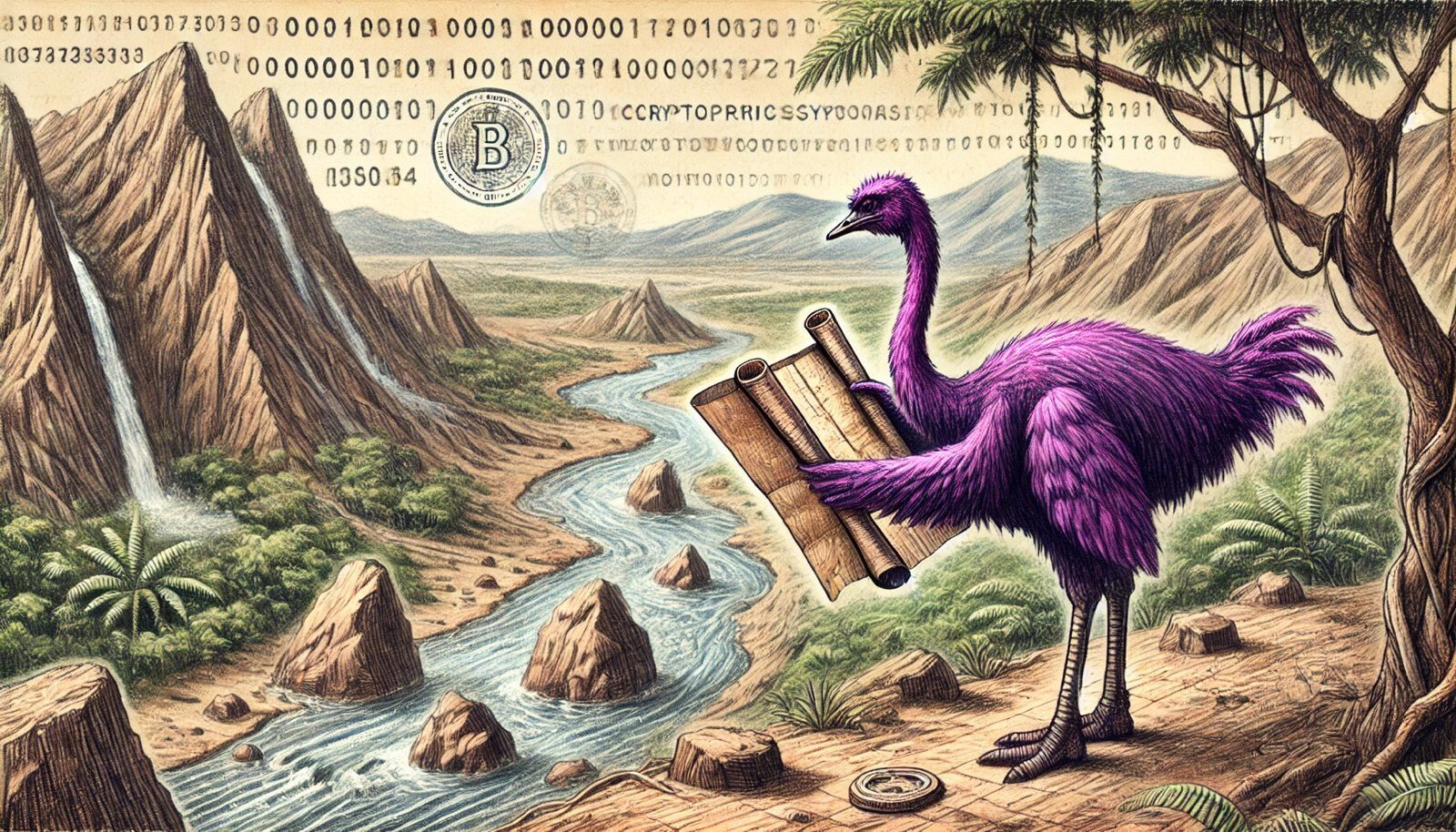
The following concepts are explored:
- Attestations: Users signalling to their social graph that they believe something to be true by publishing Attestations. These social proofs act as a decentralised verification system that leverages your web-of-trust.
- Proof of Place: An oracle-based system where physical letters are sent to real-world locations, confirming the corresponding digital ownership via cryptographic proofs. This binds physical locations in meatspace with their digital representations in the Nostrverse.
- Check-ins: Foursquare-style check-ins that can be verified using attestations from place owners, ensuring authenticity. This approach uses web-of-trust to validate check-ins and location ownership over time.
The goal is to leverage cryptographic ownership where necessary while preserving the open, collaborative nature of public data systems.
Open Data in a public commons has a place and should not be thrown out with the Web 2.0 bathwater.
Cognitive Dissonance
Ever since discovering Nostr in August of 2022 I've been grappling with how BTC Map - a project that helps bitcoiners find places to spend sats - should most appropriately use this new protocol.
I am assuming, dear reader, that you are somewhat familiar with Nostr - a relatively new protocol for decentralised identity and communication. If you don’t know your nsec from your npub, please take some time to read these excellent posts: Nostr is Identity for the Internet and The Power of Nostr by @max and @lyn, respectively. Nostr is so much more than a short-form social media replacement.
The social features (check-ins, reviews, etc.) that Nostr unlocks for BTC Map are clear and exciting - all your silos are indeed broken - however, something fundamental has been bothering me for a while and I think it comes down to data ownership.
For those unfamiliar, BTC Map uses OpenStreetMap (OSM) as its main geographic database. OSM is centred on the concept of a commons of objectively verifiable data that is maintained by a global community of volunteer editors; a Wikipedia for maps. There is no data ownership; the data is free (as in freedom) and anyone can edit anything. It is the data equivalent of FOSS (Free and Open Source Software) - FOSD if you will, but more commonly referred to as Open Data.
In contrast, Notes and Other Stuff on Nostr (Places in this cartographic context) are explicitly owned by the controller of the private key. These notes are free to propagate, but they are owned.
How do we reconcile the decentralised nature of Nostr, where data is cryptographically owned by individuals, with the community-managed data commons of OpenStreetMap, where no one owns the data?
Self-sovereign Identity
Before I address this coexistence question, I want to talk a little about identity as it pertains to ownership. If something is to be owned, it has to be owned by someone or something - an identity.
All identities that are not self-sovereign are, by definition, leased to you by a 3rd party. You rent your Facebook identity from Meta in exchange for your data. You rent your web domain from your DNS provider in exchange for your money.
Taken to the extreme, you rent your passport from your Government in exchange for your compliance. You are you at the pleasure of others. Where Bitcoin separates money from the state; Nostr separates identity from the state.
Or, as @nvk said recently: "Don't build your house on someone else's land.".
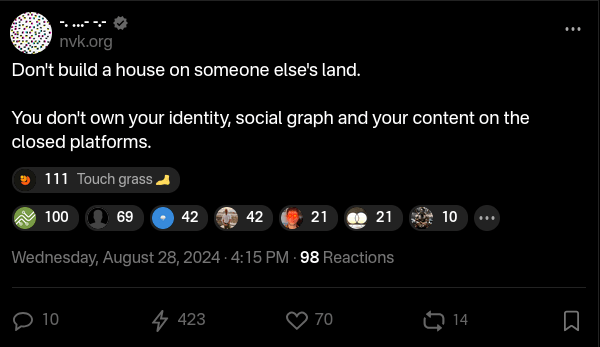
While we’ve had the tools for self-sovereign digital identity for decades (think PGP keys or WebAuthN), we haven't had the necessary social use cases nor the corresponding social graph to elevate these identities to the mainstream. Nostr fixes this.
Nostr is PGP for the masses and will take cryptographic identities mainstream.
Full NOSTARD?
Returning to the coexistence question: the data on OpenStreetMap isn’t directly owned by anyone, even though the physical entities the data represents might be privately owned. OSM is a data commons.
We can objectively agree on the location of a tree or a fire hydrant without needing permission to observe and record it. Sure, you could place a tree ‘on Nostr’, but why should you? Just because something can be ‘on Nostr’ doesn’t mean it should be.

There might be a dystopian future where we can't agree on what a tree is nor where it's located, but I hope we never get there. It's at this point we'll need a Wikifreedia variant of OpenStreetMap.
While integrating Nostr identities into OpenStreetMap would be valuable, the current OSM infrastructure, tools, and community already provide substantial benefits in managing this data commons without needing to go NOSTR-native - there's no need to go Full NOSTARD. H/T to @princeySOV for the original meme.
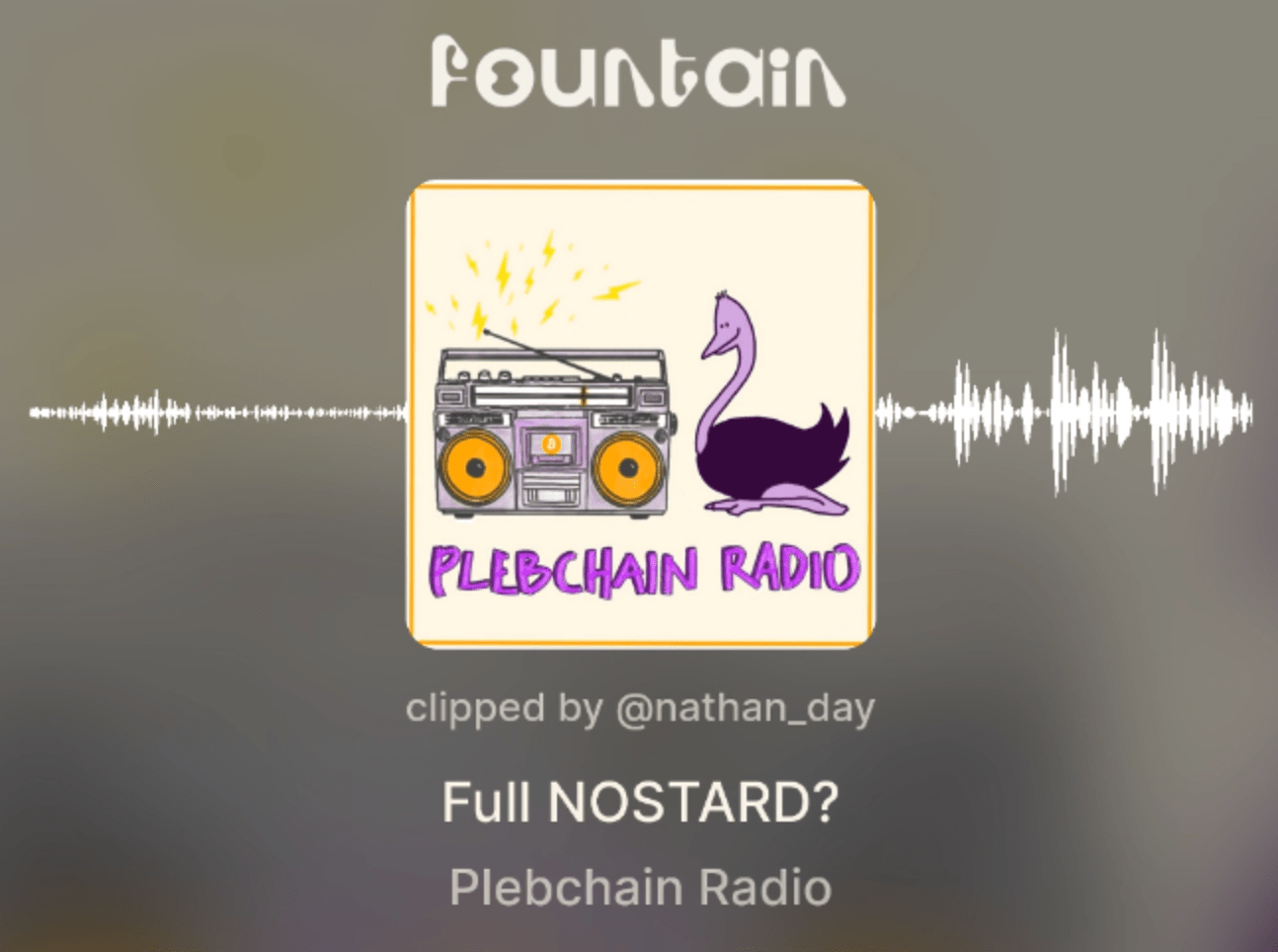
So, how do we appropriately blend cryptographically owned data with the commons?
If a location is owned in meatspace and it's useful to signal that ownership, it should also be owned in cyberspace. Our efforts should therefore focus on entities like businesses, while allowing the commons to manage public data for as long as it can successfully mitigate the tragedy of the commons.
The remainder of this article explores how we can:
- Verify ownership of a physical place in the real world;
- Link that ownership to the corresponding digital place in cyberspace.
As a side note, I don't see private key custodianship - or, even worse, permissioned use of Places signed by another identity's key - as any more viable than the rented identities of Web 2.0.
And as we all know, the Second Law of Infodynamics (no citation!) states that:
"The total amount of sensitive information leaked or exposed will always increase over time."
This especially holds true if that data is centralised.
Not your keys, not your notes. Not your keys, not your identity.
Places and Web-of-Trust
@Arkinox has been leading the charge on the Places NIP, introducing Nostr notes (kind 37515) that represent physical locations. The draft is well-crafted, with bonus points for linking back to OSM (and other location repositories) via NIP-73 - External Content IDs (championed by @oscar of @fountain).
However, as Nostr is permissionless, authenticity poses a challenge. Just because someone claims to own a physical location on the Internet doesn’t necessarily mean they have ownership or control of that location in the real world.
Ultimately, this problem can only be solved in a decentralised way by using Web-of-Trust - using your social graph and the perspectives of trusted peers to inform your own perspective. In the context of Places, this requires your network to form a view on which digital identity (public key / npub) is truly the owner of a physical place like your local coffee shop.
This requires users to:
- Verify the owner of a Place in cyberspace is the owner of a place in meatspace.
- Signal this verification to their social graph.
Let's look at the latter idea first with the concept of Attestations ...
Attestations
A way to signal to your social graph that you believe something to be true (or false for that matter) would be by publishing an Attestation note. An Attestation note would signify to your social graph that you think something is either true or false.
Imagine you're a regular at a local coffee shop. You publish an Attestation that says the shop is real and the owner behind the Nostr public key is who they claim to be. Your friends trust you, so they start trusting the shop's digital identity too.
However, attestations applied to Places are just a single use case. The attestation concept could be more widely applied across Nostr in a variety of ways (key rotation, identity linking, etc).
Here is a recent example from @lyn that would carry more signal if it were an Attestation:
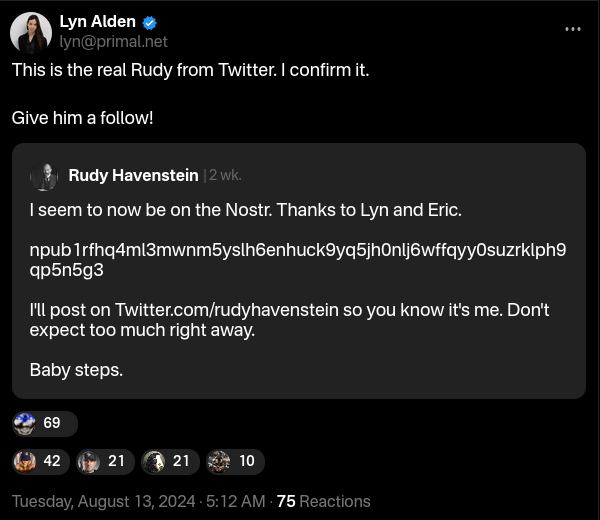
Parallels can be drawn between Attestations and transaction confirmations on the Bitcoin timechain; however, their importance to you would be weighted by clients and/or Data Vending Machines in accordance with:
- Your social graph;
- The type or subject of the content being attested and by whom;
- Your personal preferences.
They could also have a validity duration to be temporally bound, which would be particularly useful in the case of Places.
NIP-25 (Reactions) do allow for users to up/downvote notes with optional content (e.g., emojis) and could work for Attestations, but I think we need something less ambiguous and more definitive. ‘This is true’ resonates more strongly than ‘I like this.’.

There are similar concepts in the Web 3 / Web 5 world such as Verified Credentials by tdb; however, Nostr is the Web 3 now and so wen Attestation NIP?
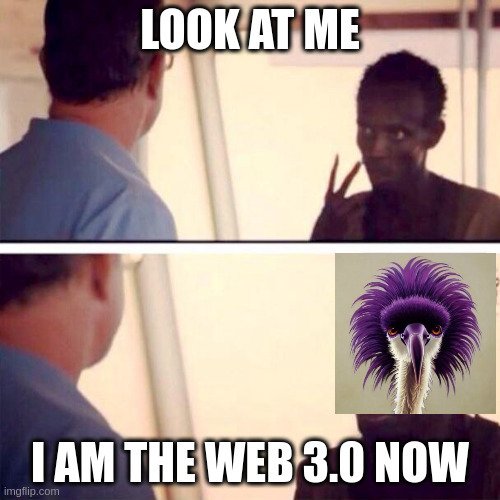
That said, I have seen @utxo has been exploring ‘smart contracts’ on nostr and Attestations may just be a relatively ‘dumb’ subset of the wider concept Nostr-native scripting combined with web-of-trust.
Proof of Place
Attestations handle the signalling of your truth, but what about the initial verification itself?
We already coved how this ultimately has to be derived from your social graph, but what if there was a way to help bootstrap this web-of-trust through the use of oracles? For those unfamiliar with oracles in the digital realm, they are simply trusted purveyors of truth.
Introducing Proof of Place, an out–of-band process where an oracle, such as BTC Map, would mail - yes mail a physical letter - a shared secret to the physical location being claimed in cyberspace. This shared secret would be locked to the public key (npub) making the claim, which, if unlocked, would prove that the associated private key (nsec) has physical access to the location in meatspace.
Proof of Place is really nothing more than a weighted Attestation. In a web-of-trust Nostrverse, an oracle is simply a npub (say BTC Map) that you weigh heavily for its opinion on a given topic (say Places).
In the Bitcoin world, Proof of Work anchors digital scarcity in cyberspace to physical scarcity (energy and time) in meatspace and as @Gigi says in PoW is Essential:
"A failure to understand Proof of Work, is a failure to understand Bitcoin."
In the Nostrverse, Proof of Place helps bridge the digital and physical worlds.
@Gigi also observes in Memes vs The World that:
"In Bitcoin, the map is the territory. We can infer everything we care about by looking at the map alone."
This isn’t true for Nostr.
In the Nostrverse, the map IS NOT the territory. However, Proof of Place enables us to send cryptographic drones down into the physical territory to help us interpret our digital maps. 🤯
Check-ins
Although not a draft NIP yet, @Arkinox has also been exploring the familiar concept of Foursquare-style Check-ins on Nostr (with kind 13811 notes).
For the uninitiated, Check-ins are simply notes that signal the publisher is at a given location. These locations could be Places (in the Nostr sense) or any other given digital representation of a location for that matter (such as OSM elements) if NIP-73 - External Content IDs are used.
Of course, not everyone will be a Check-in enjoyooor as the concept will not sit well with some people’s threat models and OpSec practices.
Bringing Check-ins to Nostr is possible (as @sebastix capably shows here), but they suffer the same authenticity issues as Places. Just because I say I'm at a given location doesn't mean that I am.
Back in the Web 2.0 days, Foursquare mitigated this by relying on the GPS position of the phone running their app, but this is of course spoofable.
How should we approach Check-in verifiability in the Nostrverse? Well, just like with Places, we can use Attestations and WoT. In the context of Check-ins, an Attestation from the identity (npub) of the Place being checked-in to would be a particularly strong signal. An NFC device could be placed in a coffee shop and attest to check-ins without requiring the owner to manually intervene - I’m sure @blackcoffee and @Ben Arc could hack something together over a weekend!
Check-ins could also be used as a signal for bonafide Place ownership over time.
Summary: Trust Your Bros
So, to recap, we have:
Places: Digital representations of physical locations on Nostr.
Check-ins: Users signalling their presence at a location.
Attestations: Verifiable social proofs used to confirm ownership or the truth of a claim.
You can visualise how these three concepts combine in the diagram below:
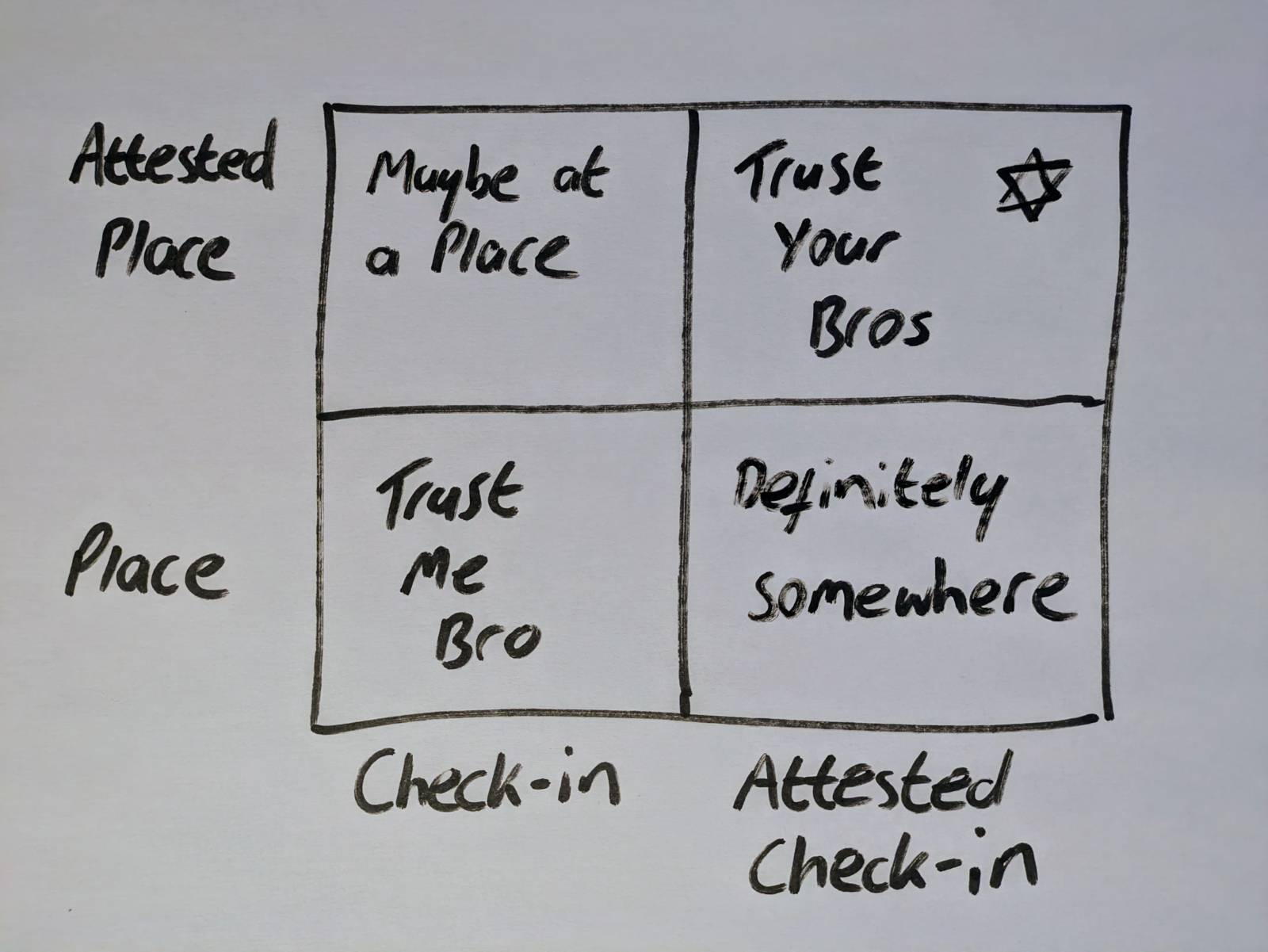
And, as always, top right trumps bottom left! We have:
Level 0 - Trust Me Bro: Anyone can check-in anywhere. The Place might not exist or might be impersonating the real place in meatspace. The person behind the npub may not have even been there at all.
Level 1 - Definitely Maybe Somewhere: This category covers the middleground of ‘Maybe at a Place’ and ‘Definitely Somewhere’. In these examples, you are either self-certifying that you have checked-in at an Attested Place or you are having others attest that you have checked-in at a Place that might not even exist IRL.
Level 2 - Trust Your Bros: An Attested Check-in at an Attested Place. Your individual level of trust would be a function of the number of Attestations and how you weigh them within your own social graph.

Perhaps the gold standard (or should that be the Bitcoin standard?) would be a Check-in attested by the owner of the Place, which in itself was attested by BTC Map?
Or perhaps not. Ultimately, it’s the users responsibility to determine what they trust by forming their own perspective within the Nostrverse powered by web-of-trust algorithms they control. ‘Trust Me Bro’ or ‘Trust Your Bros’ - you decide.
As we navigate the frontier of cryptographic ownership and decentralised data commons, it’s up to us to find the balance between preserving the Open Data commons and embracing self-sovereign digital identities.
Thanks
With thanks to Arkinox, Avi, Ben Gunn, Kieran, Blackcoffee, Sebastix, Tomek, Calle, Short Fiat, Ben Weeks and Bitcoms for helping shape my thoughts and refine content, whether you know it or not!
-
 @ ee11a5df:b76c4e49
2024-09-11 08:16:37
@ ee11a5df:b76c4e49
2024-09-11 08:16:37Bye-Bye Reply Guy
There is a camp of nostr developers that believe spam filtering needs to be done by relays. Or at the very least by DVMs. I concur. In this way, once you configure what you want to see, it applies to all nostr clients.
But we are not there yet.
In the mean time we have ReplyGuy, and gossip needed some changes to deal with it.
Strategies in Short
- WEB OF TRUST: Only accept events from people you follow, or people they follow - this avoids new people entirely until somebody else that you follow friends them first, which is too restrictive for some people.
- TRUSTED RELAYS: Allow every post from relays that you trust to do good spam filtering.
- REJECT FRESH PUBKEYS: Only accept events from people you have seen before - this allows you to find new people, but you will miss their very first post (their second post must count as someone you have seen before, even if you discarded the first post)
- PATTERN MATCHING: Scan for known spam phrases and words and block those events, either on content or metadata or both or more.
- TIE-IN TO EXTERNAL SYSTEMS: Require a valid NIP-05, or other nostr event binding their identity to some external identity
- PROOF OF WORK: Require a minimum proof-of-work
All of these strategies are useful, but they have to be combined properly.
filter.rhai
Gossip loads a file called "filter.rhai" in your gossip directory if it exists. It must be a Rhai language script that meets certain requirements (see the example in the gossip source code directory). Then it applies it to filter spam.
This spam filtering code is being updated currently. It is not even on unstable yet, but it will be there probably tomorrow sometime. Then to master. Eventually to a release.
Here is an example using all of the techniques listed above:
```rhai // This is a sample spam filtering script for the gossip nostr // client. The language is called Rhai, details are at: // https://rhai.rs/book/ // // For gossip to find your spam filtering script, put it in // your gossip profile directory. See // https://docs.rs/dirs/latest/dirs/fn.data_dir.html // to find the base directory. A subdirectory "gossip" is your // gossip data directory which for most people is their profile // directory too. (Note: if you use a GOSSIP_PROFILE, you'll // need to put it one directory deeper into that profile // directory). // // This filter is used to filter out and refuse to process // incoming events as they flow in from relays, and also to // filter which events get/ displayed in certain circumstances. // It is only run on feed-displayable event kinds, and only by // authors you are not following. In case of error, nothing is // filtered. // // You must define a function called 'filter' which returns one // of these constant values: // DENY (the event is filtered out) // ALLOW (the event is allowed through) // MUTE (the event is filtered out, and the author is // automatically muted) // // Your script will be provided the following global variables: // 'caller' - a string that is one of "Process", // "Thread", "Inbox" or "Global" indicating // which part of the code is running your // script // 'content' - the event content as a string // 'id' - the event ID, as a hex string // 'kind' - the event kind as an integer // 'muted' - if the author is in your mute list // 'name' - if we have it, the name of the author // (or your petname), else an empty string // 'nip05valid' - whether nip05 is valid for the author, // as a boolean // 'pow' - the Proof of Work on the event // 'pubkey' - the event author public key, as a hex // string // 'seconds_known' - the number of seconds that the author // of the event has been known to gossip // 'spamsafe' - true only if the event came in from a // relay marked as SpamSafe during Process // (even if the global setting for SpamSafe // is off)
fn filter() {
// Show spam on global // (global events are ephemeral; these won't grow the // database) if caller=="Global" { return ALLOW; } // Block ReplyGuy if name.contains("ReplyGuy") || name.contains("ReplyGal") { return DENY; } // Block known DM spam // (giftwraps are unwrapped before the content is passed to // this script) if content.to_lower().contains( "Mr. Gift and Mrs. Wrap under the tree, KISSING!" ) { return DENY; } // Reject events from new pubkeys, unless they have a high // PoW or we somehow already have a nip05valid for them // // If this turns out to be a legit person, we will start // hearing their events 2 seconds from now, so we will // only miss their very first event. if seconds_known <= 2 && pow < 25 && !nip05valid { return DENY; } // Mute offensive people if content.to_lower().contains(" kike") || content.to_lower().contains("kike ") || content.to_lower().contains(" nigger") || content.to_lower().contains("nigger ") { return MUTE; } // Reject events from muted people // // Gossip already does this internally, and since we are // not Process, this is rather redundant. But this works // as an example. if muted { return DENY; } // Accept if the PoW is large enough if pow >= 25 { return ALLOW; } // Accept if their NIP-05 is valid if nip05valid { return ALLOW; } // Accept if the event came through a spamsafe relay if spamsafe { return ALLOW; } // Reject the rest DENY} ```
-
 @ 21335073:a244b1ad
2025-05-01 01:51:10
@ 21335073:a244b1ad
2025-05-01 01:51:10Please respect Virginia Giuffre’s memory by refraining from asking about the circumstances or theories surrounding her passing.
Since Virginia Giuffre’s death, I’ve reflected on what she would want me to say or do. This piece is my attempt to honor her legacy.
When I first spoke with Virginia, I was struck by her unshakable hope. I had grown cynical after years in the anti-human trafficking movement, worn down by a broken system and a government that often seemed complicit. But Virginia’s passion, creativity, and belief that survivors could be heard reignited something in me. She reminded me of my younger, more hopeful self. Instead of warning her about the challenges ahead, I let her dream big, unburdened by my own disillusionment. That conversation changed me for the better, and following her lead led to meaningful progress.
Virginia was one of the bravest people I’ve ever known. As a survivor of Epstein, Maxwell, and their co-conspirators, she risked everything to speak out, taking on some of the world’s most powerful figures.
She loved when I said, “Epstein isn’t the only Epstein.” This wasn’t just about one man—it was a call to hold all abusers accountable and to ensure survivors find hope and healing.
The Epstein case often gets reduced to sensational details about the elite, but that misses the bigger picture. Yes, we should be holding all of the co-conspirators accountable, we must listen to the survivors’ stories. Their experiences reveal how predators exploit vulnerabilities, offering lessons to prevent future victims.
You’re not powerless in this fight. Educate yourself about trafficking and abuse—online and offline—and take steps to protect those around you. Supporting survivors starts with small, meaningful actions. Free online resources can guide you in being a safe, supportive presence.
When high-profile accusations arise, resist snap judgments. Instead of dismissing survivors as “crazy,” pause to consider the trauma they may be navigating. Speaking out or coping with abuse is never easy. You don’t have to believe every claim, but you can refrain from attacking accusers online.
Society also fails at providing aftercare for survivors. The government, often part of the problem, won’t solve this. It’s up to us. Prevention is critical, but when abuse occurs, step up for your loved ones and community. Protect the vulnerable. it’s a challenging but a rewarding journey.
If you’re contributing to Nostr, you’re helping build a censorship resistant platform where survivors can share their stories freely, no matter how powerful their abusers are. Their voices can endure here, offering strength and hope to others. This gives me great hope for the future.
Virginia Giuffre’s courage was a gift to the world. It was an honor to know and serve her. She will be deeply missed. My hope is that her story inspires others to take on the powerful.
-
 @ 52b4a076:e7fad8bd
2025-04-28 00:48:57
@ 52b4a076:e7fad8bd
2025-04-28 00:48:57I have been recently building NFDB, a new relay DB. This post is meant as a short overview.
Regular relays have challenges
Current relay software have significant challenges, which I have experienced when hosting Nostr.land: - Scalability is only supported by adding full replicas, which does not scale to large relays. - Most relays use slow databases and are not optimized for large scale usage. - Search is near-impossible to implement on standard relays. - Privacy features such as NIP-42 are lacking. - Regular DB maintenance tasks on normal relays require extended downtime. - Fault-tolerance is implemented, if any, using a load balancer, which is limited. - Personalization and advanced filtering is not possible. - Local caching is not supported.
NFDB: A scalable database for large relays
NFDB is a new database meant for medium-large scale relays, built on FoundationDB that provides: - Near-unlimited scalability - Extended fault tolerance - Instant loading - Better search - Better personalization - and more.
Search
NFDB has extended search capabilities including: - Semantic search: Search for meaning, not words. - Interest-based search: Highlight content you care about. - Multi-faceted queries: Easily filter by topic, author group, keywords, and more at the same time. - Wide support for event kinds, including users, articles, etc.
Personalization
NFDB allows significant personalization: - Customized algorithms: Be your own algorithm. - Spam filtering: Filter content to your WoT, and use advanced spam filters. - Topic mutes: Mute topics, not keywords. - Media filtering: With Nostr.build, you will be able to filter NSFW and other content - Low data mode: Block notes that use high amounts of cellular data. - and more
Other
NFDB has support for many other features such as: - NIP-42: Protect your privacy with private drafts and DMs - Microrelays: Easily deploy your own personal microrelay - Containers: Dedicated, fast storage for discoverability events such as relay lists
Calcite: A local microrelay database
Calcite is a lightweight, local version of NFDB that is meant for microrelays and caching, meant for thousands of personal microrelays.
Calcite HA is an additional layer that allows live migration and relay failover in under 30 seconds, providing higher availability compared to current relays with greater simplicity. Calcite HA is enabled in all Calcite deployments.
For zero-downtime, NFDB is recommended.
Noswhere SmartCache
Relays are fixed in one location, but users can be anywhere.
Noswhere SmartCache is a CDN for relays that dynamically caches data on edge servers closest to you, allowing: - Multiple regions around the world - Improved throughput and performance - Faster loading times
routerd
routerdis a custom load-balancer optimized for Nostr relays, integrated with SmartCache.routerdis specifically integrated with NFDB and Calcite HA to provide fast failover and high performance.Ending notes
NFDB is planned to be deployed to Nostr.land in the coming weeks.
A lot more is to come. 👀️️️️️️
-
 @ 5d4b6c8d:8a1c1ee3
2025-05-08 01:22:05
@ 5d4b6c8d:8a1c1ee3
2025-05-08 01:22:05I've been thinking about how Predyx and other lightning based prediction markets might finance their operations, without undermining their core function of eliciting information from people.
The standard approach, of offering less-than-fair odds, guarantees long-run profitability (as long as you have enough customers), but it also creates a friction for participants that reduces the information value of their transactions. So, what are some less frictiony options for generating revenue?
Low hanging fruit
- Close markets in real-time: Rather than prespecifying a closing time for some markets, like sports, it's better to close the market at the moment the outcome is realized. This both prevents post hoc transactions and enables late stage transactions. This should be easily automatable (I say as someone with no idea how to do that), with the right resolution criteria.
- Round off shares: Shares and sats are discrete, so just make sure any necessary rounding is always in the house's favor.
- Set initial probabilities well: Use whatever external information is available to open markets as near to the "right" value as possible.
- Arbitrage: whenever markets are related to each other, make sure to resolve any illogical odds automatically
The point of these four is to avoid giving away free sats. None of them reduce productive use of the market. Keeping markets open up until the outcome is realized will probably greatly increase the number of transactions, since that's usually when the most information is coming in.
Third party support
- Ads are the most obvious form of third party revenue
- Sponsorships are the more interesting one: Allow sponsors to boost a market's visibility. This is similar to advertising, but it also capitalizes on the possibility of a market being of particular interest to someone.
- Charge for market creation: users should be able to create new markets (this will also enhance trade quantity and site traffic), but it should be costly to create a market. If prediction markets really provide higher quality information, then it's reasonable to charge for it.
- Arbitrage: Monitor external odds and whenever a gain can be locked in, place the bets (buy the shares) that guarantee a gain.
Bitcoin stuff
- Routing fees: The volume of sats moving into, out of, and being held in these markets will require a fairly large lightning node. Following some helpful tips to optimize fee revenue will generate some sats for logistical stuff that had to be done anyway.
- Treasury strategy: Take out loans against the revenue generated from all of the above and buy bitcoin: NGU -> repay with a fraction of the bitcoin, NGD -> repay with site revenue.
Bitcoin and Lightning Competitive Advantages
These aren't revenue ideas. They're just a couple of advantages lightning and bitcoin provide over fiat that should allow charging lower spreads than a traditional prediction market or sportsbook.
Traditional betting or prediction platforms are earning depreciating fiat, while a bitcoin based platform earns appreciating bitcoin. Traditional spreads must therefor be larger, in order to pull in the same real return. This also means the users' odds are worse on fiat platforms (again in real terms), even if the listed odds are the same, because their winnings will have depreciated by the time they receive them. Technically, this opens an opportunity to charge even higher spreads, but as mentioned in the intro, that would be bad for the information purposes of the market.
Lightning has much lower transactions costs than fiat transactions. So, even with tighter spreads, a lightning platform can net a better (nominal) return per transaction.
@mega_dreamer, I imagine most of those ideas were already on y'all's radar, and obviously you're already doing some, but I wanted to get them out of my head and onto digital paper. Hopefully, some of this will provide some useful food for thought.
originally posted at https://stacker.news/items/974372
-
 @ 91bea5cd:1df4451c
2025-04-26 10:16:21
@ 91bea5cd:1df4451c
2025-04-26 10:16:21O Contexto Legal Brasileiro e o Consentimento
No ordenamento jurídico brasileiro, o consentimento do ofendido pode, em certas circunstâncias, afastar a ilicitude de um ato que, sem ele, configuraria crime (como lesão corporal leve, prevista no Art. 129 do Código Penal). Contudo, o consentimento tem limites claros: não é válido para bens jurídicos indisponíveis, como a vida, e sua eficácia é questionável em casos de lesões corporais graves ou gravíssimas.
A prática de BDSM consensual situa-se em uma zona complexa. Em tese, se ambos os parceiros são adultos, capazes, e consentiram livre e informadamente nos atos praticados, sem que resultem em lesões graves permanentes ou risco de morte não consentido, não haveria crime. O desafio reside na comprovação desse consentimento, especialmente se uma das partes, posteriormente, o negar ou alegar coação.
A Lei Maria da Penha (Lei nº 11.340/2006)
A Lei Maria da Penha é um marco fundamental na proteção da mulher contra a violência doméstica e familiar. Ela estabelece mecanismos para coibir e prevenir tal violência, definindo suas formas (física, psicológica, sexual, patrimonial e moral) e prevendo medidas protetivas de urgência.
Embora essencial, a aplicação da lei em contextos de BDSM pode ser delicada. Uma alegação de violência por parte da mulher, mesmo que as lesões ou situações decorram de práticas consensuais, tende a receber atenção prioritária das autoridades, dada a presunção de vulnerabilidade estabelecida pela lei. Isso pode criar um cenário onde o parceiro masculino enfrenta dificuldades significativas em demonstrar a natureza consensual dos atos, especialmente se não houver provas robustas pré-constituídas.
Outros riscos:
Lesão corporal grave ou gravíssima (art. 129, §§ 1º e 2º, CP), não pode ser justificada pelo consentimento, podendo ensejar persecução penal.
Crimes contra a dignidade sexual (arts. 213 e seguintes do CP) são de ação pública incondicionada e independem de representação da vítima para a investigação e denúncia.
Riscos de Falsas Acusações e Alegação de Coação Futura
Os riscos para os praticantes de BDSM, especialmente para o parceiro que assume o papel dominante ou que inflige dor/restrição (frequentemente, mas não exclusivamente, o homem), podem surgir de diversas frentes:
- Acusações Externas: Vizinhos, familiares ou amigos que desconhecem a natureza consensual do relacionamento podem interpretar sons, marcas ou comportamentos como sinais de abuso e denunciar às autoridades.
- Alegações Futuras da Parceira: Em caso de término conturbado, vingança, arrependimento ou mudança de perspectiva, a parceira pode reinterpretar as práticas passadas como abuso e buscar reparação ou retaliação através de uma denúncia. A alegação pode ser de que o consentimento nunca existiu ou foi viciado.
- Alegação de Coação: Uma das formas mais complexas de refutar é a alegação de que o consentimento foi obtido mediante coação (física, moral, psicológica ou econômica). A parceira pode alegar, por exemplo, que se sentia pressionada, intimidada ou dependente, e que seu "sim" não era genuíno. Provar a ausência de coação a posteriori é extremamente difícil.
- Ingenuidade e Vulnerabilidade Masculina: Muitos homens, confiando na dinâmica consensual e na parceira, podem negligenciar a necessidade de precauções. A crença de que "isso nunca aconteceria comigo" ou a falta de conhecimento sobre as implicações legais e o peso processual de uma acusação no âmbito da Lei Maria da Penha podem deixá-los vulneráveis. A presença de marcas físicas, mesmo que consentidas, pode ser usada como evidência de agressão, invertendo o ônus da prova na prática, ainda que não na teoria jurídica.
Estratégias de Prevenção e Mitigação
Não existe um método infalível para evitar completamente o risco de uma falsa acusação, mas diversas medidas podem ser adotadas para construir um histórico de consentimento e reduzir vulnerabilidades:
- Comunicação Explícita e Contínua: A base de qualquer prática BDSM segura é a comunicação constante. Negociar limites, desejos, palavras de segurança ("safewords") e expectativas antes, durante e depois das cenas é crucial. Manter registros dessas negociações (e-mails, mensagens, diários compartilhados) pode ser útil.
-
Documentação do Consentimento:
-
Contratos de Relacionamento/Cena: Embora a validade jurídica de "contratos BDSM" seja discutível no Brasil (não podem afastar normas de ordem pública), eles servem como forte evidência da intenção das partes, da negociação detalhada de limites e do consentimento informado. Devem ser claros, datados, assinados e, idealmente, reconhecidos em cartório (para prova de data e autenticidade das assinaturas).
-
Registros Audiovisuais: Gravar (com consentimento explícito para a gravação) discussões sobre consentimento e limites antes das cenas pode ser uma prova poderosa. Gravar as próprias cenas é mais complexo devido a questões de privacidade e potencial uso indevido, mas pode ser considerado em casos específicos, sempre com consentimento mútuo documentado para a gravação.
Importante: a gravação deve ser com ciência da outra parte, para não configurar violação da intimidade (art. 5º, X, da Constituição Federal e art. 20 do Código Civil).
-
-
Testemunhas: Em alguns contextos de comunidade BDSM, a presença de terceiros de confiança durante negociações ou mesmo cenas pode servir como testemunho, embora isso possa alterar a dinâmica íntima do casal.
- Estabelecimento Claro de Limites e Palavras de Segurança: Definir e respeitar rigorosamente os limites (o que é permitido, o que é proibido) e as palavras de segurança é fundamental. O desrespeito a uma palavra de segurança encerra o consentimento para aquele ato.
- Avaliação Contínua do Consentimento: O consentimento não é um cheque em branco; ele deve ser entusiástico, contínuo e revogável a qualquer momento. Verificar o bem-estar do parceiro durante a cena ("check-ins") é essencial.
- Discrição e Cuidado com Evidências Físicas: Ser discreto sobre a natureza do relacionamento pode evitar mal-entendidos externos. Após cenas que deixem marcas, é prudente que ambos os parceiros estejam cientes e de acordo, talvez documentando por fotos (com data) e uma nota sobre a consensualidade da prática que as gerou.
- Aconselhamento Jurídico Preventivo: Consultar um advogado especializado em direito de família e criminal, com sensibilidade para dinâmicas de relacionamento alternativas, pode fornecer orientação personalizada sobre as melhores formas de documentar o consentimento e entender os riscos legais específicos.
Observações Importantes
- Nenhuma documentação substitui a necessidade de consentimento real, livre, informado e contínuo.
- A lei brasileira protege a "integridade física" e a "dignidade humana". Práticas que resultem em lesões graves ou que violem a dignidade de forma não consentida (ou com consentimento viciado) serão ilegais, independentemente de qualquer acordo prévio.
- Em caso de acusação, a existência de documentação robusta de consentimento não garante a absolvição, mas fortalece significativamente a defesa, ajudando a demonstrar a natureza consensual da relação e das práticas.
-
A alegação de coação futura é particularmente difícil de prevenir apenas com documentos. Um histórico consistente de comunicação aberta (whatsapp/telegram/e-mails), respeito mútuo e ausência de dependência ou controle excessivo na relação pode ajudar a contextualizar a dinâmica como não coercitiva.
-
Cuidado com Marcas Visíveis e Lesões Graves Práticas que resultam em hematomas severos ou lesões podem ser interpretadas como agressão, mesmo que consentidas. Evitar excessos protege não apenas a integridade física, mas também evita questionamentos legais futuros.
O que vem a ser consentimento viciado
No Direito, consentimento viciado é quando a pessoa concorda com algo, mas a vontade dela não é livre ou plena — ou seja, o consentimento existe formalmente, mas é defeituoso por alguma razão.
O Código Civil brasileiro (art. 138 a 165) define várias formas de vício de consentimento. As principais são:
Erro: A pessoa se engana sobre o que está consentindo. (Ex.: A pessoa acredita que vai participar de um jogo leve, mas na verdade é exposta a práticas pesadas.)
Dolo: A pessoa é enganada propositalmente para aceitar algo. (Ex.: Alguém mente sobre o que vai acontecer durante a prática.)
Coação: A pessoa é forçada ou ameaçada a consentir. (Ex.: "Se você não aceitar, eu termino com você" — pressão emocional forte pode ser vista como coação.)
Estado de perigo ou lesão: A pessoa aceita algo em situação de necessidade extrema ou abuso de sua vulnerabilidade. (Ex.: Alguém em situação emocional muito fragilizada é induzida a aceitar práticas que normalmente recusaria.)
No contexto de BDSM, isso é ainda mais delicado: Mesmo que a pessoa tenha "assinado" um contrato ou dito "sim", se depois ela alegar que seu consentimento foi dado sob medo, engano ou pressão psicológica, o consentimento pode ser considerado viciado — e, portanto, juridicamente inválido.
Isso tem duas implicações sérias:
-
O crime não se descaracteriza: Se houver vício, o consentimento é ignorado e a prática pode ser tratada como crime normal (lesão corporal, estupro, tortura, etc.).
-
A prova do consentimento precisa ser sólida: Mostrando que a pessoa estava informada, lúcida, livre e sem qualquer tipo de coação.
Consentimento viciado é quando a pessoa concorda formalmente, mas de maneira enganada, forçada ou pressionada, tornando o consentimento inútil para efeitos jurídicos.
Conclusão
Casais que praticam BDSM consensual no Brasil navegam em um terreno que exige não apenas confiança mútua e comunicação excepcional, mas também uma consciência aguçada das complexidades legais e dos riscos de interpretações equivocadas ou acusações mal-intencionadas. Embora o BDSM seja uma expressão legítima da sexualidade humana, sua prática no Brasil exige responsabilidade redobrada. Ter provas claras de consentimento, manter a comunicação aberta e agir com prudência são formas eficazes de se proteger de falsas alegações e preservar a liberdade e a segurança de todos os envolvidos. Embora leis controversas como a Maria da Penha sejam "vitais" para a proteção contra a violência real, os praticantes de BDSM, e em particular os homens nesse contexto, devem adotar uma postura proativa e prudente para mitigar os riscos inerentes à potencial má interpretação ou instrumentalização dessas práticas e leis, garantindo que a expressão de sua consensualidade esteja resguardada na medida do possível.
Importante: No Brasil, mesmo com tudo isso, o Ministério Público pode denunciar por crime como lesão corporal grave, estupro ou tortura, independente de consentimento. Então a prudência nas práticas é fundamental.
Aviso Legal: Este artigo tem caráter meramente informativo e não constitui aconselhamento jurídico. As leis e interpretações podem mudar, e cada situação é única. Recomenda-se buscar orientação de um advogado qualificado para discutir casos específicos.
Se curtiu este artigo faça uma contribuição, se tiver algum ponto relevante para o artigo deixe seu comentário.
-
 @ a5ee4475:2ca75401
2025-05-08 16:41:28
@ a5ee4475:2ca75401
2025-05-08 16:41:28profissional #brasileiros #portugues #lista
[Em Atualização]
nostr:nprofile1qqsvz46xcwfqjyw5xkjh3gs8v63udn6slp2wehn8pyndtcpvvxa7rwqpzpmhxue69uhkummnw3ezumt0d5hsdzu0zr - Estude BITCOIN
!(image)[https://nostrcheck.me/media/public/nostrcheck.me_8896510008477875231689270519.webp]
Canal Principal: https://m.youtube.com/@altierebtc
Canal de Games: https://m.youtube.com/channel/UCm9dUXKlVbDOfa-7GB-6gxw
Twitch: https://m.twitch.tv/altiere/home
Endereço Lightning: Quietcarol43@walletofsatoshi.com
Peter Turguniev - nostr:nprofile1qqszleff9gkly5z85wf0em4dw4zcsaw8whp3es50f0syeme73kc49ygpzemhxue69uhkummnw3ex2mrfw3jhxtn0wfnj7qgj4r9
Site: ANCAP.SU
!(image)[https://i.im.ge/2023/06/01/hCgPJa.03de86ce-3106-4a4b-859c-b6b4d9e6e62e.jpg]
Canal Principal: https://m.youtube.com/@ancap_su
Visão Libertária: https://m.youtube.com/@Visao_Libertaria
Canal de Programação: https://m.youtube.com/@safesrc
Canal Mundo em Revolução: https://m.youtube.com/@wrevolving
Canal Hoje no X: https://m.youtube.com/@noxhoje
Canal Antigo: https://m.youtube.com/@ANCAPSUClassic
Site: https://pimentanocafe.com.br/
ANCAP.SU (Odysee): https://odysee.com/@ancapsu:be
Visão Libertária (Odysee): https://odysee.com/@ancapsu:c
Endereço Lightning: Ancapsu@getalby.com
nostr:nprofile1qqsw2k9dqcwkelfl0cr2ranhfvqx98et635hymmefl4rr89e4x9xtaqpr9mhxue69uhhyetvv9ujuumwdae8gtnnda3kjctv9u55vn8f
Economista e Cientista de Dados
!(image)[https://image.nostr.build/9caacd289ed01ad6fecd331a43218da6ce3c2f5713d9e9a4fc8c8b531728deb8.jpg]
Repositorio de codigos: https://github.com/Argonalyst
Notícias sobre tecnologia e inteligência artificial: https://youtube.com/@argonalyst
https://www.argonalyst.com/
Bitcoinheiros - nostr:nprofile1qqsdg0vnpw76lujncaexfh0fy747dheynq9s5m9wqxulcu2szlwqpfcpzamhxue69uhhyetvv9ujumn0wd68ytnzv9hxgtcpz4mhxue69uhhyetvv9ujuerpd46hxtnfduhszyrhwden5te0dehhxarj9ekk7mf0cmje9h
!(image)[https://void.cat/d/A6LisLBh5cmyYtrgkjqBxe.webp]
Canal Principal: https://m.youtube.com/@Bitcoinheiros
Canal de Cortes: https://www.youtube.com/channel/UC82m2TCXSHWcqSLym5BzjLQ/
Site: https://bitcoinheiros.com/
Endereço Lightning: ln@pay.bitcoinheiros.com
Área Bitcoin - Divulgação sobre Bitcoin
nostr:nprofile1qqstvy6savnm83mf9775t70d2d2lp2rsw8hys5rfsq4lhy9qachctpgpzemhxue69uhkummnw3ex2mrfw3jhxtn0wfnj7svvx93 e nostr:npub1yzhwak5yc7pzvukwzlfj7p0dp2y07jd42y45h0maxuej4us5rcjsssxkej
!(image)[https://m.primal.net/KXBa.jpg]
Canal Principal: https://m.youtube.com/@AreaBitcoin
Site: Areabitcoin.com.br
Endereço Lightning: Cyanlionfish5@primal.net
nostr:nprofile1qqs075udlpdc60js8ade7st2zt942ghj0ehd6frnwjtylss5c9kdxzgpr9mhxue69uhkyu3wwp6hyurvv4ex2mrp0yhxxmmd9uq32amnwvaz7tmhda6zumn0wd68ytnsv9e8g7g24pghx - Dev
Repositório: https://github.com/antonioconselheiro/omeglestr
nostr:nprofile1qqsqxh6ffher03qlngcnf93g9kyv7gzkmz6h6t8qylzkw8hup8zxytspzpmhxue69uhkummnw3ezumt0d5hszrnhwden5te0dehhxtnvdakz7qgawaehxw309ahx7um5wghxy6t5vdhkjmn9wgh8xmmrd9skctcx72xdd
Biólogo e colunista
!(image)[https://image.nostr.build/8bddd8cd3e2e65c76cd7b02179e3ddeb3a1a1171f0a0ae32594278a9ccf19da0.jpg]
Canal Principal: https://m.youtube.com/@EliVieira
Endereço Lightning: Elivieira@bipa.app
nostr:nprofile1qqsgy4gvl2n03ylylv0ack59res7nytkjdq5wpqcw9ch5eqhwwnpnvgpypmhxw309aex2mrp0ykkummnw3ez6cnj9e3k7mfwvfer5dpcxsuz7qgewaehxw309a38ytnsw4e8qmr9wfjkccte9e3k7mf0qyvhwumn8ghj7cmv9ec82unsd3jhyetvv9ujucm0d5hs6m9t8t
Canal Principal: https://youtube.com/@Akitando
https://www.akitaonrails.com/
https://www.codeminer42.com/
Endereço Lightning: Akitaonrails@strike.me
Felipe Ojeda - nostr:nprofile1qqsv7c6qu0qsy9wxg9cqkhle078j46rhsvz64f6vukxdmpkdt7vt55cpz9mhxue69uhkummnw3ezuamfdejj7qg4waehxw309aex2mrp0yhxgctdw4eju6t09uq3wamnwvaz7tmpw3kxzuewdehhxarj9ekxzmny9uwes77q
Saída fiscal para o Paraguai e P2P
https://youtube.com/@bitcoineliberdade
Lightning Network: ojeda@blink.sv
nostr:npub18zw66c2lvt6s06drtvtkjjyvnfwjdgg2w7y36rmtmg7rnfnkhhxq7hhu4t
Engenheiro
Construção econômica e sustentável: https://amandaefernando.com.br/
https://youtube.com/@amandaefernando
Carteira de Zap: lilacgecko5@blink.com
nostr:npub1kqd90mglkp0ltmc5eacd0claqvnayaklkvzkdhx7x84w9uavplxszvrlwd
Canal principal: https://youtube.com/@fernandoulrichcanal
nostr:npub180cvv07tjdrrgpa0j7j7tmnyl2yr6yr7l8j4s3evf6u64th6gkwsyjh6w6
https://fiatjaf.com/
Repositórios de códigos:
https://git.fiatjaf.com/
https://github.com/fiatjaf
Outros repositórios:
https://github.com/nostr-protocol/nostr
Carteita de Zap: fiatjaf@zbd.gg
nostr:nprofile1qqsw2s3zjedanx8nve9zda7zkemx5n5d4v0mt0ncehfa7qkkjse5v5gpzpmhxue69uhkummnw3ezumt0d5hsxnexr8
Canal Principal: https://m.youtube.com/@FoxyeBitcoin
Endereço Lightning: Foxye@bipa.app
nostr:npub1vudm0xsx4cv3zkvvq7k5836tnkv64q0h7uudnwujr4a4l9zc2p9s0x8url - Irmãos Chioca
Tradutores e publicadores de temáticas libertárias [livros, artigos, vídeos e textos]
https://rothbardbrasil.com/
Canal principal: https://youtube.com/@institutorothbardbrasil
Carteira de zap: trendybean80@walletofsatoshi.com
João Abitante - nostr:nprofile1qqsyzwgmhmdsduuya866s2pnnkw2x956wdpumtjjw3rp4ueyunv9hlspr4mhxue69uhkummnw3ezucnfw33k76twv4ezuum0vd5kzmp0qy2hwumn8ghj7un9d3shjtnwdaehgu3wvfnj7qgwwaehxw309ahx7uewd3hkctclycz6e
Contador Libertário
!(image)[https://m.primal.net/KWoL.png]
Canal Principal: https://youtube.com/@ahoradaelisao
Endereço Lightning: libertcontador@pay.bbw.sv
João Trein - nostr:nprofile1qqsze3h79ljwzqp7ryre9n6p9z8m4t4m5806v8anxu9q2dx7n5cgqfgpz3mhxue69uhkummnw3ezummcw3ezuer9wcq35amnwvaz7tm5dpjkvmmjv4ehgtnwdaehgu339e3k7mgpzpmhxue69uhkummnw3ezumrpdejqj2zepn
Bitcoin e Cyber segurança
https://youtube.com/@tninvest
Carteira de Zap: tninvest@blink.com
nostr:nprofile1qqsdwdhzj3red6p62fus3sdk03cqp8t0u3enfupwa4rw2q2yhfwe9tqpr9mhxue69uhhyetvv9ujuumwdae8gtnnda3kjctv9uq32amnwvaz7tmjv4kxz7fwv3sk6atn9e5k7tc3ft2ln
Atendimento psicológico e sobrevivencialismo
Canal sobrevivencialismo: https://youtube.com/@sobrevivencialismo
Canal de psicologia: https://youtube.com/@juliolobosv
Carteira de zap: juliolobosv@getalby.com
nostr:npub1q88jfh2gasm0ztszhltfl226lhpvlxxq2u0t6smf2n5cn85es4assuwqmp
Divulgadora sobre Bitcoin
https://youtube.com/@bitlorena
Carteira de zap: potterlore@zbd.gg
nostr:nprofile1qqsp05nhmn8x343gme39d8l63z2d34ht4lgln60jn5vm3gsndj7u86qppemhxue69uhkummn9ekx7mp09kal50
Ambientalista
https://youtube.com/@marcobatalha
Carteira de zap marcobatalha@getalby.com
Marcus - nostr:npub1wsl3695cnz7skvmcfqx980fmrv5ms3tcfyfg52sttvujgxk3r4lqajteft e nostr:npub12mllp29adf2fw0eeahmseczcu3y4625qyn3v4uwfvkpzlshnmj3qs903ju
https://privatelawsociety.net/know
https://github.com/PrivateLawSociety/pls-mvp
Carteira de zap: anarcus@getalby.com
nostr:nprofile1qqs923ewnsqlx7347cpjhxmcmt0rsmnwf3tasr736pjx4wee9q89ufcpzpmhxue69uhkummnw3ezumt0d5hsf83vqq
Programador
Repositório de códigos:
https://github.com/misesdev
Aulas de desenvolvimento de código
https://youtube.com/@misesdev
Carteira de Zap: greatasphalt42@walletofsatoshi.com
nostr:nprofile1qqsvqnfplem5auv0ug0j2v8kkp5x06fcv93rqs6cz54fm6svs28ahgqpz4mhxue69uhkummnw3ezummcw3ezuer9wchsn6tsk6
Repositório: https://github.com/ODevLibertario/nostrlivery
nostr:nprofile1qqstj62w4ctec57ny2p6hs67ut4nygsrc4th75ff42cyag4emy2v3yspz9mhxue69uhkummnw3ezuamfdejj7qg4waehxw309aex2mrp0yhxgctdw4eju6t09uqsuamnwvaz7tmwdaejumr0dshsxhz6wr
!(image)[https://image.nostr.build/22080bdb678ab61ef863be436d78654f537287951508198bf9fa5129abb289fc.jpg]
Canal Principal: https://m.youtube.com/@PROmetheusHODL
Canal no Odysee: https://odysee.com/@Prometheus:ef
Endereços Lightning e Liquid Blink: prometheus@blink.sv Alby: prometheusyt@getalby.com Liquid: VJLDAirBEPj4deoRnspxG8pnu8Ezxg6ajPcXyXoDXDP1dKn9UDJPDckiX5vBTp9aFQM42B15KpAHqVkc
nostr:npub1ld5xqfflwy6txghaaef2d4rnyzkvwvz2crncmtvhq93xxsqvzqtqzdx4yp
https://youtube.com/@VamosViverFora
Carteira de zap: psp@blink.com
nostr:npub1gcxzte5zlkncx26j68ez60fzkvtkm9e0vrwdcvsjakxf9mu9qewqlfnj5z
https://vitorpamplona.com/
Repositorio de codigo:
https://github.com/vitorpamplona
https://github.com/vitorpamplona/amethyst/
Cursos:
Seiiti Arata / Seiiti Arata (Inglês)
Produtor de cursos
https://www.arataacademy.com/
Canal principal: https://youtube.com/@arataacademy
Daniel Miorim e Malboro
Comentarismo e ensino
Alta Linguagem e Curso Libertário de Anticomunismo
https://youtube.com/@altalinguagem
Renato 38 e Alan Schramm
Livros, curso e consultoria de Bitcoin
O seguinte canal disponibiliza o curso, mas não menciona ser do Renato ou do Alan:
https://youtu.be/ZQaGXchogkk
Rafael Scapella
Viagens, informações e política internacional
https://youtube.com/@rafaelscapella?si=IfPjPfVsPlmA_zYX
Roberto Pantoja
Inovaflix - Cursos e Consutoria de Negócios
Canal de informação: https://youtube.com/@robertopantoja
Carlos Xavier
Prof. de Teologia e Direito
Curso de História da Filosofia e Direito
Direito sem Juridiquês:
https://youtube.com/c/DireitosemJuridiquês
- Playlist libertária:
https://youtube.com/playlist?list=PLYXudd4-x8GjzIyNZsUzzw8NF-Gkca8sV&si=oyDRdxVDB0b1GLTo
Teodidatas:
https://youtube.com/c/Teodidatas
Jason Schmütz (Toddyn)
Comunicador sobre jogos e temas gerais
Canal sobre Bitcoin, critica ao Estado e a empresas de jogos, e estilo de vida:
https://youtube.com/@ojasonschmutz
Canal de Jogos:
https://youtube.com/@toddyncp
Curso de criação de jogos sem programar - Codezero | RPG Paper Maker [Atualmente indisponível]
Pigdev
Desenvolvedor de jogos indies
https://youtube.com/@pigdev
Cursos e materiais para desenvolvimento de jogos
https://pigdev.itch.io/
Outros Profissionais Libertários
Anderson - Ciberdef
Defesa cibernética
https://youtube.com/@andersonciberdef
Guilherme Bauer - Capital Global
Internacionalização de patrimônio
https://odysee.com/@capitalglobalbr:b
Tuchê Nunes
Agricultura, permacultura e bioconstrução
https://youtube.com/@tuchenunesautossustentavel
Jack
Personal trainer
Dicas de treinos https://youtube.com/@lybrjack
Avelino Morganti
Ouro, prata e joias
Compras e pedidos: https://morgantis.com/
Canal de informação: https://youtube.com/@avelinomorganti
Bianca Colobari
Atendimento psicológico e experiência com educação domiciliar para crianças
Canal de informação https://youtube.com/@biancacolombari
Cecilia Isicke (Portugal)
Médica libertária e bitcoinheira
Canal de informação https://youtube.com/@draceciliaisicke650
Não Libertário e Bitcoiner
Núcleo Dharma
Artes Marciais, Autodefesa e Armas
https://youtube.com/channel/UCtbAO1zbJAwd6gDK7Y87JLA
-
 @ 40b9c85f:5e61b451
2025-04-24 15:27:02
@ 40b9c85f:5e61b451
2025-04-24 15:27:02Introduction
Data Vending Machines (DVMs) have emerged as a crucial component of the Nostr ecosystem, offering specialized computational services to clients across the network. As defined in NIP-90, DVMs operate on an apparently simple principle: "data in, data out." They provide a marketplace for data processing where users request specific jobs (like text translation, content recommendation, or AI text generation)
While DVMs have gained significant traction, the current specification faces challenges that hinder widespread adoption and consistent implementation. This article explores some ideas on how we can apply the reflection pattern, a well established approach in RPC systems, to address these challenges and improve the DVM ecosystem's clarity, consistency, and usability.
The Current State of DVMs: Challenges and Limitations
The NIP-90 specification provides a broad framework for DVMs, but this flexibility has led to several issues:
1. Inconsistent Implementation
As noted by hzrd149 in "DVMs were a mistake" every DVM implementation tends to expect inputs in slightly different formats, even while ostensibly following the same specification. For example, a translation request DVM might expect an event ID in one particular format, while an LLM service could expect a "prompt" input that's not even specified in NIP-90.
2. Fragmented Specifications
The DVM specification reserves a range of event kinds (5000-6000), each meant for different types of computational jobs. While creating sub-specifications for each job type is being explored as a possible solution for clarity, in a decentralized and permissionless landscape like Nostr, relying solely on specification enforcement won't be effective for creating a healthy ecosystem. A more comprehensible approach is needed that works with, rather than against, the open nature of the protocol.
3. Ambiguous API Interfaces
There's no standardized way for clients to discover what parameters a specific DVM accepts, which are required versus optional, or what output format to expect. This creates uncertainty and forces developers to rely on documentation outside the protocol itself, if such documentation exists at all.
The Reflection Pattern: A Solution from RPC Systems
The reflection pattern in RPC systems offers a compelling solution to many of these challenges. At its core, reflection enables servers to provide metadata about their available services, methods, and data types at runtime, allowing clients to dynamically discover and interact with the server's API.
In established RPC frameworks like gRPC, reflection serves as a self-describing mechanism where services expose their interface definitions and requirements. In MCP reflection is used to expose the capabilities of the server, such as tools, resources, and prompts. Clients can learn about available capabilities without prior knowledge, and systems can adapt to changes without requiring rebuilds or redeployments. This standardized introspection creates a unified way to query service metadata, making tools like
grpcurlpossible without requiring precompiled stubs.How Reflection Could Transform the DVM Specification
By incorporating reflection principles into the DVM specification, we could create a more coherent and predictable ecosystem. DVMs already implement some sort of reflection through the use of 'nip90params', which allow clients to discover some parameters, constraints, and features of the DVMs, such as whether they accept encryption, nutzaps, etc. However, this approach could be expanded to provide more comprehensive self-description capabilities.
1. Defined Lifecycle Phases
Similar to the Model Context Protocol (MCP), DVMs could benefit from a clear lifecycle consisting of an initialization phase and an operation phase. During initialization, the client and DVM would negotiate capabilities and exchange metadata, with the DVM providing a JSON schema containing its input requirements. nip-89 (or other) announcements can be used to bootstrap the discovery and negotiation process by providing the input schema directly. Then, during the operation phase, the client would interact with the DVM according to the negotiated schema and parameters.
2. Schema-Based Interactions
Rather than relying on rigid specifications for each job type, DVMs could self-advertise their schemas. This would allow clients to understand which parameters are required versus optional, what type validation should occur for inputs, what output formats to expect, and what payment flows are supported. By internalizing the input schema of the DVMs they wish to consume, clients gain clarity on how to interact effectively.
3. Capability Negotiation
Capability negotiation would enable DVMs to advertise their supported features, such as encryption methods, payment options, or specialized functionalities. This would allow clients to adjust their interaction approach based on the specific capabilities of each DVM they encounter.
Implementation Approach
While building DVMCP, I realized that the RPC reflection pattern used there could be beneficial for constructing DVMs in general. Since DVMs already follow an RPC style for their operation, and reflection is a natural extension of this approach, it could significantly enhance and clarify the DVM specification.
A reflection enhanced DVM protocol could work as follows: 1. Discovery: Clients discover DVMs through existing NIP-89 application handlers, input schemas could also be advertised in nip-89 announcements, making the second step unnecessary. 2. Schema Request: Clients request the DVM's input schema for the specific job type they're interested in 3. Validation: Clients validate their request against the provided schema before submission 4. Operation: The job proceeds through the standard NIP-90 flow, but with clearer expectations on both sides
Parallels with Other Protocols
This approach has proven successful in other contexts. The Model Context Protocol (MCP) implements a similar lifecycle with capability negotiation during initialization, allowing any client to communicate with any server as long as they adhere to the base protocol. MCP and DVM protocols share fundamental similarities, both aim to expose and consume computational resources through a JSON-RPC-like interface, albeit with specific differences.
gRPC's reflection service similarly allows clients to discover service definitions at runtime, enabling generic tools to work with any gRPC service without prior knowledge. In the REST API world, OpenAPI/Swagger specifications document interfaces in a way that makes them discoverable and testable.
DVMs would benefit from adopting these patterns while maintaining the decentralized, permissionless nature of Nostr.
Conclusion
I am not attempting to rewrite the DVM specification; rather, explore some ideas that could help the ecosystem improve incrementally, reducing fragmentation and making the ecosystem more comprehensible. By allowing DVMs to self describe their interfaces, we could maintain the flexibility that makes Nostr powerful while providing the structure needed for interoperability.
For developers building DVM clients or libraries, this approach would simplify consumption by providing clear expectations about inputs and outputs. For DVM operators, it would establish a standard way to communicate their service's requirements without relying on external documentation.
I am currently developing DVMCP following these patterns. Of course, DVMs and MCP servers have different details; MCP includes capabilities such as tools, resources, and prompts on the server side, as well as 'roots' and 'sampling' on the client side, creating a bidirectional way to consume capabilities. In contrast, DVMs typically function similarly to MCP tools, where you call a DVM with an input and receive an output, with each job type representing a different categorization of the work performed.
Without further ado, I hope this article has provided some insight into the potential benefits of applying the reflection pattern to the DVM specification.
-
 @ 8d34bd24:414be32b
2025-05-07 21:47:57
@ 8d34bd24:414be32b
2025-05-07 21:47:57I’ve been really deeply studying end times prophecy today. Trying to see how all of the prophecies from the initial proto-Gospel in Genesis 3 through the last chapter in Revelation is hard to arrange in my head. That being said, after reading the Bible daily for about 40 years and reading through it each year for about 30 years, I am really starting to see so many links between passages through out the Bible. It has made my Bible study enthralling. I wish I had time to spend hours and hours every day studying and writing about what I have learned.
I thought it might be handy to share some hints on how I study the Bible. Hopefully this can help some people, although I do tend to think my subscribers tend to be those who love Bible study and are already in the word. People who don’t love the Bible are unlikely to read my long, scripture laden posts. Still, hopefully this will be useful.
Starting the Habit of Bible Reading
The first and foremost thing we all need is to start the habit of daily Bible reading. You can’t worship a God you don’t know about and you can’t obey a God whose commands you don’t know. Every Christian needs to read the whole Bible. This needs to be a priority.
I used to recommend people just start at the beginning, Genesis, and read straight through to Revelation, but I’ve lately changed my mind. So many people will start in Genesis, enjoy Genesis and Exodus, which are basically just stories about creation, judgment in the global flood, and God’s chosen people. They then get to Leviticus, Numbers, and Deuteronomy (the details of the law including the intricate ceremonial law) and they lose momentum in the tedium. I do think every Christian eventually needs to read and know these books, but I think it is OK to skip some or all of them the first time through. They will mean more once you have read the whole Bible. If you are only going to read one, I’d probably read Deuteronomy.
I also know that it can be helpful for some people to mix up their reading. I used to have book marks with daily readings, so I read some Old Testament, some Psalms/Proverbs, some New Testament. There was one other category, but I can’t remember what it was. This way, you get a little of different types of passages. My bookmarks burnt up when my house burnt down and when I went searching online for something similar, I found a few similar reading plans, but not the one I used and really liked. Here are a couple that looked good, but I haven’t used myself. here. here. here. These plans look good, but don’t have the convenient bookmarks. here. here. For those who like reading online or on your phone (which isn’t me), I found this one. It looked nice I’ve just started using it despite the fact I prefer a Bible I can hold, turn the pages of, and write in. It has a chronological Old Testament Passage and a New Testament reading that relates in some way to the Old Testament Passage. It also links to some maps that let you see where the places mentioned in the passages are located and questions to get you to think about what you read. The one downside is it only lets you attach notes if you create a group. I do really like the idea that you can setup a group to read through the Bible and share your comments and thoughts, but I haven’t tried the feature.
Another thing I’ve found very helpful is a chronological Bible. It is handy having things in the order they happened and the different passages that cover an event (such as from each gospel or 1/2 Samuel vs 1/2 Chronicles or Leviticus vs Deuteronomy, etc.) right by each other. It is handy to see what actually comes before what and the way different writers describe the same event, since different authors include different details. I think reading a chronological Bible has helped me see more links between passages and get a better understanding of the Bible as a whole. I am getting close to finishing my second reading through. I don’t know if one chronological Bible is significantly better than another, but this is the one I am reading right now.
Another tactic I have used, when I started getting bogged down reading through the Bible again and again was to study one book of the Bible in depth. It worked best reading one of the shorter books. I’d read through the book repeatedly for a month, usually in 1-3 days. I’d follow the links in my study Bible to related passages or study where some of the words were used in other parts of the Bible. I’d get so I really knew the book well.
One thing that has helped me with my Bible study is writing in my Bible. The first time I wrote, it felt almost sacrilegious, but it helps me to organize my thoughts. I’ll write what I get out of it, how it relates to another passage, etc. I’ll underline or circle key words or sentences. These are then useful when I read through again and may see something different, but it reminds me of my growth and learning. I’ve actually thought I really need to get a new wide margin Bible to have more room for my notes. I can write really small and have an ultrafine point pen, so I can write even smaller than the print. The problem is my eyes aren’t so good and I now have trouble reading my tiny print. I can’t read my own writing without my reading glasses.
Bible reading starts getting really exciting when you get to know the Bible well enough that you start seeing the links between different passages and different books. Suddenly it opens up a whole new level of understanding. It is like an exciting scavenger hunt finding how all of the ideas in the Bible relate to each other and clarify each other in one whole.
Historically I’ve hated writing. The thought of writing a journal or something sounded like torture, but I have truly found organizing my thoughts in an essay, really helps my understanding of the Scriptures in ways that reading and thinking about it never did. Whether anyone reads my writings or not, I’ll continue writing because it is a blessing to me. I have grown immensely in my understanding of the Bible by writing out a reasoned argument for what I believe the Bible is saying. I’ve also done in depth study and realized that I was not completely right in my understanding and had to adjust my understanding of Scripture.
but sanctify Christ as Lord in your hearts, always being ready to make a defense to everyone who asks you to give an account for the hope that is in you, yet with gentleness and reverence (1 Peter 3:15)
As Christians, we are supposed to be ready to make a defense. Reading, studying, and knowing the Bible is the only true way to be ready. I made a necklace with the first letter in each word in this verse to help me memorize it.

Memorizing God’s word is also well worth the effort. I’ll admit, that I would be terrible for following my own advice in this, except I have a special needs son, who is in Awana, and needs help memorizing 1-5 verses a week. The only way either of us can pull it off is I make a song for each 1-3 verse passage that he has to memorize. We then sing them together until we know them. I debated on whether to share my songs. They are not well done. The version uploaded is my first rough attempt at the song and we usually fine tune them over the week, but I don’t get around to rerecording them. I also have at best an OK voice. Still, I decided to share in case these songs can help someone else with their Bible memorization. Hopefully I am not embarrassing myself too much.
Another thing that has helped me is finding Open Bible’s geocoding site. When reading Bible passages, there are frequent references to places that are unfamiliar, either because they are far away or because the ancient names, rather than modern names, are used. This site allows you to see on a map (satellite & modern country formats) where places are located and how they relate to each other. I’ve especially found this useful with end times prophecy because the Bible describes places with their ancient, not modern names.
In addition to my direct Bible study, I also daily listen to sermons, Christian podcasts, read Christian substack posts, and read Christian commentaries. All help my understanding of the Bible. FYI, the sermons, podcasts, blogs, and commentaries are a risk if you don’t know the Bible and aren’t being like the Bereans who searched “… the Scriptures daily to see whether these things were so.” (Acts 17:11) There are so many false or erroneous teachers, that you have to be very careful listening to people and never put the opinions of men above the word of God. Of course, it is possible to learn a bunch from Godly teachers. Sadly, even the best Bible teachers seem to have at least one area of error. For example, I love listening to R.C. Sproul’s “Renewing Your Mind” podcast, but his teaching on the first 11 chapters of Genesis are a bit “squishy” (not outright wrong, but not holding firm enough to the Bible) and I’d say his end times teaching is flat out wrong. Everything I’ve heard him teach between Genesis 12 and Jude is amazing and very true to the Bible. This is where he spends almost all of his time teaching, so I can highly recommend his podcast. Without a firm foundation in the Bible, it is not possible to recognize false teaching, especially when taught by someone who is very good in most respects.
I hope this is useful to people to help them get into the habit of regular Bible reading and seeing how exciting Bible study can be.
May God give you a hunger for and understanding of His word. May you fill your heart and mind with the word of God so it overflows and is seen by all around you.
Trust Jesus.